Text
The most beautiful old cafes in the world


It's hard to believe, but some cafes have existed for several centuries. Just imagine that you can go for a coffee and you will be surrounded by objects that are already 200, or even 300 years old. And how many stories such establishments keep! In this article, we'll highlight 30 old retro cafes you might want to visit on your next trip.
Cafe Chris, Amsterdam
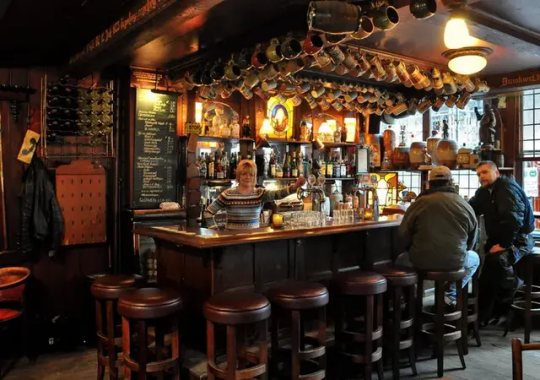
Location: Bloemstraat 42, 1015 TB Amsterdam, Netherlands
Cafe Chris is the oldest establishment in Amsterdam, founded in 1624 in the Jordaan district. Due to its dark interior, it is also called “Brown Cafe”. Once upon a time, workers who were building the Westerkerk bell tower came here for wages. The cafe still has old floorboards, backlit windows, and dark wood paneling.
Gran Caffe Quadri, Venice

Location: Piazza San Marco, 121, 30124 Venezia VE, Italy
The establishment opened its doors in 1638 - then it was called Il Rimedio. Malvasia wine was served here and was said to “invigorate the body and awaken the mind.” In 1775, merchant Giorgio Quadri and his wife Naxina, who arrived from Corfu, decided to invest in this cafe. This is how the history of Gran Caffe Quadri began. In 1830, management passed to the Vaerini brothers, who expanded the establishment by one more floor. In 2011, the Alaimo family bought the cafe. In 2018, Gran Caffe Quadri underwent a major renovation. The famous French creative and designer Philippe Starck was invited to transform it.
Cafe Procope, Paris
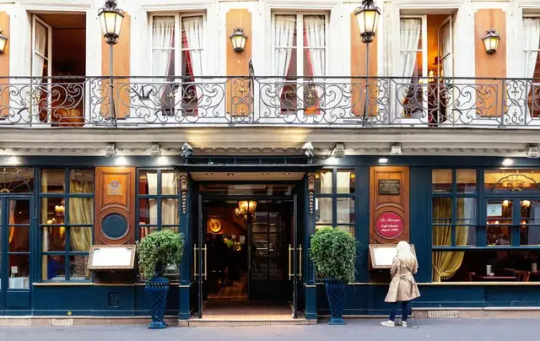
Location: 13 Rue de l'Ancienne Comédie, 75006 Paris, France
Café Procope is the first literary café in Paris. It was discovered in 1686 by Sicilian immigrant Francesco Procopio dei Coltelli - after whom it took its name. Following the traditions of the Procopio family, who ran the establishment for many years, the cafe serves sorbet and granita (crushed ice), the forerunners of ice cream. King Louis XIV appointed Café Procope as the exclusive producer of sorbets. Its famous visitors include Napoleon, Honoré de Balzac, Paul Verlaine, Victor Hugo and Voltaire.
Cafe Tomaselli, Salzburg

Location: Alter Markt 9, 5020 Salzburg, Austria
In the center of Salzburg, on the Alter Markt square, there is the Tomaselli cafe, perhaps one of the most famous in the world. Family-owned for centuries, this restaurant embodies stylish Austrian coffee culture. The first cafe was opened here in 1703, and in 1852 it was bought by Karl Tomaselli. Mozart and his wife Constance, playwright Hugo von Hofmannsthal, and composer Carl Weber loved to visit it.
Cafe Tomaselli recommends trying the Einspänner (double espresso with cold whipped cream) and Melange (an espresso-based coffee drink with the addition of heated and frothed milk and whipped cream).
Caffe Florian, Venice
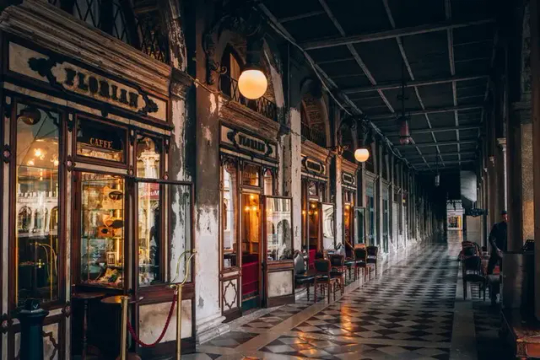
Location: Piazza San Marco, 57, 30124 Venezia VE, Italy
Caffe Florian is one of the first cafes in what is now Italy. It was opened in 1720 under the name Alla Venezia Trionfante. The establishment gained popularity due to the fact that both men and women could visit it - in those years this was very rare. Over time, the cafe began to be called Florian - in honor of the owner Floriani Francesconi. In 1760, the sales point for Venice's first newspaper, Gazzetta Veneta, was opened here.
At different times, the cafe was visited by Jean-Jacques Rousseau, Johann Goethe, Charles Dickens, George Byron, Giacomo Casanova, Ernest Hemingway and others.
Today, Caffe Florian offers more than 30 varieties of coffee drinks, many desserts, salads and light snacks.
Antico Caffe Greco, Rome
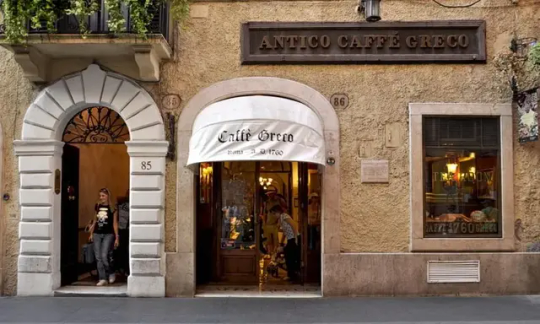
Location: Via dei Condotti, 86, 00187 Roma RM, Italy
Antico Caffè Greco is a historical café in Rome, opened in 1760. Its founder is the Greek Nicola della Maddalena. Over the centuries, the elegant Caffè Greco has been visited by Hans Christian Andersen, George Byron, Henrik Ibsen, John Keats, Mark Twain and others. Some 300 paintings, memorabilia and vintage photographs of famous clients adorn the walls of this establishment. And gilded mirrors and a piano help maintain an authentic atmosphere.
Caffè Al Bicerin, Turin
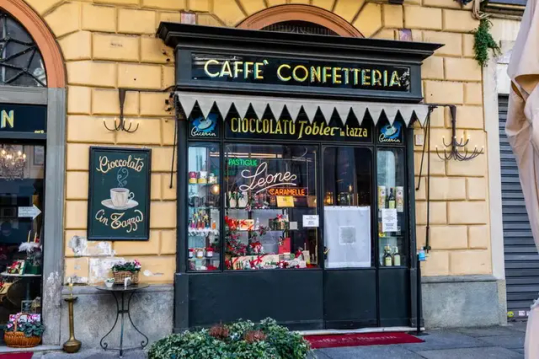
Location: Piazza della Consolata, 5, 10122 Torino TO, Italy
The history of the establishment began in 1763, when Giuseppe Dentis opened his small shop in the premises opposite the entrance to the Santuario della Consolata Cathedral. In 1856, the current building was built here according to the design of the architect Carlo Promis. And then the cafe acquired a more elegant form, which we can appreciate today - its walls were decorated with wooden panels, mirrors and lamps. It now has round white marble tables, a counter, and shelves.
This establishment was the birthplace of the famous Turin drink Bicerin - a mixture of coffee, chocolate, milk and syrup. Even Alexandre Dumas mentioned it in one of his novels.
El Fishawy, Cairo

Location: El-Gamaleya, El Gamaliya, Cairo Governorate, Egypt
El Fishawy Café is hidden in the heart of Khan Al Khalili Souk. Its doors opened to visitors in 1773. The first owner of the establishment served Turkish coffee to his friends after sunset. There were more and more people wanting to enjoy a cup of aromatic drink and discuss city news. And then the owner bought buildings nearby, added even more items and hookah to the menu. The current owners of El Fishawy, heirs of the founder, are trying to preserve the traditions and atmosphere of the establishment.
Cafe Tortoni, Buenos Aires, 1858

Location: Av. de Mayo 825, C1084 Buenos Aires, Argentina
Cafe Tortoni is considered the oldest in Argentina. It was opened by an emigrant from France in 1858 and named after the café of the same name in Paris. It is worth noting that the first premises of Cafe Tortoni were located on Avenida Rivadavia. The cafe moved to its current location in 1880. The owners have maintained the same style of the establishment throughout all the years of its existence. There is a tango room, as well as tables for playing billiards, dominoes and dice.
His most famous guests were Garcia Lorca, Jorge Luis Borges, Carlos Gardel, Hillary Clinton, Albert Einstein, Robert Duvall.
Café Gerbeaud, Budapest

Location: Budapest, Vörösmarty tér 7-8, 1051 Hungary
Café Gerbeaud is the most famous cafe in Europe, whose history began in 1858. Its founder is Henrik Kugler, a representative of the third generation of a dynasty of confectioners. He became the first to offer customers slices of his signature Coogler cake to-go in cardboard boxes. During a visit to Paris in 1882, Henrik Kugler met Emil Gerbaud - they soon became business partners. And later, a French confectioner entrepreneur bought the cafe completely.
With the advent of Gerbeau, many changes took place in the confectionery - the menu expanded, the equipment changed, and the staff increased. Café Gerbeaud became a favorite place not only among city residents, but also among city guests, since the prices here were affordable for absolutely everyone. After Emile Gerbeau's death in 1919, his wife ran the confectionery. From 1950 to 1984 the cafe was nationalized and was called Vörösmarty. In 1995, Café Gerbeaud was bought by German entrepreneur Erwin Franz Müller. The establishment was renovated and restored to its historical appearance.
Gran Caffè Gambrinus, Naples, Italy

Location: Via Chiaia, 1/2, 80132 Napoli NA, Italy
The legendary coffee shop is located in the center of Naples. The establishment was founded by Vincenzo Apuzzo in 1860 - his dream was to create the best cafe in Italy. The next owner was Mario Vacca in 1889. By that time, the premises were already in need of reconstruction. The owner of the cafe invited an architect and artists who worked on updating the interior. Their paintings and sculptures adorn Caffè Gambrinus to this day.
The establishment was once visited by Matilda Serao, Ernest Hemingway, Oscar Wilde, Guy de Maupassant, Princess Sissi, and Emile Zola. By the way, the tradition of caffé sospeso was born here - paying for coffee for the next customer.
Cafe de la Paix, Paris

Where is it: 5 Pl. de l'Opéra, 75009 Paris, France
Café de la Paix is located in the 9th arrondissement of Paris, at the intersection of Boulevard des Capucines and Place de l'Opéra, in the building of the Le Grand Hotel. The hotel and cafe were opened in 1862 with the financial support of the Pereire brothers. The Café de la Paix gained its first international reputation in 1867, serving the International Exhibition.
The establishment, located next to the Opera Garnier, attracted many famous personalities. Pyotr Tchaikovsky, Jules Massenet, the Prince of Wales and Edward VII visited here. In 1896, Eugene Piroux held film screenings at the Café de la Paix, and later a radio studio was organized there.
Just like 150 years ago, today the restaurant is also very popular. Salads, hot dishes, snacks and desserts are served here.
Café du Monde, New Orleans
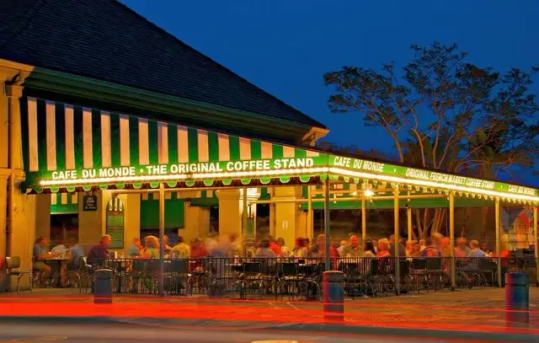
Location: 800 Decatur St, New Orleans, LA 70116, USA
Café du Monde is a true New Orleans landmark. The establishment has been in business since 1862 and always serves dark roasted chicory coffee, milk (regular or chocolate), fresh orange juice, hot chocolate and French donuts (beignets).
Cafe Landtmann, Vienna
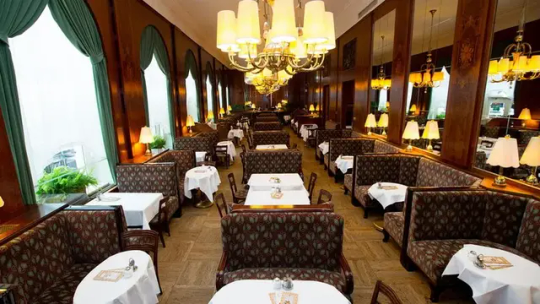
Location: Universitätsring 4, 1010 Wien, Austria
Café Landtmann is the oldest in Vienna. Guests began to be received here on October 1, 1873. Franz Landtmann dreamed of opening not just a coffee shop, but the most elegant place in Vienna. And he did everything for this - visitors were delighted with the innovative spirit of the establishment. Years passed, the owners changed, but this place was always popular among citizens and guests of the capital. In the 1970s, Cafe Landtmann was threatened with closure, but thanks to the efforts of the new owners, it was saved.
Baratti & Milano, Turin
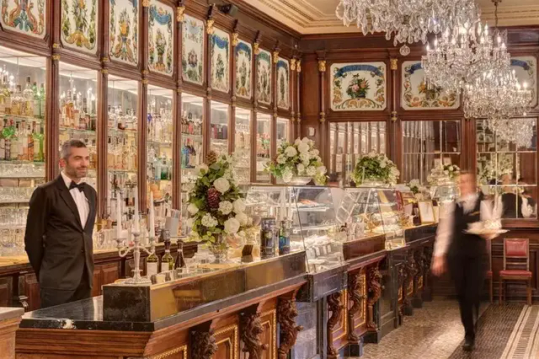
Location: Piazza Castello, 27, 10123 Torino TO, Italy
Caffè Baratti & Milano is a historic café in Turin, opened in 1875 in the central Galleria Subalpina. The establishment owes its name to two pastry chefs from Canavese: Ferdinando Baratti and Edoardo Milano. Soon after its opening, Caffè Baratti & Milano became a meeting place for the intelligentsia and the bourgeoisie. Its success has grown to the level of "official supplier of the Royal House".
The current appearance of the restaurant is the result of reconstruction in 1909. The room has a lot of marble, bronze, stucco, gilding and wide mirrors, which give this place a rich artistic appearance. The cafe was damaged during the Second World War, but was restored in 1948.
Caffè Baratti & Milano offers its visitors more than 20 types of coffee drinks, tea, light snacks, pastries and sweets.
Cafe Central, Vienna

Location: Herrengasse 14, 1010 Wien, Austria
The Central coffee shop is the most popular place in Vienna and is included in all must-see lists in this city. There are always long queues here - people come here to drink delicious coffee, eat strudel, listen to live music and just enjoy the atmosphere.
Cafe Central was founded by the Pakhi brothers in 1876. Over time, the establishment became a popular place where cultural representatives loved to come. His regular guests were Egon Friedel, Peter Altenberg, Adolf Loos, Alfred Adler, Leon Trotsky and others.
After World War II, Cafe Central closed. In 1975, the Ferstel Palace, where the establishment was located, was completely renovated. After this, the cafe reopened its doors to visitors.
Cafe Sacher Wien, Vienna
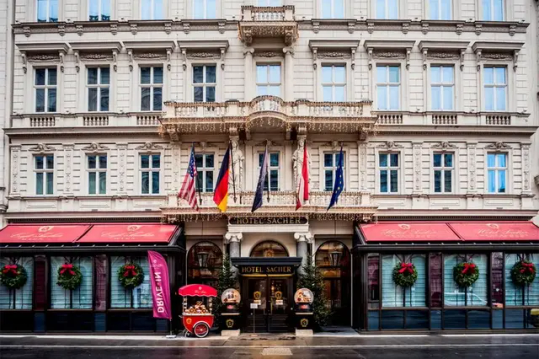
Location: Philharmoniker Str. 4, 1010 Wien, Austria
Another must-visit place in Vienna is the famous Sacher Wien café. After all, this is where they serve Sachertorte, made according to the classic recipe. In 1876, the Sacher family opened a hotel next to the Vienna Opera, which operated a café. It became a place where it was customary to have dinner before attending the opera - writers, artists and high-ranking officials met here.
Today, Cafe Sacher Wien is still very popular, as evidenced by the long queues.
Les Deux Magots, Paris
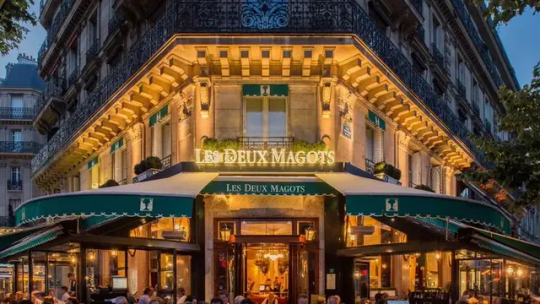
Where is it: 6 Pl. Saint-Germain des Pres, 75006 Paris, France
Les Deux Magots is a famous Parisian cafe located in the luxurious Saint-Germain-des-Prés quarter. It opened its doors to visitors in 1884. Originally a novelty store was located here, later coffee liqueurs were sold on this site. By 1914, the company was on the verge of bankruptcy, and was bought by Auguste Boulet for his cafe. His heirs still manage the establishment to this day.
Since then, Les Deux Magots has played an important role in the cultural life of the capital - writers, poets, artists and other intellectuals gathered here. Among the guests in the cafe one could meet Pablo Picasso, Bertolt Brecht, Albert Camus. The establishment has been described more than once in literary works and shown in films.
Cafe de Flore, Paris
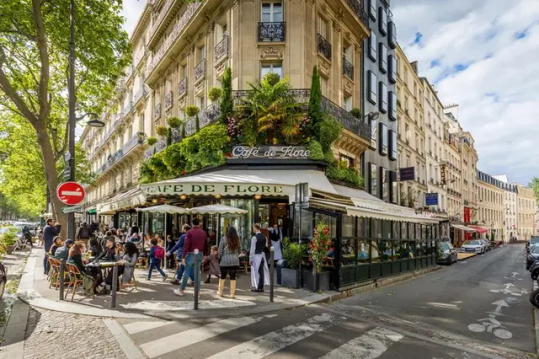
Location: 172 Bd Saint-Germain, 75006 Paris, France
Cafe de Flore was opened in 1887 in the 6th arrondissement of Paris, on the corner of Boulevard Saint-Germain and Rue Saint-Benoît. The interior of the establishment, in the classic Art Deco style, has remained virtually unchanged since World War II. Since its opening, intellectual audiences have met here. Among the famous guests at Cafe de Flore were Robert Desnos, Pablo Picasso, Georges Bataille. By the way, Charles Maurras wrote his book Au signe de Flore while sitting on the first floor of the cafe.
The restaurant's menu includes breakfasts, salads, cheeses, hot dishes, drinks and desserts.
Cafe Comercial, Madrid

Location: Glorieta de Bilbao, 7, 28004 Madrid, Spain
Café Comercial is located in the Glorieta de Bilbao square. It was founded by Antonio Gomez Fernandez in 1887.
Read the full article
1 note
·
View note
Text
The best surf spots in the world
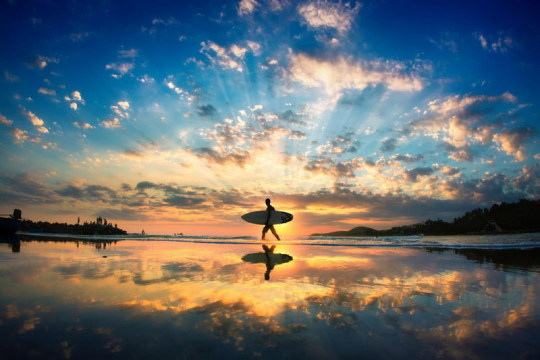

It is believed that the inhabitants of Hawaii were the first to ride the waves using a special board back in the 4th century AD. Nowadays, surfing has turned from an ordinary sport into a real philosophy. It allows you to feel unity with the vast ocean, believe in yourself and get out of your comfort zone. The best places for surfing are extremely popular - there are ratings of countries and beaches around the world that every rider in love with the sea should visit. After all, a dizzying flight on the crest of a wave is one of the few ways to experience an incomparable feeling of freedom.
Ocean Beach, San Francisco, USA

Best time to visit: March-August
The West Coast of the United States is famous for its excellent waves, and some beaches, such as Ocean Beach, are ranked among the best surf spots in the world. San Francisco is surrounded by water, and athletes have plenty to choose from. Constant waves and a huge variety of breaks allow everyone to ride, regardless of their level. And in this list, Ocean Beach definitely takes an honorable first place in extreme sports and beauty. Here, giant walls and pipes force you to strain all your strength to stay on the board, and the picturesque panorama of the ocean expanses with the majestic Golden Gate Bridge rising above the water makes you freeze with delight in the pauses between waves.
Jeffreys Bay, South Africa

Best time to visit: May-August
J-Bay's epic waves have long been a legend among professional surfers. There are very few places in the world where you can find a pipeline like this, which is a real wall of water reaching 2-3 meters in height. The season here lasts almost all year round, and the epic marine views combined with a pleasant climate and friendly atmosphere make Jeffreys Bay and its famous Supertubes one of the best surf spots in the world.
Popoyo, Nicaragua
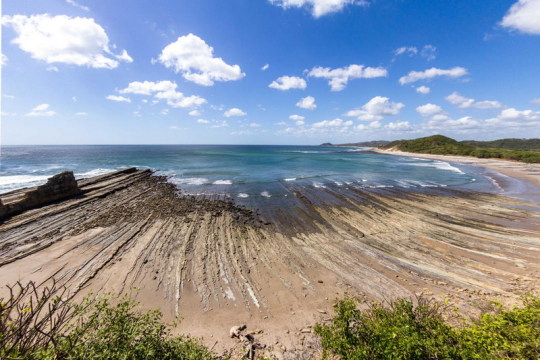
Best time to visit: December-April
Popoyo is a very popular surfing spot among professionals. A beginner just starting to master the board will have a hard time - hurricane winds on the coast create powerful waves, and the incredibly strong Pacific current can pose a threat to life. However, Popoyo has a relatively calm bay suitable for beginners. Here you can not only learn the basics of surfing, but also ride a horse along uncrowded beaches, relax in a cafe on the shore, admiring the incredibly beautiful ocean landscape against the backdrop of harsh rocks.
Mentawai Islands, Indonesia

Best time to visit: April-October
The Mentawai archipelago has 70 islands, and many of them have great surfing spots. Legendary surf breaks for masters can be found on Pagi, Siparo and Siberut - such famous spots as Bankvaults and Macaronis. Beginners will enjoy the calm beaches on the island of Sumbawa, where there are practically no big waves.
The Mentawai Islands are not only one of the best surf spots in the world, but also vibrant resorts that rival the beauty of picturesque Bali or vibrant Sumatra. Surfers, lovers of diving, snorkeling and relaxing holidays among enchanting tropical nature come here.
Nazare, Portugal

Best time to visit: October-March
The giant waves of Nazaré became legendary after Hawaiian rider Garrett McNamara managed to overcome a wave here that was almost 24 meters high. As a result, Praia do Norte beach has become considered one of the best surfing spots in the world - now the WSL Big Wave Contest is held here every year.
Riding in Nazar is recommended only for experienced athletes. And if in the summer even beginners can test their skills, in the winter only real professionals can cope with the biggest waves on the planet.
Gold Coast, Queensland, Australia (Gold Coast, Queensland, Australia)

Best time to visit: December-February
The magnificent beaches of the Gold Coast became famous back in the 60s of the last century. The coast's unique waves, which create ideal surfing tubes and walls, began to attract athletes and enthusiasts from all over the world here after the release of the film "Eternal Summer", which became a cult favorite in their community. Most surfers visiting the Gold Coast choose to stay in the Gold Coast, which has become one of Australia's premier destinations due to its excellent conditions for a variety of water sports.
The total length of the Gold Coast is about 70 km. There are a lot of difficult areas here, so loved by professionals, and beginners can easily find beaches with relatively small waves. You can ride on the Gold Coast all year round, but experienced athletes prefer to come here during the winter months, when the ocean is especially choppy.
Skeleton Bay, Namibia

Best time to visit: December-April
The cold and windy coast of Skeleton Bay is a real test for professionals. Powerful surf that does not allow you to calmly enter the water, sharp gusts of wind and huge waves will bring a lot of joy to experienced surfers who love to fight the elements and achieve victory at any cost. In addition, riding here is quite dangerous due to the sharks that regularly visit the bay. But despite all the difficulties, Skeleton Bay is popular among professionals who love adrenaline.
The wave length in the bay can reach 2 km - this place is considered the longest left-hand surf break in the world. An experienced rider is able to ride 6 pipes in a row on one such wave thanks to the incredibly strong current. Due to difficult weather conditions, skiing in Skeleton Bay requires a wetsuit and, from May to November, boots.
Oahu, Hawaii
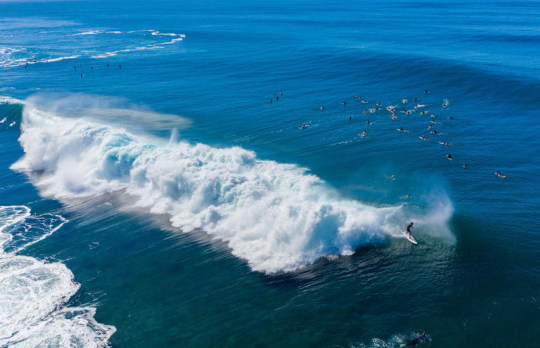
Best time to visit: November-February
The north coast of Oahu is a paradise for surfers who come to Hawaii in search of thrills. It is not surprising that this sport originated here - the huge waves are simply ideal for riding a board. On the list of the best beaches in the world for surfing, Banzai Pipeline and Backdoor Surf are at the top positions. Not everyone takes the risk of skiing here - since ancient times, only true masters have dared to conquer the pipes and walls of the Banzai Pipeline. And now, despite sophisticated technology and modern equipment, the exceptionally heavy ten-meter backdoors of Banzai Pipeline make even world surfing champions nervous. Of the 36 unique surf breaks on Oahu's North Shore, dubbed the "Seven Mile Wonder", this stretch definitely deserves the title of the best surf spot in the world.
With plenty of reef flats, the North Coast provides some more great surfing opportunities, including Turtle Bay and Waimea Bay, known for their powerful waves. For beginners, the best option would be to head to the beaches of Waikiki. Unlike most surf breaks on Oahu's North Shore, the ocean here is much calmer.
Byron Bay, New South Wales, Australia
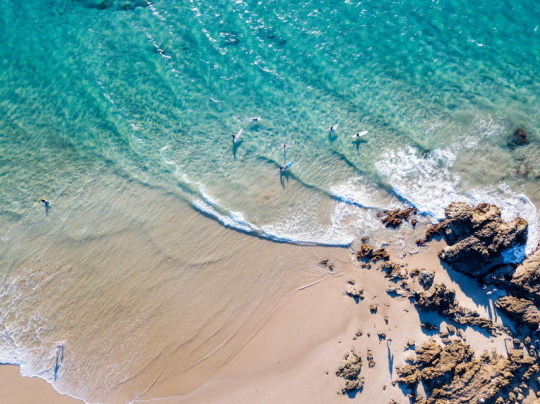
Best time to visit: June-August
Cozy Byron Bay is about 70 kilometers of clean sand and powerful waves that do not subside for 12 months. The beaches of the bay are perfect for surfers of any level - both professionals and those who are just starting to learn the basics come here. Beginners should choose beaches patrolled by lifeguards for skiing - strong waves and emerging currents can pose a danger. In addition, you must pay attention to notifications from the coast service - blue jellyfish and great white sharks often swim into the bay. Despite the presence of protective nets, they can reach the coastline.
Teahupoo, Tahiti

Best time to visit: November-April
Tahiti is known for its resorts, but the southern coast of the island is most popular among athletes. Teahupu is one of the best places in the world for surfing, despite the fact that the coastline is practically undeveloped and its wild beaches can only be reached by boat. If you don't want to live in a tent, you can stay at one of the surf campsites - for example, Tahiti Beachcomber or Papara Beach Campsite.
Giant waves up to 30 meters high are ideal for surfing. Beginners will have a hard time here due to the shallow water - the walls often break, which means staying on the climb and reaching the ridge will be a very difficult task. Despite this, Teahupoo is popular with beginners in June - August, when the winds die down and the waves become smaller, providing an opportunity to learn basic surfing skills.
Uluwatu, Bali, Indonesia
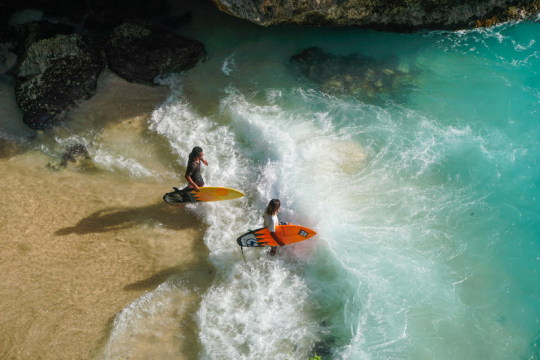
Best time to visit: April-October
Uluwatu beaches are considered the best surfing spot in Bali, but they are not suitable for beginners. Not very large, but powerful and complex waves in this region force even experienced surfers to strain their strength. In addition, there is an incredibly strong current here, which makes skiing much more difficult. But if you feel confident on the board, you should definitely come here to try your hand at it. The festive and incredibly friendly atmosphere of Uluwatu, combined with extreme challenges on the waves, will definitely be remembered for a long time.
Florianopolis, Brazil
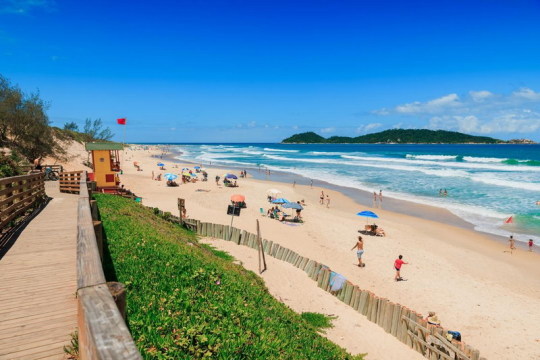
Best time to visit: December-April
Florianópolis has more than 40 beaches, and their total length is approximately 1,500 km. The best surf spots are located around the island's capital, Santa Catarina. Due to the unique climatic conditions, there are waves all year round, and thanks to the vibrant tropical beauty and wide variety of surf breaks, the coast can easily lay claim to the title of one of the best surfing spots in the world.
Beginner athletes usually ride on the beach of Barra da Lagoa. There are no strong waves that make orientation difficult, and you can choose between right and left breaks. For professionals, the beaches of Praia Mole and Praia da Joaquina are more suitable, where the waves are higher and less predictable due to frequent wind changes.
Buxton, North Carolina, USA

Best time to visit: December-February, partly May
The best surfing beach on the Atlantic Coast of the United States is named after the Old Lighthouse Beach lighthouse overlooking Cape Hatteras. This is an open point break with long and fairly powerful waves that do not require special qualifications.
It does not work very often - those who want to ride the wave will have to wait for the westerly wind. The water here is quite cool, so a wetsuit will be required.
Surin Beach, Phuket, Thailand
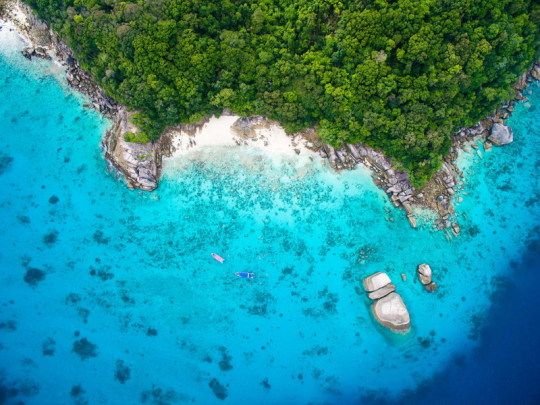
Best time to visit: May-October
Despite the fact that Thailand is not on the list of the best places for surfing, there are also opportunities for those who like to ride the crest of a wave. One of the most suitable places for this is Surin Beach on the island of Phuket. The cozy and very beautiful coastline, almost 1.5 km long, is perfect for beginners. The waves here are small, but quite stable, although there are days of complete calm. It’s best to ride in the evening, when the heat subsides, the wind rises, and the colorful sunset enhances the feeling of unity with nature.
Black's Beach, San Diego, California, USA

Best time to visit: all year round
Black's Beach is the most extreme surf spot in California. There is nothing to do here not only for beginners, but also for those who have begun to feel more or less confident on the board. The best surfers in San Diego gather at Black's Beach, and athletes from all over the state come here on weekends. The sharp wind and fast currents create high and very difficult waves that are difficult for even a professional to ride. Another advantage of the beach is the almost complete absence of people, with the exception of small groups of nudists.
Bundoran, Ireland

Best time to visit: December-February
Bundoran has a strong claim to being the best surf spot in Europe. Huge waves here can reach heights of 50 m, although in many areas they are much smaller. Such diversity makes this natural corner of Ireland attractive to both professionals and beginners. At Bundoran, everyone can choose a spot that suits their skills - from rough elements to flat, gentle waves. The main thing is to have a warm wetsuit with you, as the water in this region is very cold even in the hot summer months, not to mention the winter when surfers flock here.
Killer Point, Taghazout, Morocco
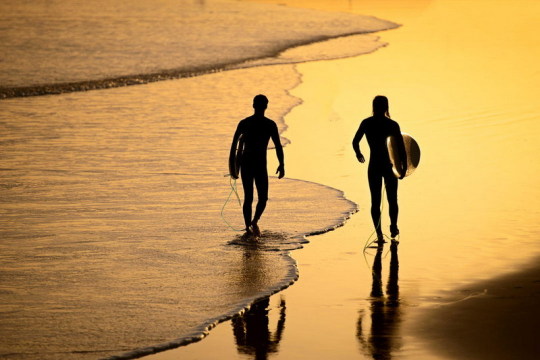
Best time to visit: November-March
The Killer Point surf spot gets its scary name from the killer whales that often swim into the region. Nevertheless, skiing here is still quite dangerous - sharks are found in this area, and long and powerful waves near the shore crash against the rocks.
Beginners should go to other spots - there are quite a lot of them nearby, but professionals will definitely like the adrenaline-filled Killer Point. The waves here reach 1.5-3 meters, and the strong and changeable current will add to the pleasure. It is necessary to take into account that despite the hot weather, it is worth having a wetsuit with you - it will protect against sunburn and rather cool, especially in season, water.
Hanalei Bay, Kauai, Hawaii
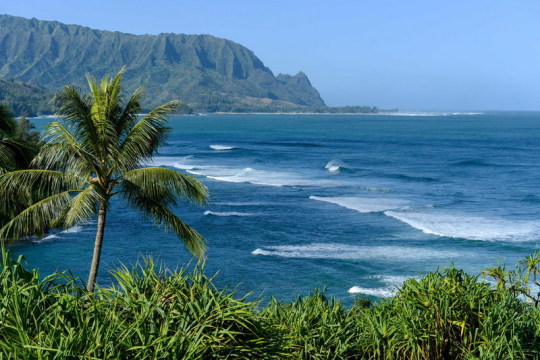
Best time to visit: all year round
Horseshoe-shaped Hanalei Bay has the kind of tropical beauty that can only be found in Hawaii. Wild rocks, a stormy ocean sparkling in the sun and waterfalls flowing among exotic greenery make an indelible impression. Additionally, Hanalei Bay is known for its consistently consistent top tube waves. The bay is large enough to offer areas of varying difficulty. There is a place for both professionals and beginners - which is why Hanalei Bay can easily be called one of the best places in the world for surfing.
Pedra Branca Ericeira, Portugal

Best time to visit: October-May
Pedra Branca Ericeira Beach is located about 50 km from Lisbon, next to a small fishing village turned surf town. Now this zone has the status of a nature reserve - the only one of its kind in Europe and the second in the world. Its main difference from most European surf points is several powerful reef breaks, which create huge waves.
Only professionals are recommended to surf here - it was in Pedra Branca Ericeira that the first Portuguese surfing championship was held.
Siargao Island, Philippines
Read the full article
1 note
·
View note
Text
Chinese cuisine - the secret weapon of the Celestial Empire

China is rightly considered one of the civilizational cradles of humanity. It has given the world many scientific inventions and cultural treasures, and its historical and geopolitical influence simply cannot be overstated. But the real phenomenon of this country is its cuisine.

The famous scientist and archaeologist Kwan-Chi Chang said that the people of China attach great importance to food. And he was absolutely right. Food is truly at the center of every social interaction here. Family members, colleagues, business partners, and top-ranking politicians gather around the set table to eat and communicate. A huge number of religious and everyday rituals in the Middle Kingdom are also associated with food. And in the end, it is Chinese cuisine that is one of the main “agents of influence” on the spread of the culture of the Middle Kingdom far beyond the borders of the country.
Philosophy of Chinese cuisine

The art of cooking in this country has been perfected over five thousand years. The greatest ancient philosopher and thinker Confucius said that food in China is one of the three main conditions for government, along with the army and the trust of the people. It was he who, back in the 6th century BC, established culinary standards that exist in Chinese cuisine to this day, and determined many aspects of table etiquette. Taoism, which was spreading in the country during the same period, influenced the formation and development of the idea that properly prepared food could have medicinal value. All this made it possible to turn the cuisine of the Celestial Empire into high art.
If we summarize the thousand-year philosophy of food culture in China into several theses, they will sound like this:
- Food and its preparation techniques should correspond to the time of year.
- Selecting the highest quality ingredients is one of the key skills of a good cook.
- Each dish has its own history and rituals for its consumption, which an educated person should know in order to fully enjoy it.
- Medicine and food come from the same source.
- Perfect cutting of ingredients is the basis of proper cooking.
- The balance of five tastes - sour, sweet, bitter, spicy and salty - allows you to create harmony in the dish.
- It is worth choosing the simplest and most rational culinary technique that will preserve the nutritional value and natural taste of the products.
- Huohou - Controlling cooking temperature and time is the key to a cook's success or failure.
- The aesthetics of food presentation are as important as its taste.
The main regional cuisines of the Middle Kingdom

The territory of China is vast, very diverse in its geographical characteristics and is located in four climatic zones - equatorial, tropical, subtropical and temperate. Therefore, in different parts of China, residents have access to unique local ingredients for cooking, and there are also special preferences in combinations of tastes and the choice of spices, culinary customs and traditions.
Among dozens of regional cuisines of the Celestial Empire, it is customary to single out 8 of the most influential and famous.
- Cantonese is the most popular and widespread outside of China. The dishes prepared in Guangdong and Hong Kong are characterized by fresh, mild and natural flavors. A variety of sauces are actively used here to add sweet notes to the food.
- Szechuan is incredibly popular in China itself. It is famous for its hot, spicy and rich dishes, which always contain a lot of chili, garlic, ginger and, of course, Sichuan pepper.
- Fujian (Ming cuisine) - famous for dishes prepared from wild plants and mushrooms, as well as seafood. Its masters are recognized as virtuosos of cutting and creating textures, and the local menu includes many broths and soups.
- Shandong (Lu cuisine) - common in the east and northeast of the country. Its tastes are umami (inherent in high-protein foods), salty and sweet and sour. Many wheat dishes are eaten here, as well as seafood and soups.
- Jiangsu (Su cuisine) is very diverse. It is characterized by an exquisite and colorful presentation of dishes, the desire to preserve the original taste of the ingredients, as well as a large amount of fish and seafood on the menu.
- Anhui is especially attractive because its recipes contain a lot of wild plants, and therefore fresh flavors. The most common cooking methods here are stewing, simmering and steaming. Fried food is served quite rarely.
- Zhejiang (Zhe cuisine) - actively uses bamboo shoots, freshwater fish and seafood. Her menu includes many minimally processed dishes, delicate and light flavors and crunchy textures.
- Hunan is the most spicy, hot and sour. The main seasoning here is chili pepper. Its cooks are not shy about the abundance of smoked meats, as well as pickled and canned vegetables.
Traditional Chinese dishes that have conquered the world

The variety of dishes in China is so great that it can shock an unprepared traveler. It's hard to choose when each item on the menu sounds even more appetizing than the previous one. But traditional Chinese dishes, with a rich palette of flavors and ancient history, are known and loved by the whole world.
Peking duck bei jin hao (Beijing Kaoya)

Peking duck is the favorite Chinese food of all foreign tourists coming to the capital of the Middle Kingdom. In the Middle Ages, she was the star of imperial cuisine. The first restaurant specializing in this type of meat appeared in Beijing in 1416. And in the 1970s, Beijing Kaoya received the status of a national dish to welcome foreign guests.
It takes three days to prepare Peking duck, and eating it is a real ritual. The cook serves the bird whole to show off its perfectly cooked, crispy skin. Next, in the presence of guests, it is cut into 120 thin slices. They are eaten one at a time, placed on a translucent rice pancake, adding cucumber cut into long strips, shallots, sauce and rolling into a roll. Visitors can serve the remaining parts of the duck in broth with Chinese cabbage and soft tofu.
Dim Sum

Dim sum is not a specific Chinese dish, but a whole category of them. This is the name for light snacks, laid out on separate plates in small portions, which are usually consumed with morning or afternoon tea. This tradition originated in the city of Guangzhou and is especially popular in southern China. There are even cafes and restaurants that only serve dim sum. There are more than a thousand similar Chinese snacks. These can be different types of dumplings and steamed buns, pies, tarts and other pastries, rolls with sweet or savory fillings, seafood, rice with several filling options, meat (for example, fon zhua chicken feet), beautifully served fruits, vegetables, small desserts .
Chinese hamburger Rou Jia Mo

The Chinese hamburger zhou jia mo claims to be the oldest such dish on the planet. His recipe appeared in Shaanxi province during the Qin Empire (221–206 BC) and spread throughout the Celestial Empire. An easy-to-make and satisfying meal, the crispy bai ji mo bun is cut open and filled with succulent pieces of braised pork belly. The unique taste is given to it by the special seasonings with which the meat is cooked. Rou Jia Mo is often sold as street food and makes an excellent snack.
Chao Fan Fried Rice

Chow fan is one of the most common Chinese dishes. And the fact that all the housewives of the Celestial Empire prepare it from the remains of boiled rice and everything that was found in the refrigerator does not at all prevent it from occupying an honorable place in the menu of a huge number of restaurants. The main ingredients of chow fan in the classic version, in addition to rice, are finely chopped pieces of meat and vegetables, to which eggs, soy sauce and garlic are added during frying in a deep frying pan.
But the truly iconic version of this dish is Yangzhou fried rice, which includes seafood (crab meat, shrimp, sea cucumber and scallops), pork, duck or chicken, eggs, carrots and bamboo shoots.
Jiaozi dumplings

Jiaozi dumplings are incredibly popular in Chinese cuisine. There is a theory that their recipe was invented at the beginning of the 3rd century by one of the most prominent doctors of the Han Dynasty - Zhang Zhongjin. He used this simple and nutritious dish to restore strength and warm the poor who were cold and had frostbitten ears in winter. That is why jiaozi have such a unique shape, resembling an ear.
Now dumplings are not a seasonal food, but they are a traditional Chinese food during Lunar New Year celebrations. The most common fillings for jiaozi are minced chicken, beef, pork, shrimp and fish, which are mixed with various vegetables. Dumplings are boiled, steamed, deep-fried, pan-fried, and served as dumplings in soup.
Wontons

Wontons are a type of Chinese dumpling that originated during the Tang Empire (618-907 AD). And in the 12th century, the custom arose of eating them in honor of Dongzhi, the winter solstice holiday. They are prepared from very thinly rolled wheat dough with a small amount of filling. Moreover, each region of China has its own recipe and shape of wontons.
In Guangdong, dumplings are filled with a mixture of minced shrimp and pork and served in a flavorful broth with thin egg noodles and leafy vegetables as a side dish. In Hong Kong, wontons are fried in oil until crispy. In northern China, the dough is filled with bok choy and minced red meat. In Shanghai, it is made from pork and the leaves of a plant called shepherd's purse, and the dumplings are served in chicken broth.
Ma Po Tofu

Ma po tofu is a popular Sichuan dish with a distinctive hot and spicy flavor. Its name is a funny play on words, since “ma” is translated from Chinese as “pockmarks”, “po” - as “grandmother”. This means Ma Po Tofu is “pockmarked grandma’s tofu.” The dish is made from silky medium-hard soy cheese, cut into cubes, and finely chopped beef or pork. And its main secret is its thick dark red sauce. It contains Doubanjiang paste, fermented black soybeans, chili oil and flakes, garlic, ginger, rice wine and, of course, Sichuan pepper, which has the property of numbing the tongue and reducing its sensitivity to spicy seasonings. The hot dish is sprinkled with green onions before serving.
Chow mein noodles

Chow Mein means "fried noodles" in Cantonese. And this is another dish that can be found with equal success in the kitchen of any resident of the Middle Kingdom, and on the menu of a popular restaurant far beyond the country’s borders. Egg noodles are boiled until half cooked, cooled and fried until golden brown with a variety of fillings. Most often it is chicken, beef, pork or shrimp, tofu, vegetables, bean sprouts and green onions. And for an expressive and piquant taste, spices, soy and oyster sauces, sesame oil and sugar are added to the dish.
Sichuan Pork Shui Zhu Rou Pian

Shui zhu is the name of a dish creation technique in Sichuan cuisine that is used for meat and fish. To prepare shui zhu rou pian, take a pork loin or tenderloin, remove excess fat and cut it across the grain into small pieces. They are coated with a mixture of egg white and starch and lowered into simmering water for 20-30 seconds without stirring. Then the meat is removed, placed on top of boiled vegetables and seasoned with chopped garlic, chili, Sichuan pepper, sesame seeds and green onions. And finally, pour over highly heated vegetable oil in a frying pan. Szechuan pork cooked this way is incredibly tender and juicy.
Spring rolls (Chun Juan)

The history of this dish goes back more than three thousand years. Since ancient times, thin, almost transparent pancakes made from rice flour filled with vegetables and herbs freshly picked in the new year were eaten on the first day of spring, which Chinese astrologers determined by the cycles of the Sun. Over time, the dish turned from seasonal to everyday. But the story is preserved in the title. Its international version (spring roll) is called Chun Juan in Chinese and literally means “spring roll”.
Spring rolls are prepared in all regions of China, but they are especially popular in the south of the country. In addition to vegetables, minced meat, mushrooms, seafood and sweet red bean paste can be used as filling. One way to prepare them, more common in Hong Kong and Macau, is to fry them in a pan or deep-fry them. The rolls are served with dipping sauce.
Sweet and sour pork Tang Cu Li Ji

Chinese sweet and sour pork is an incredibly popular dish both in the country and abroad. However, most foreigners do not even suspect that there are several variants of it that arose at different times in different parts of the Middle Kingdom. Most often in Chinese restaurants in Europe and America you can find Cantonese-style sweet and sour pork Gu Lu Rou or a dish called Guo Bao Rou. It was invented in 1907 by a chef from the city of Harbin specifically for foreigners living there. And real Chinese food is the ancient and authentic version of sweet and sour pork Tang Cu Li Ji.
All these variations of the dish are united by cooking technology. The meat is cut into pieces, dipped in starch batter and fried in a deep frying pan, first over low and then over high heat. This allows the pork to get a golden crispy exterior but remain soft and tender on the inside. A sauce with sour and sweet ingredients gives the meat a special taste.
Hot pot hot pot (Huoguo)

Hogo is not the name of a dish, but a culinary technique that is incredibly popular in China. A special cauldron with a flat bottom, divided in half by a partition, is installed on a portable stove in the center of the table. A light, light broth is poured into one part of it, and a richer, darker and spicy broth into the second. Bowls with a variety of ingredients for cooking are placed around the cauldron - vegetables, mushrooms, herbs, sprouts, fish, meat, seafood, tofu, noodles and dumplings. The participants of the feast sit around and take turns putting the foods they like into the cauldron.
This is the best Chinese food to enjoy not only a meal, but also socializing in a pleasant company. And if previously Hot Pot was used mainly in cold weather, now it appears on tables in any season.
Baozi filled buns
Read the full article
0 notes
Text
40 most beautiful places on Earth

Our world is filled with indescribable beauty, both man-made and natural. It is difficult to say whether one life is enough to see all the wonders of earth. But we want to look at 40 most beautiful places around the world that are definitely worth visiting.
1. Bagan, Myanmar
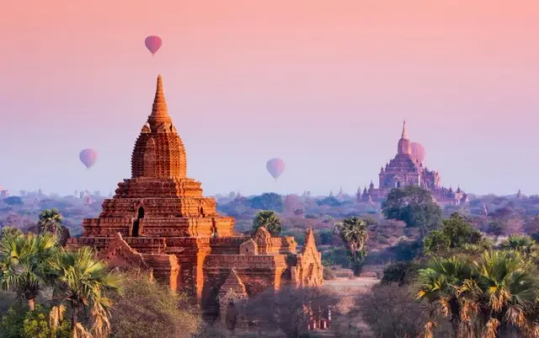
Bagan is the capital of the first state in Myanmar. During its heyday, more than 10 thousand religious buildings were built on the local plains; today, in the abandoned temple complex there are more than 2 thousand ancient Buddhist temples. Ancient pagodas, temples, sacred caves and stupas, located in the bend of the Irrawaddy River, preserve the memory of the former capital of the Burmese Empire. Bagan is an amazing and eclectic sight: the temples are built from limestone, sandstone, marble, with tiles and underground galleries - and each is at least somewhat different from its neighbors.
2. Colored rocks of Zhangye Danxia in Gansu Province, China

Zhangye Danxia Colored Rocks are colorful rock formations in the Geological Park in Gansu Province, China. These formations represent a unique type of petrographic geomorphology and are composed of Cretaceous red sandstones and conglomerates. Today, the Zhangye Danxia Colored Cliffs Scenic Area is popular with travelers from all over the planet, who come here to enjoy scenic walks and boat rides through the area. which are also home to a number of temples.
3. Li River, China
The Li River is one of the most picturesque places in China. National Geographic magazine included the River Lee in its list of ten water wonders of the world. The Li River is often called the “pearl of China”, and residents of the city of Guilin, which is located on the banks of the river, consider it the soul and heart of their city. The river passes through the world's largest and most beautiful karst landscape. The most picturesque part of the river is an 83-kilometer section located between the cities of Guilin and Yangshuo. The landscape is adorned with green hills and steep cliffs that are full of fantastic caves.
4. Monastic complex of Meteora, Greece

Meteora is a famous monastery complex that occupies a vast area near Kalambaka, which is located in northern Greece. What is unique is that the buildings are located on the giant rocks of Thessaly - they are called “meteoros”, which is translated from Greek as “hanging in the air”. The territory has been known as a place of hermitage since the eleventh century - the rich history of centuries attracts pilgrims and travelers from all over the world.
5. Salar de Uyuni - the world's largest salt flat, Bolivia
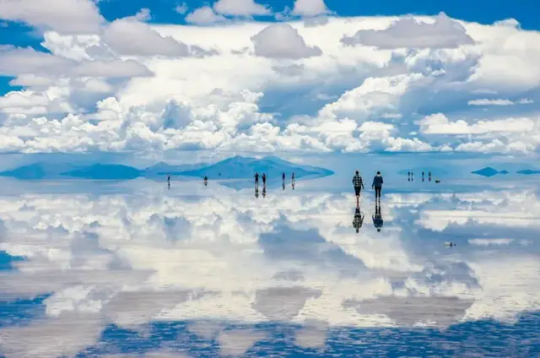
The Salar de Uyuni, or Uyuni Salt Desert, is a dry body of water and the largest salt flat in the world. Once upon a time, the Salar de Uyuni was an integral part of a prehistoric salt lake that occupied much of southwestern Bolivia. After the reservoir dried up, it turned into several small seasonal lakes and salt marshes. The unparalleled beauty and atmosphere of this salt desert makes it one of the most impressive natural attractions in all of South America.
6. Tianji Mountains, China

Everyone has seen landscapes like this in movies like Avatar. Such mountains are typical for the fantasy style, where the action takes place on an unknown, distant planet. But the Tianji Mountains are absolutely real and are located in the Hunan province of China. Huge marble spiers soar hundreds of meters into the air from the base. Visitors can take the cable car to see all these wonders up close.
7. Santorini Island, Greece

Santorini is a magical island located in the Aegean Sea, in the very south of the Cyclades Islands. Santorini is more than 3,500 years old, and traces of ancient civilizations constantly remind us of the rich past of the archipelago. But here the last thing you want to think about is time: relaxation surrounded by volcanic landscapes, amazingly blue seas, well-groomed beaches with colorful sand and postcard houses with snow-white facades is truly serene. People come here to admire the sunsets, enjoy the moment, and regain inner harmony lost in the eternal rush and bustle.
8. Giant Angkor Temple Complex, Cambodia

Angkor Wat, dedicated to the Hindu god Vishnu, is the largest religious building in the world. This is a complex three-level structure with many stairs and passages, topped with 5 towers. It is not for nothing that the temple is called the soul of the Khmer people, because Angkor exactly represents Khmer art, a great civilization, the heart of the nation. In total, the territory covers more than 400 sq. km there are about 200 monuments.
9. Yosemite Valley, USA

Yosemite National Park is located on the western slopes of the Sierra Nevada range in California. This ridge stretches across all of California, its height increases from west to east. Yosemite Valley occupies only one percent of the park's total area, but it is where most visitors flock. One of the most popular sites in the world among rock climbers with routes of varying difficulty levels is the granite rock El Capitan, 2307 m above sea level, clearly visible from any part of the valley.
10. Hitachi National Seaside Park, Japan
Hitachi National Park is an amazing example of landscape design. Flower fields stretching beyond the horizon are located on the territory of a former American military base. In the place where armed troops were once based, tulips, poppies, daffodils, forget-me-nots, lilies and sakura are now blooming in lush colors. A feature of the huge park, spread over an area of 120 hectares, is its adherence to the natural seasons: spring, summer, autumn and winter have their own floral covers.
11. Sagano Bamboo Forest in Kyoto, Japan

The Sagano Bamboo Forest is an amazing bamboo grove containing thousands of thin and tall bamboo trees. The forest is one of Japan's most scenic natural attractions, and it is located in the western part of the city of Kyoto in a park called Arashiyama. The forest has become famous not only for its unsurpassed beauty, but also for the unique sounds that arise when wind currents come into contact with thin bamboo stems. Many park visitors come to this place to enjoy the special natural melodies.
12. Ancient city of Petra, Jordan

The ancient city of Petra is rightfully considered the main attraction of Jordan, which glorified this eastern country throughout the globe, and one of the 7 new wonders of the world! They say that in the whole world there is nothing like Petra. Carved into the stone walls of the mountains, the pink-red city is full of mysterious charm, as if created to instill a piece of wonder in everyone who dares to visit it.
13. Inca city Machu Picchu, Peru

The walled city of Machu Picchu is one of the most beautiful places on the planet, awarded the title of New Wonder of the World in 2007. Machu Picchu has many honorary titles - it is often called the “city in the sky” or “the city among the clouds”, sometimes – the “lost city of the Incas”. The mysterious city, invisible from below and completely autonomous in the past, is today considered the most important tourist attraction in Peru.
14. Benagil Cave in Algarve, Portugal

The Algarve de Benagil cave is located in Portugal and is one of the most beautiful places not only in this country, but on the entire planet. This natural landmark was formed under the influence of water and wind, forming a natural cavity of incredible beauty. The cave is located next to the popular Benagil beach and can only be accessed from the sea.
15. Ha Long Bay, Vietnam
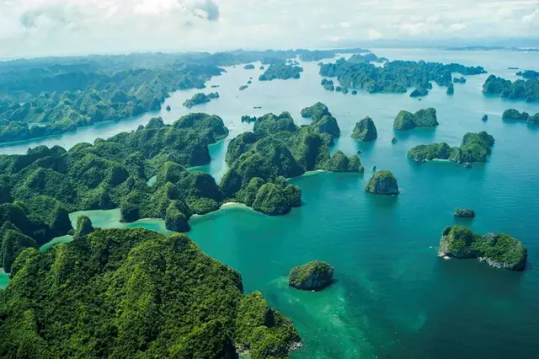
Majestic and mysterious, inspiring and amazing: all words are not enough to describe the beauty of this natural wonder - Ha Long Bay. Try to imagine more than three thousand islets rising from the emerald waters of the Gulf of Tonkin - and your imagination will not be half as beautiful as the views of the bay, which will take your breath away. Halong is a perfect work of art, a priceless collection of unfinished sculptures created by the hands of nature itself.
16. Pamukkale, Türkiye
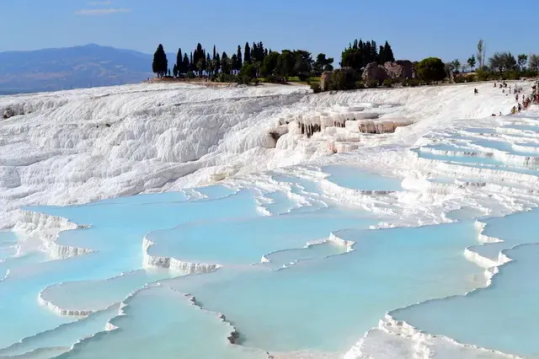
The thermal springs of Pamukkale are an incredible place created by nature itself and attracting millions of people every year. The name translates from Turkish as “cotton castle”. Indeed, when you look at the Pamukkale resort from a distance or in a photo, it seems that you see in front of you a large castle built from many fluffy cotton bolls. This place is also called “Cleopatra’s pool” - according to legend, it was here that the Egyptian queen drew beauty and youth.
17. Rice terraces in Mu Can Chai, Vietnam

The rice terraces in Vietnam are considered one of the wonders of the world, created jointly by nature and man. It seems that the best landscape designers in the world worked on them.
18. Monument Valley, USA
On the border with the state of Arizona and in the southeast of the state of Utah there is one of the national symbols and simply the pride of the United States, a legendary place where hundreds of cowboy advertisements, videos, westerns and other films were filmed - Monument Valley. Since ancient times, the indigenous people of the United States, the Navajo Indian tribes, have lived in the valley in their huts without access to basic running water or electricity. A visit to their settlements is part of the excursion, which will be kindly, but not free, provided to you by the monopolists in this matter - the Indians. They have established themselves as masters of the area and conduct daily tours for the huge number of tourists visiting the park.
19. Perito Moreno Glacier in Patagonia, Argentina

Perito Moreno is the jewel of the Los Glaciares National Park. This pile of huge blue ice floes is located on the border of the Argentine province of Santa Cruz and Chile. This fantastic natural monument in the Argentine part of Patagonia is just one of 48 glaciers fed by the southern part of the glacier located in the Andes. If you're lucky, in Perito Moreno you can see how the huge ice dam of Lake Argentino breaks through, and ice floes accumulate on the opposite shore. This happens from once a year to once every ten years.
20. Hang Son Doong Cave, Vietnam

Son Doong is the largest cave on the planet and the main symbol of the Phong Nha-Kebang National Park, located 500 km south of Hanoi. Despite the honorable status, residents of the surrounding villages learned about the giant cave only in 1991, and the rest of the world in general in 2009, after an expedition of speleologists from the UK. So it is not surprising that its underground passages are still only in the initial stages of exploration.
21. Venice, Italy

You can describe and admire Venice almost endlessly. This is a fabulous city on the water, conveniently spread over more than a hundred islands connected by numerous bridges - a real paradise for romantics. Here you can walk through the narrow streets where the charming Casanova once walked, ride an elegant gondola, and enjoy the bright sunset on the shores of the Venetian Lagoon.
22. Plitvice Lakes - the largest national park in Croatia

The park contains picturesque waterfalls, caves, ponds, lakes and beech and spruce forests, where you can meet roe deer, wildcats and watch rare species of birds. The lakes and waterfalls of the reserve attract tourists from all over the world. Water flows form 16 large karst lakes with water of rich turquoise color, communicating with each other thanks to a cascade arrangement. Foamy waterfalls, lost in forests and thickets, create unique landscapes of the natural park.RESULTS а
23. Lencois Maranhenses National Park, Brazil

Right on the shores of the Atlantic Ocean is located the most beautiful national park in Brazil. Without a doubt, it should be considered one of the most mysterious places on our planet. An area of more than a thousand square meters is occupied by snow-white sand dunes up to 40 meters high, between which small lakes with turquoise water can be seen here and there.
24. Navagio Bay, Greece

Navagio Bay is, without exaggeration, one of the most beautiful and world famous beaches in Greece. This piece of paradise is located on the island of Zakynthos. Navagio is a small bay with white sand, surrounded by steep white cliffs. The beach of the same name is decorated with the rusty wreck of a smuggler's ship. The stranded ship "Panagiotis", which appeared here in 1980, can be explored. You can only get to the bay by excursion boat: the passage from land has an incredibly steep descent.
25. Provence, France

Among the postcard landscapes of the French countryside, there are hardly any more replicated than lavender fields. The main “lavender” department of France, picturesque Provence, boasts hundreds of square kilometers of these fantastic alien landscapes, and in July-August there is a real pilgrimage of admiring tourists.
26. Victoria Falls on the Zambezi River, border of Zambia and Zimbabwe

Majestic beauty and power, a roar that never stops for a second, a million splashes forming a cloud of steam and fog, a feeling of danger when you stand on the edge, and above all this grandeur a dazzling rainbow - this is exactly the picture you can see at Victoria Falls, one of the largest waterfalls of the world. It is possible to view the waterfall from several points.
Read the full article
1 note
·
View note
Text
Holidays on the move - the best ski resorts in the world

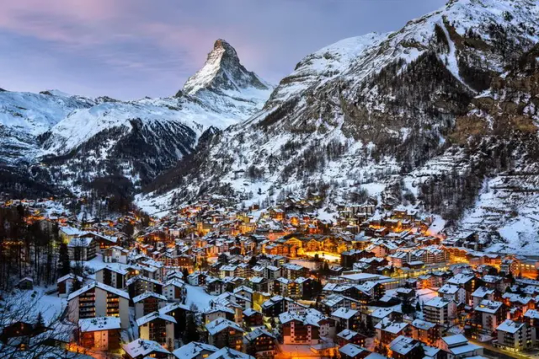
While many people dream about the coming of summer, looking sadly at the snow outside the window, skiers and snowboarders are looking forward to an exciting vacation. On the eve of the winter season, the famous American travel magazine Condé Nast Traveler published the results of the Conde Nast Traveler Readers' Choice Awards. More than 800,000 readers participated in it, who for several months shared their opinions on the offers and services of the tourism market. Based on the survey results, a rating of best ski resorts in the world was compiled that are worth visiting for all lovers of active winter recreation.
Les Arcs La Plagne, France

In the heart of the French Alps, the Haute-Tarentaise Valley, is the famous ski resort of Les Arcs. Together with Peisey-Vallandry and la Plagne it forms the single Paradiski ski area. Les Arcs-la-Plagne includes four mountain stations, named according to their altitude and having a common network of lifts - Arc-Pierre-Blanche (1600 m), Arc-1800, Arc-1950 and Arc-2000. The resort also includes the town of Bourg Saint-Maurice, which lies at the foot of the mountain.
The ski complex offers guests 425 km of slopes of varying difficulty levels, located at altitudes from 1200 to 3225 m. Both beginners and experienced skiers will enjoy skiing here. Novice athletes usually choose the Arc 1800 area, while professionals highly appreciate the Launched Kilometer track on the slope of the Aiguille Rouge mountain. Each level has at least one descent, illuminated at night.
Les Arcs offers many active holiday options for those who do not like skiing. In the Ark-1800 zone there is a snow park with figures, a halfpipe and boarder cross tracks. Several slopes are suitable for freeride. The Launched Kilometer trail offers ziplining. In the Ark-2000 zone, dog sled rides are organized.
Chambery airport is 127 km from Les Arcs, Lyon is 145 km, Geneva is 156 km. You can get there by regular buses and taxis or using a transfer. Bourg Saint-Maurice, which is located 15 km from Les Arcs, has direct trains from Paris, Lille, Amsterdam, Brussels and London.
Chamonix-Mont Blanc, France

At the foot of Mont Blanc in Haute-Savoie is the small town of Chamonix - the center of the oldest French ski resort, Chamonix-Mont Blanc. It also includes the villages of Les Houches, Servoz, Vallorcine and Argentiere.
The excellent infrastructure of Chamonix-Mont-Blanc allows skiing from the end of November to April. On the slopes of the mountain at an altitude of 2000 m there are 100 trails, of which 13 are suitable for beginners, 66 for experienced skiers, and 21 for professionals. A special place is occupied by the famous White Valley - the longest glacier descent in Europe, ranging from 16 to 24 km.
All slopes and pistes are divided into several ski areas - Grands Montets, Flegere-Brevent, Balme-Vallorcine and les Houches-St-Gervais. There is no general network of lifts connecting them all - you need to travel between zones by bus.
The easiest way to get to Chamonix is from Geneva, which is 88 km away. There are buses and transfers from the airport. You can also get there by train, but with transfers - the journey will take about 3 hours.
The fashion for skiing in Chamonix-Mont Blanc appeared at the end of the 19th century. In 1906, a big season was opened here for the first time. And from January 25 to February 5, 1924, the first Winter Olympic Games took place in Chamonix.
Ischgl, Austria
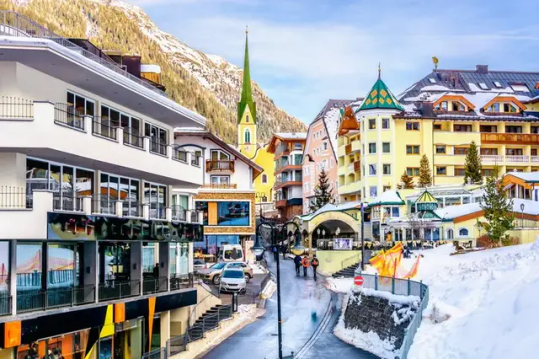
Ischgl is a fashionable and quite expensive ski resort, one of the best in Austria. It attracts with its magnificent nature, beautiful mountain panorama and perfect snow. Ischgl is located in the Silvretta Valley and is connected to its neighbor, the Swiss city of Samnaun, by a network of cable cars and ski lifts. Therefore, with one ski pass you can ski in two countries at once.
The ski area common to both resorts is called Silvretta Arena. This is 239 km of ideal pistes, of which 20 are blue, 40 are red and 25 are black. You can quickly get to any place thanks to 45 modern cable cars.
The ski areas located on the Idalp and Alp Trida plateaus are almost at the level of the glacial horizons - at an altitude of 2400-2800 m. There are no extreme slopes here, wide slopes up to 11 km long alternate with chutes and untouched virgin soil.
Snowboarders will appreciate one of the world's largest snow parks - PlayStation Vita Snowpark Ischgl. It is divided into three zones: for beginners (Beginner Park), intermediate-level athletes (Public) and professionals (Kingsize). Ischgl is one of the best places in the world for snowboarding.
The closest international airport to Ischgl is Innsbruck (99 km). From there you need to take a train or bus to the city of Landeck. There are bus services from the train station to the resort.
Val Thorens, France

The highest resort in Europe, Val Thorens, is the highest point of one of the world's largest ski areas, the Three Valleys. It's great for skiers and snowboarders, but those who don't ski or can't imagine their holiday without nightlife are better off choosing another place. Since the village is located high in the mountains, it will also take time for acclimatization.
Val Thorens is connected to the neighboring resorts of the Three Valleys (Courchevel, Meribel, La Tania, Les Menuires) by a network of lifts and a ski pass. The “ski-to-ski-out” concept has been successfully implemented here - the village is located at the intersection of all ski slopes. The season lasts about 175 days - from mid-November to early May.
The total length of the slopes is 150 km. Of the 88 pistes in Val Thorens, 11 are green, 39 are blue, 30 are red and 8 are black. The snow cover is of very high quality and lasts throughout the entire season. In addition, there are 5 km of cross-country ski trails and a snowpark with a quarterpipe, halfpipe and pyramids.
Three Valleys (Les Trois Vallées), France
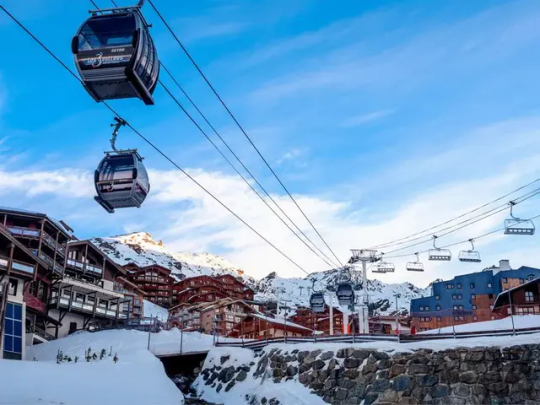
The world's largest ski area, the Three Valleys, unites several French ski resorts located at different altitudes. Among them are the famous Courchevel, Meribel, Val Thorens, Menuires, La Tanya. All of them are connected by a network of lifts. The 3 Vallees ski pass allows you to use all the ski areas of the Three Valleys, but even a whole month is not enough to explore its many slopes.
Les Trois Vallées' 600 km of ski slopes, of which 17 percent are green, 39 percent blue, 33 red and 11 black, attract skiers from all over the world. Athletes with any level of training can ride here - from beginners to professionals. There are 120 km of trails for cross-country skiing enthusiasts. 183 lifts transport 260,000 people per hour. Thanks to the variety of terrain and ski slopes, you can ski in any weather. 8 snow parks and 28 entertainment areas will provide excellent leisure time - no one will be bored.
Altibus shuttles run from the airports of Geneva, Grenoble, Chambery and Lyon to the resorts of Les Trois Vallées. You can check the schedule and book tickets on the carrier’s website www.altibus.com. Trains run from Paris, Brest, Nantes, Lille, Le Havre, Poitiers and other cities to the Moutiers railway station, built for the 1992 Olympic Games. There is a bus service between the station and the resorts.
In order to popularize skiing, Les Trois Vallées often holds promotions. For example, at the beginning of the season (December) and at the end (mid-April) there are reduced prices for ski passes. And on the opening day of the season (in 2021 it is December 4), discounts reach 50%. More details can be found at www.les3vallees.com/en.
Cortina d'Ampezzo, Italy
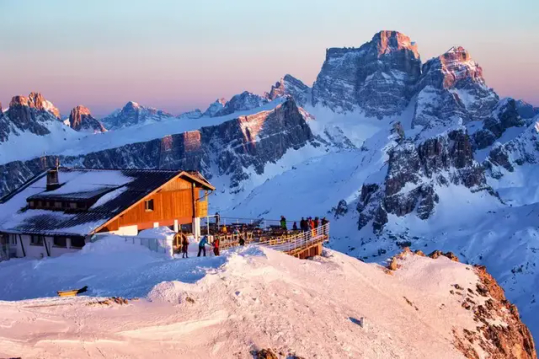
The resort town of Cortina d'Ampezzo was the capital of the Winter Olympics in 1956 and will again be in 2026. World championships in alpine skiing, cross-country skiing and bobsleigh are constantly held here. But wealthy Europeans come here not only for the sake of skiing, but also to, as they say, “show themselves.” The local public demonstrates all the latest sports fashion, and prefers to spend their leisure time in expensive restaurants and boutiques of famous brands located on the main street of the city. Cortina d'Ampezzo is the only ski resort in Italy that is part of the elite ski organization The Best of the Alps.
Even in winter, the sun shines at least 7 hours a day in this region, guaranteeing the best skiing experience. At the disposal of athletes there are 146 km of perfectly prepared slopes, located at altitudes from 1224 to 2828 m. They are served by 36 ski lifts and cable cars.
Cortina d'Ampezzo is part of the Dolomiti Superski ski area, which unites 16 resorts. On the website www.dolomitisuperski.com you can order a ski pass valid throughout its territory.
The closest to Cortina d'Ampezzo is Venice Airport (162 km), from where you can get there in 3-3.5 hours by ATVO bus or book a transfer. There are no direct trains. With transfers you can travel from Venice to the cities of Dobbiaco and Calalzo di Cadore, from where SAD and Dolomiti Buses run to Cortina.
Cervinia, Italy
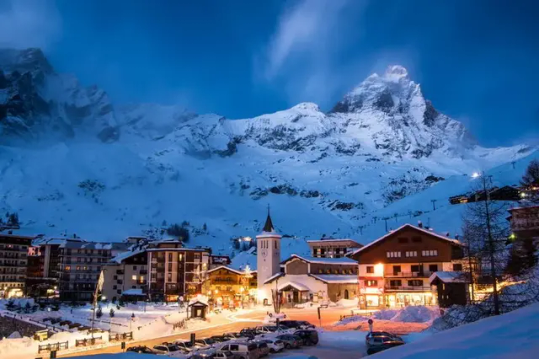
The highest ski resort in Italy, Cervinia attracts winter holiday enthusiasts with beautiful scenery, guaranteed snow and a long season. The large ski area is equipped with a well-thought-out system of various types of lifts. Ski passes allow you to ski not only on the southern slopes, which belong to Italy, but also on the northern ones, which are the area of the Swiss resort of Zermatt.
The town of Breuil-Cervinia is located at an altitude of 2050 m and is surrounded by the majestic peaks of Monte Rosa (4637 m), Matterhorn (4478 m), Breithorn (4165 m) and Castore (4228 m). The highest point is at an altitude of 3488 m. Here you can take a cable car above the clouds and then ski through them.
Cervinia is divided into four ski areas: Plan Maison, Laghi Cime Bianche, Plateau Rosa and Valtournenche Valley Slope. In total, in the Breuil-Cervinia-Valtournenche-Zermatt area there are 69 slopes, the total length of which is about 360 km. In addition, there is a snow park called Indian Park.
The airports closest to Cervinia are Milan and Turin. The journey from Milan by bus takes 3.5 hours. You can take the train to Chatillon, after which you can take a bus. From Turin you also need to take a bus with a transfer in Chatillon.
Zermatt, Switzerland
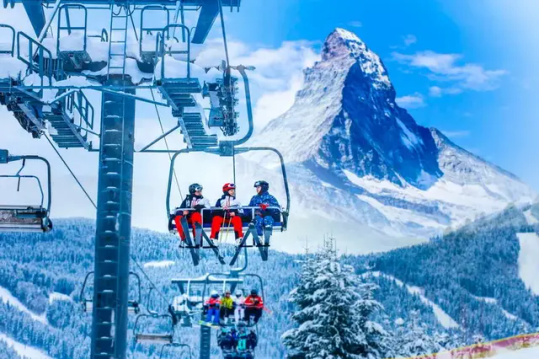
The unique ski resort of Zermatt in Switzerland offers skiing and snowboarding all year round. There is constant snow on the Theodul glacier - the snow park here operates both in winter and summer. In 2020, Zermatt was voted the best resort in the Alps for the third time.
Zermatt-Matterhorn and the neighboring Italian resort of Breuil-Cervinia share a ski area with 54 lifts. Of the 360 km of trails, 74 km are blue, 227 km are red and 20 km are black. There are also 36 km of yellow freeride slopes. Children under 9 years old can use the lifts free of charge.
Those who don't like skiing should come to Zermatt if only to admire the Matterhorn, the most photographed peak in Europe. But there is plenty of other entertainment here. You can go sledding or go on a snowshoe tour, and relax in the spa in the evening. The city is famous for its cafes and restaurants, two of which, After Seven and Le Capri, have been awarded a Michelin star.
In 2018, the world's highest cable car, the Matterhorn Glacier Ride, opened at the resort of Zermatt, connecting the peaks of Trockener Steg (2939 m) and Klein Matterhorn (3883 m). The lift is equipped with 25 gondolas, including four luxury cabins. They are decorated with 280,000 Swarovski crystals laid out in the shape of mountain peaks, and the lighting on the ceiling imitates the starry sky.
Verbier, Switzerland
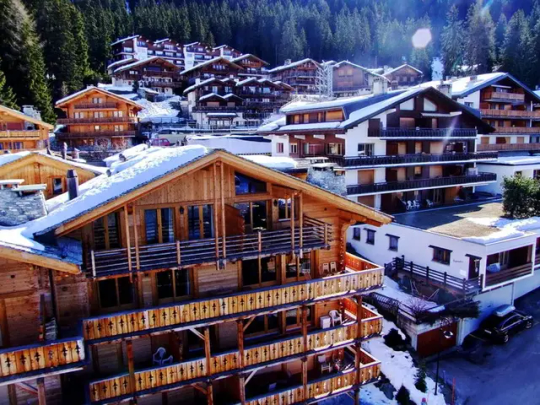
Verbier is part of the largest Swiss ski area, the 4 Vallees (Four Valleys), which also includes the ski resorts of Nendaz, Veysonnaz, La Tzouma and Thion. The city is located in the Bagnes valley, offering a magnificent panorama of the Alpine massifs and the Mont Blanc mountain.
The season in Verbier lasts from late November to April. The resort is preferred mainly by experienced skiers and freeride enthusiasts. The total length of its routes is about 200 km. There are slopes for beginners here, but they are few. For those who lack adrenaline, there are the famous black slopes in the Snowy Riviera - Mont Fort, Mont Gelle and Tortin.
There are two types of ski passes in Verbier: for skiing only in the Verbier area or for the entire Four Valleys region, which includes about 400 km of slopes connected by lifts. At an altitude of 2260 m there is a snowpark 1936 Neipark.
The closest airport to Verbier is in Geneva - from here there are daily shuttles to the resort. You can take a train from Geneva to Martigny, where you will have to change to a bus or taxi.
Courchevel, France
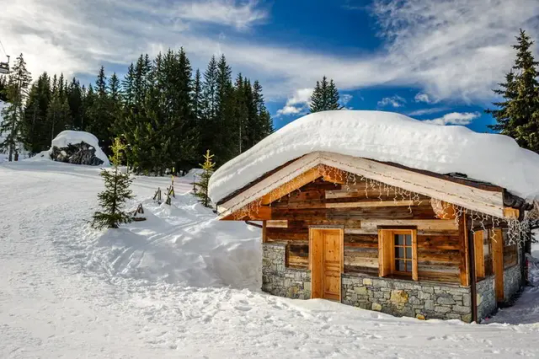
Courchevel is one of the oldest ski resorts in France, which has long become a symbol of luxury winter holidays. But luxury hotels, branded boutiques and Michelin-starred restaurants are only a worthy setting for its main assets: luxurious landscapes and excellent pistes. Here you can find all the best that ski lovers could wish for.
Courchevel is part of the joint ski area Les Trois Vallées. The resort includes six villages located at different altitudes: Saint-Bon, Le Praz, La Tania, Village, Moriond, Courchevel 1850 ( Courchevel 1850). Skiers are offered 150 km of excellent trails of varying difficulty levels, including special Easy Rider areas for beginners and theme parks for children. By purchasing an unlimited ski pass, you can ski on the slopes of the entire Three Valleys zone, which is more than 600 km.
In addition, the Courchevel Valley has illuminated slopes for night skiing, 65 cross-country ski routes and a snowpark. Fans of freeride will be able to enjoy untouched virgin soil.
Courchevel has its own small airfield and helipad. Air transfer from Lyon and Geneva airports takes just minutes. But this is an option for wealthy guests. It is much cheaper to travel by Altibus buses. You can take the train to Moutiers Salins station, from where buses go to the resort.
Megève, France

Megève was recently awarded membership in the Best of the Alps ski club. Representatives of French bohemia regularly vacation here and one of the branches of the Rothschild dynasty permanently resides here. The ancient Alpine town is famous for its high level of service, Michelin-starred restaurants and luxury boutiques.
The resort combines two ski areas: Evasion Mont-Blanc and Les Portes du Mont-Blanc. More than 200 ski slopes in Megève with a total length of about 400 km are created for relaxing and comfortable skiing. The gentle slopes here are ideal for beginners. But there are also interesting places for thrill-seekers, for example, the steep descent of Emile Allais in the Alpet Valley. Those who want to go off the beaten path will be able to get an unforgettable experience of skiing on virgin soil and the glacial descent of Vallée Blanche. In the Evasion Mont-Blanc area there are 7 parks for snowboarders and freestylers, as well as several toboggan areas.
The easiest way to get to Megève is from Geneva airport (86 km). Transfer by bus or helicopter is provided. There is a direct train to Sallanches Station, 12 km away. From the station you can get to the city by bus or taxi.
Val d'Isere, France
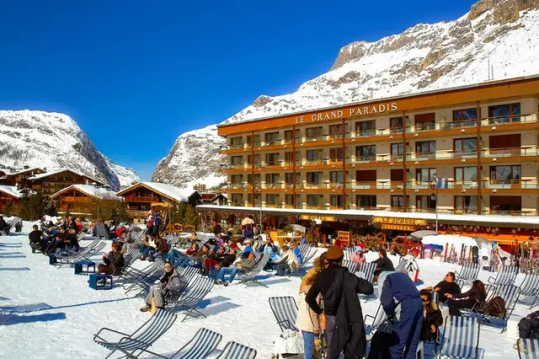
Val d'Isere and the neighboring resort of Tignes are part of the combined ski area Espace Killy, named after the French Olympic champion Jean Claude Killy. There are more than 300 km of ski slopes, served by 90 ski lifts and funiculars. 20 green, 67 blue, 41 red and 26 black slopes make Val d'Isere attractive to skiers of all skill levels.
It includes three ski areas: Le Solaise, Bellevarde and Le Fornet. Their altitude and climatic features of the region provide excellent snow cover, allowing the season to extend until the end of May. You can ski on the slopes of the Grande Motte glacier in Tignes even in summer. Freeride lovers will find 10,000 hectares of virgin snow at an altitude of 1550-3500 m. Val d'Isere also offers other winter recreation options - trekking, cross-country skiing, and dog sledding. Snowboard lovers should pay attention to Valpark - there is a halfpipe, big air, jumps and all kinds of jibbing figures.
Read the full article
0 notes
Text
TOP 20 places in Lisbon you need to visit
Original, charming and making you fall in love at first sight - all this is about him, about Lisbon. Tourists from all over the world come here for an unforgettable holiday and vivid impressions. We will tell you about the most interesting places in Lisbon that you must see in order to be guaranteed to get this experience.
Belem Tower
In Lisbon you simply cannot pass by this miracle on the Tagus River. The Belem Tower was erected in honor of Vasco da Gama's legendary expedition that opened the route to India, and today it is a favorite place for Lisboners and tourists and an excellent choice if you want to admire the river.
Photo by Francisco Aragao
Opening hours : October-May - from 10:00 to 17:30, May-September - from 10:00 to 18:30.
Entrance ticket price : – €8.
St. George's Castle
“The Cradle of the City,” as the locals affectionately call the ancient castle of St. George. According to historical data, a fortress existed on this site since the 5th century BC. The fortification of the West Goths, the royal palace, the prison and the arsenal - the history of the castle will not leave anyone indifferent.
Opening hours : The castle is open to tourists from 09:00 to 18:00 from November 1 to February 28 and from 09:00 to 21:00 from March 1 to October 31.
Ticket prices : €15 per adult.
Palace of Queluz
Do you want to see how the Portuguese monarchs and court nobility lived? Then go to the Queluz Palace, in the outskirts of Lisbon. Its interiors are literally filled with works of art - paintings, statues and more. And after you’ve seen enough of the luxurious apartments and halls, be sure to take a walk in the park located around the residence.
Photo by: iurbi
Opening hours : from 09:00 to 19:00.
Ticket price : €9.50 (€8.50 for pensioners, €7.50 for children under 18 years old).
Museum of Ancient Art
You can learn about the history of Portugal in color by visiting the Museum of Ancient Art. In addition to the usual paintings (Bosch, Durer, Velazquez), there is a rich collection of gold and silver objects from both Portuguese and foreign masters, as well as many exhibits from India, China, Persia and Japan.
Opening hours : Tuesday–Sunday – from 10:00 to 18:00.
Ticket prices : €10 per adult.
Basilica da Estrela
“Basilica of the Star” (as its name is translated) is undoubtedly one of the most beautiful buildings in Lisbon. Built in the Baroque and Neo-Gothic style, this snow-white beauty amazes with its openwork, seemingly floating architecture, and from the terrace that encircles the central dome and bell towers, a magnificent view of the city opens.
Photo by Jaume & Joan Teruel
Free admission.
City Museum
If time does not allow you to get acquainted with at least the basic facts from the history of the Portuguese capital, but you really want to do this, then the Lisbon City Museum is your lifesaver! Its collection covers the time from the Paleolithic to the present day, and the exhibition is arranged in such a way that its different parts are dedicated to the most striking features of the region.
Opening hours : Tuesday–Sunday from 10:00 to 13:00 / from 14:00 to 18:00.
Ticket prices : €9.
Maritime Museum
Lisbon wouldn't be Lisbon if it weren't for the sea. It is the sea (or rather the ocean) that played a significant role in the history of the city, so it is worth taking time to visit the Lisbon Maritime Museum. It will be interesting for everyone! The museum's collection includes about 17 thousand exhibits: naval uniforms, maps, globes and, of course, ship models (some life-size).
Photo by Julio Rojo Eyaralar
Opening hours : every day from 10:00 to 18:00.
Ticket price : €7 (full).
Calouste Gulbenkian Art Museum
That rare case when a private collection gives odds to the most “cool” state museums. Based on the collection of the richest oil tycoon, the museum is a real treasure trove. Canvases by world-famous masters (Rembrandt, Rubens, van Dyck, Gainsborough, Renoir, Monet), ancient artifacts from Egypt and Mesopotamia, ancient jewelry that is hundreds or even a thousand years old - here everyone will find something to look at for hours.
Ticket price: €12.
Puppet Museum
Well, if you get tired of the abundance of artistic treasures, it’s worth visiting the Lisbon Puppet Museum - the only one in the country dedicated to puppets and puppet theater. This is where you can be transported back to your childhood! Here, under one roof, dolls from different countries and eras are collected: Vietnamese, Portuguese, Thailand, India and even Africa.
Some exhibits “entertained” the public back in the Middle Ages. And after viewing the collection, you can make your own doll in a circle that works for visitors, or learn how to manage ready-made ones.
Ticket costs : €7.5 - full.
Museum of Costume and Fashion
To immerse yourself in the life of the Portuguese (and not only them) from different eras, it is worth going to the Museum of Costume and Fashion. What does life have to do with it, you ask? And despite the fact that it contains not only an impressive collection of clothing (men's, women's and children's), but also home textiles, household items, accessories and much more that made up the lives of people centuries ago.
Magnificent dresses of the 17th-18th centuries, embroidered with gold, dresses and suits of the 20th century, children's clothing and toys - you can wander endlessly in the halls of the museum! Well, you can finish the tour in the botanical park around the museum.
Ticket price : €7.
Azulejo Museum
First, it’s worth clarifying: azulejos are clay tiles, painted and covered with glaze (something like tiles). This is a traditional decorative material in Portugal and Spain, which came there from Arab countries. Today, for example, azulejos adorn the Palace of the President of Portugal and the exhibition hall of the Carriage Museum. Well, the museum is worth a visit, if only because it simply has no analogues - apart from Portugal and Spain, azulejos are not produced anywhere else.
Photo by - tilesoc_org_uk
Here you can wander endlessly, looking at the intricate paintings on tiles from different eras (the oldest are from the 15th century), and also learn how they are produced and painted.
Opening hours : Tuesday–Sunday from 10:00 to 18:00.
Ticket price : €8.
Church of Santa Engracia
This temple attracts attention at first sight: a snow-white building in the Baroque style, topped with a dome, against the backdrop of terracotta roofs and the blue sky - the view is simply impressive! The church is famous for the fact that it took almost 300 years to build, and even with interruptions; the domes of the towers are not finished even today. And its main feature is the magnificent view from the observation deck of the dome.
Photo by Marc Heurtaut
Mafra Palace
Another pearl of Lisbon is Mafra Palace. True, it is located in the suburbs, but it’s worth the time to travel. The palace is the largest in the country (no joke, its area is equal to the area of ten football fields!), but it is not only the size of the building that attracts tourists. The magnificent interiors of the former royal residence, the elegant appearance of the palace and, of course, the famous bell towers with a hundred bells.
Palace and park complex Quinta da Regaleira
This estate with a quaint palace and park is also located in the vicinity of Lisbon. But it's worth the time to travel. This magical castle (there is no other way to say it!) was built according to the plans of its owner, millionaire Antonio Monteira in 1910. The building is made in the Gothic and Renaissance style, surrounded by a lush garden with intricate paths, and in its very center lies the mysterious Well of Dedication.
Photo by Agusyer Follow
Opening hours : November-January - from 10:00 to 17:00, February, March, October - from 10:00 to 18:00, April-September - from 10:00 to 19:00.
Ticket price : €11 (adult).
Lisbon Zoo
Whether you're traveling with kids or traveling alone, the City Zoo is a must-see in Lisbon. One of the oldest and largest zoos in Europe will delight you with the diversity of the animal world, and the recreation park will delight you with the pleasant coolness of its shady alleys.
Ticket costs: €27.50 (adult), €17 (children, 3-12 years old).
Carriage Museum
Do you want to visit the royal “car park” of the 17th-19th centuries? Then the Carriage Museum is exactly what you need. The museum exhibits a wide variety of carriages from Portugal, Spain, France and Italy. Ceremonial ones, covered with gilding and decorated with precious stones, and modest everyday ones, children's phaetons and pleasure carriages - you can look at this magnificence endlessly!
Photo by meteorad
Opening hours : Tuesday–Sunday from 10:00 to 18:00.
Ticket costs : €8.
Se Cathedral
Also known as Maria Mayor de Lisboa. This temple is remarkable not only because it is the oldest in the city, but also because it stands on the remains of previous religious buildings - a Roman temple, later rebuilt into a church, and then replaced by a mosque, which stood here until the 13th century.
Photo by Filipe Barreto
You should definitely visit this amazing place, because the cathedral is truly a living embodiment of the history of the city.
Admission : free, except that you will have to pay to visit the Gothic courtyard.
Bridge 25 April
One of the twenty longest suspension bridges in the world connects Lisbon and Almada. A delightful panorama of the city opens from the shore, and if you want a view from the water, take bus No. 753 at Marqués de Pombal Square and take a breeze across the bridge.
Rossio Square
The best way to admire evening and night Lisbon is to go to Rossio Square.
Photo by: cleofysh
One of the main squares of the capital has a truly fabulous look in the light of the lanterns: with a pattern in the form of waves, lined with two-color cobblestones, with magnificent bronze fountains, Rossio Square has its own unique atmosphere.
Funicular "Gloria"
You can feel like a native Lisboner of the twentieth century by taking a ride on the historic Gloria funicular. A funny yellow tram (which, by the way, has been running regularly since 1885!) will slowly take you from Restoradores Square to the city center, and in the meantime you can admire the city streets passing by outside your window.
The ticket costs €2.
Hint: the funicular makes only two stops - at the beginning of the route and at the end, at the top of the hill, which offers a beautiful view of the city.
Read the full article
0 notes
Text
TOP 15 attractions in the heart of Germany

Old Germany has been attracting thousands of travelers to its sprawling streets lined with historical landmarks for many years. We have collected for you a significant selection of interesting things to do in Frankfurt am Main, so that you do not get lost among the variety of unique points of the city.
Römerberg Square
Römerberg Square is where all the trails in Frankfurt lead. The locals simply called her Roemer. The square received its name in honor of the 600-year-old Römer Town Hall, whose name translates as Roman. It is its stepped pediment, decorated with statues of Emperors Charles IV, Frederick Barbarossa, Ludwig II and Maximillian II, that is found on magnets, postcards and souvenir plates.
In addition to the town hall, a huge number of historically and culturally important points are concentrated here. For example, the 13th century Frankfurt Cathedral, where the Holy Roman Emperors were once crowned. Also here you can see houses from the 14th and 15th centuries with fancy names, for example, “Little Badger Hole”, “Big Angel” and “Golden Vulture”. Like the town hall, the cathedral and all the houses were meticulously restored after the war.
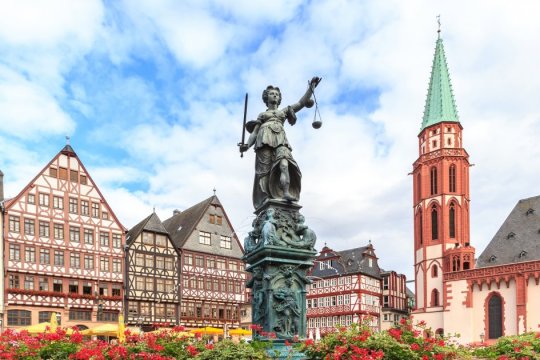
© depositphotos Photo by pigprox
Shtädel Art Institute
The Städel Art Institute is the best option for art lovers to visit in Frankfurt am Main. It is in this museum that the largest and most valuable collection of graphics, sculptures and paintings in the country is located. Thanks to this fact, the object is included in all lists of the main attractions in Germany.
The institute received its name in honor of I. Städel, its founder and famous banker. The building houses not only an art museum, but also an art school.
Frankfurt Cathedral
Frankfurt Cathedral or Imperial St. Bartholomew's Cathedral is located near Römerberg Square. The giant Gothic building with its red facade and 95-meter tower is hard to miss. It was here that German kings were chosen and crowned since 1356. Frankfurt Cathedral is a national symbol due to its historical and political importance.
Considering all these facts, Frankfurt Cathedral can be called the main shrine of the city.
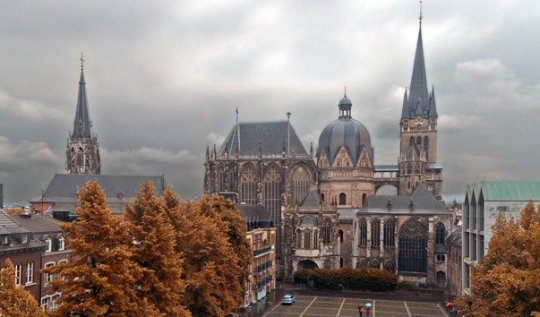
Photo by - travelpost
Museum Embankment
This is where the soul of persistent connoisseurs of the cultural program really plays out. After all, 39 museums and exhibition venues of different sizes and directions are concentrated here.
Among them are the Archaeological Museum, the Caricature Museum, the Museum of Romance, the German Film Museum, the Eintracht Museum, the Goethe House Museum, the Historical Museum and many others (we will talk about some of them in more detail). The complex is constantly expanding and adding new institutions.
There is also a promenade in the Alt-Sachsenhausen district, famous for its bars and restaurants serving unusual apple wine.
Goethe House and Museum
Two adjacent museums are dedicated here to the great poet of all times, Johann Wolfgang von Goethe.
Goethe's First House is the place where he was born on August 28, 1749 and spent his childhood and youth. The cult novel “The Sorrows of Young Werther” was created here, as well as the first sketches for the poem “Faust”.
Another building is the Goethe Museum, an art gallery with a large collection of paintings, graphics, busts of the 18th and 19th centuries. Thanks to the art of Goethe's time, you are immersed in the world of the writer, who was also an amateur artist, art connoisseur and collector.

© depositphotos Photo by SKahraman
Old opera
The Old Opera is a former opera house that now houses a concert hall and a congress center. About 460 events are held here every year - music concerts of various genres, entertainment and educational programs for children and adults, conferences and seminars.
Construction of the opera lasted from 1873 to 1880. In 1937, it was on the stage of this theater that the world-famous cantata Carmina Burana by the German composer Carl Orff was first performed. During World War II the building was heavily damaged. The restoration took almost 40 years - the opening of the renovated theater took place in 1981.
The decoration of the building is amazing both outside and inside, so we recommend visiting this place to everyone, even those who do not consider themselves an outspoken opera connoisseur.
Palm Garden
If after a busy program in a big city you want to hide from its bustle for a while, feel free to go to the Palm Garden. This is a luxurious botanical garden built in 1871 with an area of more than 20 hectares and one of the largest park areas in the country. Almost half of the garden's territory is reserved for all kinds of palm trees - spreading and bizarre, exotic and completely unique - they gave the name to the garden.

Photo by tourist
Maintower
The Maintauer is the fourth tallest skyscraper in Frankfurt and Germany. It received its name in honor of the Main River. From the outside, the building looks like two connected towers - rectangular and round. In the foyer, visitors are greeted by a video installation and wall mosaics. There is a place on the roof of a skyscraper from where you can see the entire city. This is the highest observation deck in Frankfurt (200 meters). The panorama looks especially impressive after sunset.
Just imagine that on the 53rd floor of the tower there is a restaurant, from where you can enjoy a picture of the city accompanied by haute cuisine.
Senckenberg Museum
To get to this museum you will have to make a little effort, because it is located in the suburbs. But believe me, it's worth it.
Currently, this complex is one of the largest educational and research institutions of this level, which offers a unique exhibition dedicated to the development of flora and fauna on Earth. Every year, about 500,000 people come on excursions to the halls of the Senckenberg Museum of Natural History - the collection of this complex is considered one of the best in the world and the most complete in Germany.

Photo by tournavigator
Hauptwache Square
Another famous square in the city. The main architectural masterpiece of the Hauptwache is the Baroque house, which primarily serves as the headquarters for the policemen. When you arrive at this square, you can explore the shops and restaurants, the underground pedestrian area and the sunken terrace. Among the local attractions we also highlight the Church of St. Catherine.
Market Kleinmarkthalle
If you are one of those tourists who, having arrived in a new country, are never going to take all their money back, go to the Kleinmarkthalle. This indoor market in the city center has over 150 stalls.
Every day, except Sunday, you can buy fresh vegetables, fruits, herbs, meat and seafood, as well as finished products - desserts, pastries, sausages, cheeses and the famous Frankfurt green sauce. The Kleinmarkthalle has outlets selling Turkish, Spanish and Italian cuisine. This is a great place to have lunch in between exploring the city.
Hessian Park
The Open Air Museum, which is located near the city and can introduce you to the traditions and culture of Frankfurt and the entire region, deserves special attention. The vast area of the Hessian Park contains more than a hundred buildings that give the impression of being in an authentic German village. There is a store with craft products and a post office. You can enter all buildings and pick up all household items.
Due to the fact that the attraction is not the most famous and is located far from the city, the number of guests here is usually relatively small. Crowds of tourists and vacationers will not interfere with your walk.
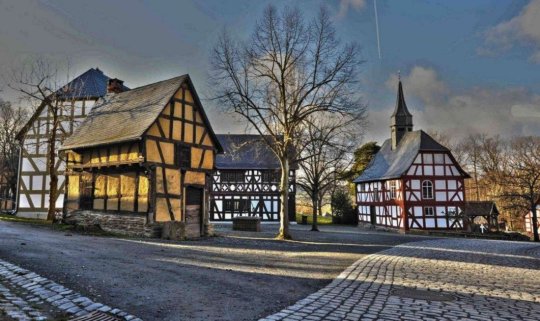
Photo by kidpassage
Bethman Park
A real green oasis is a grandiose park at the mansion of the famous German Bethmann dynasty. The park is separated from the noise of the metropolis by thick ancient walls. The city was given a beautifully equipped park by the famous Bethman dynasty of bankers.
The main attraction of Bethman Park is the chess court. This is a special area for chess players, where the playing field is placed on the asphalt with marked squares and figures. You can often meet local intellectuals here.
The Chinese garden, the highlight of Bethmann Park, will not go unnoticed. It is organized according to the principles of Feng Shui. In the central part of the garden there is a pagoda - a favorite plant from which people love to brew aromatic and healthy tea. The city also inherited a luxurious mansion in Bethman Park, which harmoniously fits into the beauty of nature.
Gallery Schirn Kunsthalle
The Schirn Kunsthalle is an art gallery located in the Altstadt district between the town hall and Frankfurt Cathedral. Its opening took place in 1986.
There are no permanent exhibitions here - only temporary exhibitions are available to visitors. However, the gallery presents both the works of classics and contemporary artists, and hosts seminars, master classes and various events. The gallery can be considered as an alternative to all the classic museums of the city, if you have already visited them.

Photo by - schirn
Frankfurt Museum of Modern Art
The museum was designed in 1981 by the Viennese architect Hans Gollein. Because of its triangular shape, it is called a “piece of pie.”
The basis of the museum is the legacy of the German collector Karl Strecher, containing 65 works of pop art and minimalism. Today, the permanent collection includes more than 4,500 works of international art, dating from the 1960s to the present day.
Read the full article
0 notes
Text
Traveling with a dog: Helpful tips and information for a stress-free vacation with your four-legged friend!

Are you going on vacation soon and would you like to take your four-legged friend with you? What should you pay attention to when traveling with a dog? What must be in your dog's luggage? What about flying with a dog? Which are the dog-friendly countries for a relaxing trip?

A dog is much more than just a pet - it is a member of the family. According to a survey, around 42% of dog owners take their four-legged friend with them on vacation and just under 20% at least just do so. No matter whether you are flying or driving with your dog, there are many important things you should plan and consider when traveling with your dog.
Traveling with a dog: This is what you should pay attention to
Vacation time is always enjoyment time. Unfortunately, traveling with a dog always means stress for our furry friends and no matter whether at home or abroad - a change of location is always associated with certain changes. The better prepared you are, the better your vacation will be.
Don't forget your EU pet passport

Would you like to travel abroad with your dog? Then you must first find out more about the country's entry regulations and it is important to always have the EU pet passport with you. Just like people, dogs are only allowed to travel with a valid ID, which you can apply for from your veterinarian. In addition to detailed information about the owner and the pet, it also contains information about the rabies vaccination and the dog's microchip registration.

It is very important to note when traveling with a dog that the rabies vaccination only becomes effective after 21 days. Also keep in mind that different entry requirements apply to non-EU countries. Very important – check all transit regulations for all countries you need to pass through on your vacation. In some countries the regulations are so extensive that a spontaneous trip with your dog is hardly possible.
Do a health check

In order to enjoy a stress-free and relaxing holiday with your dog, you should make sure that your four-legged friend is really fit and healthy before the trip. Therefore, it is important to have a thorough health check with your veterinarian. Does he have all the necessary vaccinations? Especially in southern European countries, many diseases such as heartworms, leishmaniasis and erlichiosis are caused by ticks and sand flies.
Take dog food with you

To make the change a little easier for your four-legged friend, it is advisable to always take his usual food with you when traveling with your dog. If this is not possible for some reason and if, for example, a switch to dry food is necessary, it is best to start this at least 10 days before the holiday. It is also very important to know what dogs are not allowed to eat.
Bottled water for travel

Are you driving with your dog? Then remember that the little one always has fresh water available. There are now many water bowls that are especially suitable for car journeys. Or are you not sure about the water quality at your holiday destination? Then get the dog bottled water. No matter whether at home or on a trip with your pet - if you don't drink tap water yourself, then your dog shouldn't have it either.
Avoid crowds

Is your dog nice and calm and not used to too many people? Then you should avoid large crowds even on vacation. All the strange smells, loud noises and lots of people can really overwhelm your four-legged friend and trigger severe panic attacks or anxiety. So always plan your walks when things are least busy.
Heat as a stress factor

We wait for our summer vacation all year round and can't wait to enjoy the sun all day long. But what is a real paradise for us can become real torture for our four-legged friends. When traveling with a dog, you need to consider not only your preferences, but also those of your pet. Especially if you go south, the climate change can be very stressful. Here too, you should be careful and avoid the midday heat.

A beach holiday in autumn or spring would be a better choice and then the beaches are no longer so crowded, so you can take your little one with you in peace and quiet. In addition, the bans on dogs on the beach in most countries only apply during high season and walks on the beach are much more fun. Or why not spend your summer vacation in the Alps and visit some of the most beautiful lakes in Switzerland? The temperatures there are still very pleasant in July and August and the holiday will be much less stressful and more pleasant.
What goes in your dog's luggage?

When traveling with a dog, your furry friend naturally also has his own luggage. The better and earlier you pack this, the less stressful your vacation will be with him. Of course, it can vary greatly from dog to dog and you know your dog best. But to make your life a little easier, we have a small checklist for you with the most important things that, in our opinion, should not be missing in your dog's luggage.
- Documents – EU pet passport, health certificate and veterinary certificate, insurance document (if the dog has health insurance)
- Water bowl and dog food in sufficient quantities
- Plastic bag for waste disposal
- Dog blanket and his dog bed
- Replacement collar with address at holiday destination
- Beach towel
- Muzzle so he can ride public transport
Transport box - However, if your dog spends the journey in a dog crate, it is very important that you get him used to it gradually and in a timely manner. Under no circumstances should he come into contact with it for the first time while driving.
The dog first aid kit for travel

In order to spend your vacation as stress-free as possible, a small dog first aid kit is always a must when traveling with a dog. If your little one is injured or bitten by a tick, it is important to act quickly. Here is a checklist with all the important utensils that you should always have with you.
- Tick tweezers
- Tweezers for removing foreign bodies from wounds
- clinical thermometer
- Wound ointment or coconut oil ( always a must for cracked paws)
- Ear and eye ointment
- Bandage material (elastic bandage, scissors, Leukoplast)
- Disinfectant spray for treating injuries
- Medication for diarrhea or nausea
- Disposable gloves
- Sufficient medication for chronically ill dogs
Flying with your dog: This is what you should pay attention to

If you plan to fly with your dog, you will have to make even more special preparations. Unfortunately, traveling by plane always means a lot of stress for our four-legged friends - after all, you don't fly every day. We would advise against traveling by plane with your dog for a short trip. Also remember that not all airlines allow dogs. And when you book your plane ticket, you should also register your dog with the airline and reserve a seat for him.

Since most airlines only allow 2 dogs per flight, do this as early as possible. Due to their shallow breathing, some dog breeds can have problems during flights and some airlines even refuse to carry dogs with blunt noses. These include Pekingese, Pug, Boxer, Bull Dog, Shih Tzu and Pit Bull. Small dogs weighing up to 8 to 10 kg including transport are generally allowed to fly in the passenger compartment, but not with you, but in a box that is stowed under the seat becomes. Also find out about the dimensions that the transport box must have.

However, things are a little different for larger dogs and they always have to travel in the hold in a special flight transport box. Unfortunately, you are not allowed to be present during loading and transport, so you should think very carefully about whether you want to subject your four-legged friend to this. All the loud noises in the hold and the unknown situation always mean a lot of stress for the dog. If you want to fly with your dog, you should stop giving him food at least 4 hours before the flight.
Car ride with the dog

Your car is of course ideal for traveling with a dog, as your little one is already familiar with it before the holiday. Another advantage of traveling by car with your four-legged friend is that you can choose your own breaks. But be careful – safety always comes first and your dog should always travel in a well-secured dog crate. If he still doesn't have any experience with it, it's best to gradually get him used to it a few weeks before the trip.

Other alternatives include a dog belt or a back seat where you strap the little one with a chest harness. But when it comes to the dog's safety, the dog crate is the safest option for a relaxed trip. Of course, you should make sure that the dog always has water available while traveling - there are special travel bowls that prevent spills. To make the car journey with your dog as stress-free as possible, avoid overly long distances and plan an overnight stop if necessary.
Traveling with a dog: Dog-friendly countries in Europe

When traveling with a dog, it is particularly important to know your dog and consider his preferences. Does he like swimming? Does he need a lot of exercise? A hiking holiday with a Pekingese or a summer holiday with a husky wouldn't be good ideas. Of course, the stress-free and easiest way is to take your vacation domestically. But if you feel like a little adventure, then discover the dog-friendly countries in Europe below.
Austria
When it comes to dog-friendly countries, Austria is definitely our absolute number one! The country is a real paradise for four-legged friends and they are welcome guests in almost all hotels and restaurants. Whether swimming, cycling or hiking – the choice of leisure activities with your dog is really huge in Austria. In addition, there is no leash requirement in the neighboring country and muzzles are only recommended for larger dog breeds.
Belgium
Belgium is also a very popular travel destination for a relaxing holiday with your dog and can usually be easily reached by car. Four-legged friends are welcome in most restaurants and dogs are also allowed in most holiday accommodations. The North Sea coast in particular with its long sandy beaches is perfect for traveling with your dog in the low season. However, dogs are unfortunately not allowed during high season.
Netherlands
The Netherlands comes in third place among dog-friendly countries in Europe. The Dutch are known worldwide for their openness and this also applies to our four-legged friends. There are many dog-friendly beaches in Zeeland or South and North Holland, which always provide a special bathing experience.
France
Cot dÀzur, Provence, southern France and Aquitaine are particularly recommended for a holiday with your dog in France. Lonely beaches where little ones can let off steam can be found in Normandy and Brittany. Dogs are also allowed in many restaurants and you will have no problem finding dog-friendly accommodation.
Denmark and Sweden
Among the Scandinavian countries, Denmark and Sweden are considered particularly dog-friendly. Especially on the special dog beaches you will find many great holiday homes that welcome your four-legged friends as extremely welcome guests. Please note, however, that puppies under 3 months of age are not allowed to enter the country and the animal must be declared to customs upon entry.
Read the full article
0 notes
Text
Middle Eastern Oasis Exploration


Nestled amidst arid landscapes, the Middle Eastern oases stand as shimmering havens of life and respite. These verdant gems, surrounded by vast deserts, have been pivotal throughout history, serving as sources of sustenance, trade, and cultural exchange. In this blog post, we embark on an exploration of Middle Eastern oases, uncovering the captivating tales, unique ecosystems, and the timeless allure that defines these oases.
Middle Eastern Oasis Exploration

1. Historical Significance
Middle Eastern oases have played an integral role in the region's history, acting as vital stops along ancient trade routes. Caravans traversing the deserts relied on these oases for water, food, and rest. Cities such as Palmyra and Petra owe their existence and prosperity to the presence of oases, serving as flourishing centers of commerce and culture.
2. Unique Ecosystems
The juxtaposition of lush greenery against the backdrop of arid deserts creates unique ecosystems within Middle Eastern oases. Date palms, fruit orchards, and other vegetation thrive in the fertile soil sustained by underground aquifers. These oases often host a variety of bird species, creating a harmonious blend of flora and fauna that defies the surrounding harsh environment.
3. Sustainable Agriculture
The ingenious cultivation techniques employed in Middle Eastern oases exemplify sustainable agriculture practices adapted to water scarcity. Traditional methods such as falaj irrigation systems, which distribute water from underground channels, ensure efficient and equitable water usage, allowing communities to grow crops in an environmentally conscious manner.
4. Architectural Marvels
Oases are not merely natural wonders; they also provide the backdrop for architectural marvels. Ancient settlements around oases showcase distinctive mud-brick architecture, with intricate designs that reflect the cultural and historical significance of these communities. Al-Ain in the United Arab Emirates, for instance, is known for its traditional falaj irrigation systems and well-preserved forts.
5. Cultural Oasis Festivals
Throughout the Middle East, oasis communities celebrate the importance of these life-sustaining oases through cultural festivals. These events often feature traditional music, dance, and culinary delights, providing visitors with a glimpse into the rich heritage and hospitality of the oasis communities.
6. Date Palms and Date Festivals
The date palm holds a special place in the heart of Middle Eastern oases. Date festivals celebrate the harvest of this iconic fruit, showcasing its various varieties and uses. The date palm not only provides sustenance but also serves as a symbol of resilience in the face of challenging climatic conditions.
7. Modern Oasis Retreats
While ancient oases continue to thrive, modern oasis retreats offer a luxurious escape into tranquility. Resorts and eco-friendly accommodations have emerged around some oases, providing visitors with the opportunity to experience the serenity and natural beauty of these paradisiacal landscapes.
8. Environmental Challenges
Despite their resilience, Middle Eastern oases face environmental challenges, including over-extraction of groundwater and climate change. Sustainable practices and conservation efforts are crucial to preserving these delicate ecosystems and ensuring their continued contribution to the region's biodiversity.
9. Exploring Wadi Bani Khalid
Wadi Bani Khalid in Oman stands out as a prime example of a mesmerizing Middle Eastern oasis. Surrounded by rugged mountains, this oasis is characterized by turquoise pools, palm groves, and lush vegetation. Visitors can explore the enchanting wadi, swim in clear pools, and marvel at the natural beauty that defines this hidden oasis.
10. Future Prospects and Conservation
As we delve into the allure of Middle Eastern oases, it becomes imperative to consider their future prospects and the importance of conservation efforts. Sustainable water management, community involvement, and responsible tourism practices are essential components of preserving these oases for future generations.
Middle Eastern oases, with their historical resonance, unique ecosystems, and cultural significance, beckon explorers and enthusiasts alike. Beyond their role as geographical features, these oases symbolize the indomitable spirit of life thriving in even the harshest environments. As we venture into the heart of these tranquil havens, let us appreciate their contribution to history, ecology, and the cultural tapestry of the Middle East, ensuring their preservation for generations to come.
Oasis locations in the Middle East

The Middle East, known for its vast deserts and ancient civilizations, conceals hidden treasures amid the arid landscapes – oasis locations that offer a stark contrast to the surrounding desolation. In this blog post, we embark on an exploration of these enchanting oases, unveiling their unique features, historical significance, and the allure they hold for travelers seeking respite in the heart of the desert.
1. Bahariya Oasis, Egypt
Nestled in the Western Desert of Egypt, the Bahariya Oasis is a verdant jewel surrounded by golden sand dunes. Famous for its lush date palm groves and hot springs, this oasis has a rich historical heritage, with ancient tombs and temples scattered across its landscape. Travelers can explore the Valley of the Golden Mummies and enjoy the therapeutic properties of the hot springs.
2. Wadi Rum Oasis, Jordan
Known as the Valley of the Moon, Wadi Rum in Jordan is a surreal desert landscape dotted with unique rock formations and ancient petroglyphs. While not a traditional oasis with flowing water, Wadi Rum offers a captivating desert experience with its towering sandstone mountains and vast red sand expanses. Visitors can embark on jeep safaris, camel treks, or even spend a night under the stars in traditional Bedouin-style camps.
3. Al-Ain Oasis, United Arab Emirates
Nestled in the heart of the city of Al-Ain in the UAE, this oasis is a UNESCO World Heritage Site. Al-Ain Oasis is renowned for its traditional falaj irrigation system, which has sustained agriculture in the region for centuries. Visitors can stroll through the shaded pathways amidst date palm groves, visit the Al Ain National Museum, and witness the ancient agricultural practices that still thrive in this urban oasis.
4. Ein Gedi Oasis, Israel
Perched along the shores of the Dead Sea, Ein Gedi Oasis is an ecological gem in the Judean Desert. Fed by freshwater springs, this oasis supports a diverse range of flora and fauna, creating an oasis in the truest sense. Nature enthusiasts can explore hiking trails that lead to waterfalls, natural pools, and the opportunity to encounter wildlife such as ibex and hyraxes.
5. Siwa Oasis, Egypt
Tucked away near the Egyptian-Libyan border, Siwa Oasis is a lush haven surrounded by towering sand dunes. Renowned for its ancient Oracle Temple of Amun, Siwa offers a unique cultural experience. The oasis is famous for its olive orchards, freshwater springs, and the iconic salt lakes. Travelers can immerse themselves in the local Berber culture, indulge in traditional Siwan cuisine, and explore the historic sites that dot the landscape.
6. Al-Hasa Oasis, Saudi Arabia
Located in the eastern part of Saudi Arabia, Al-Hasa Oasis is one of the largest oasis complexes in the world. With an extensive network of canals (falaj), the oasis sustains agriculture in the region, showcasing the ingenious methods employed by ancient inhabitants to harness water in the desert. Date palm groves, historic mud-brick forts, and traditional souks characterize this culturally rich oasis.
7. Al-Sarar Oasis, Saudi Arabia
In the vast Rub' al Khali, also known as the Empty Quarter, lies the hidden gem of Al-Sarar Oasis. Remote and largely unexplored, this oasis offers a glimpse into the raw beauty of the desert. The contrast between the golden sands and the greenery of the oasis is a sight to behold. Travelers seeking solitude and a genuine desert experience can venture into the depths of Al-Sarar.
8. Jericho Oasis, Palestine
Known as the "City of Palms," Jericho boasts one of the oldest continuously inhabited settlements in the world. The oasis in Jericho is sustained by the abundant spring of Ein Sultan, providing a lush environment in the midst of the arid Jordan Valley. Visitors can explore historical sites like the ancient city walls and the Mount of Temptation while enjoying the tranquility of the oasis.
Middle Eastern oases, with their ancient charm and ecological significance, offer a unique perspective on the resilience of life in the desert. Each oasis, steeped in history and surrounded by stunning landscapes, invites travelers to uncover the secrets hidden within their fertile grounds. Whether exploring the palm groves of Al-Ain or the remote beauty of Al-Sarar, these oasis locations beckon adventurers to embark on a journey through time and nature in the heart of the Middle East.
Desert oasis travel guide

Embarking on a journey to explore desert oases is a captivating endeavor that unveils the hidden beauty and tranquility nestled within arid landscapes. In this comprehensive travel guide, we will navigate the enchanting world of desert oases, offering insights into planning an unforgettable oasis adventure.
1. Choosing Your Oasis Destination
The world is adorned with diverse desert oases, each offering a unique experience. Research and choose your destination based on preferences—whether it's the historical allure of Egypt's Bahariya Oasis, the cultural richness of Morocco's Draa Valley, or the remote beauty of the Al-Sarar Oasis in Saudi Arabia. Consider factors such as climate, accessibility, and the activities each oasis destination offers.
2. Best Time to Visit
Desert climates vary, and choosing the right time to visit is crucial for an optimal experience. While oases maintain their allure year-round, consider visiting during the milder seasons to avoid extreme temperatures. Spring and fall are often ideal, offering pleasant weather for exploration without the scorching heat of summer.
3. Understanding Local Cultures
Desert oases are often surrounded by communities with rich cultural traditions. Before embarking on your journey, take the time to understand the local customs and traditions. Respectful interaction with the local population enhances your travel experience and fosters positive relationships.
4. Packing Essentials
Packing smart is key when venturing into the desert. Essentials include lightweight and breathable clothing to combat the heat, a wide-brimmed hat for sun protection, sturdy hiking boots for exploration, and ample water to stay hydrated. Additionally, pack sunscreen, a camera to capture the stunning landscapes, and a scarf or shawl for protection against wind and dust.
5. Transportation and Accessibility
Consider the accessibility of your chosen oasis. Some oases may require specific modes of transportation, such as 4x4 vehicles or guided tours. Research transportation options and plan accordingly. Ensure that your chosen oasis is reachable by your preferred mode of travel, whether it's by car, bus, or guided tours.
6. Accommodations in Oasis Settings
While some desert oases offer luxurious resorts, others provide more rustic accommodations that immerse you in the natural surroundings. Choose accommodations that align with your preferences and budget. Desert camps, eco-friendly lodges, and traditional guesthouses can enhance the overall oasis experience.
7. Exploring Oasis Activities
Desert oases offer a myriad of activities for travelers seeking both relaxation and adventure. Explore hiking trails that lead to hidden waterfalls, embark on camel treks through the dunes, or take a leisurely stroll through lush palm groves. Many oases also provide opportunities for cultural experiences, including visits to historic sites, traditional markets, and encounters with local artisans.
8. Water Adventures
While deserts may seem devoid of water, many oases offer opportunities for unique water experiences. Enjoy refreshing dips in natural pools or hot springs, creating a harmonious blend of desert exploration and aquatic relaxation. Be sure to check if swimming or water activities are permitted in the specific oasis you plan to visit.
9. Wildlife Encounters
Desert oases are often havens for diverse flora and fauna. Keep an eye out for unique bird species, desert plants, and, in some cases, wildlife like gazelles or camels. Respect the natural habitat and capture the beauty of these encounters with your camera.
10. Responsible Travel Practices
As you embark on your oasis adventure, prioritize responsible travel practices. Minimize your environmental impact by adhering to designated trails, respecting local flora and fauna, and following the principles of "Leave No Trace." Contribute positively to the local economy by supporting local businesses and engaging in sustainable tourism practices.
A journey to explore desert oases is a captivating tapestry of history, culture, and natural wonders. This comprehensive travel guide aims to equip you with the essential insights to plan a memorable oasis adventure. Whether you seek the lush landscapes of Morocco's Draa Valley or the timeless allure of Egypt's Bahariya Oasis, the enchanting world of desert oases awaits your exploration. Embrace the tranquility, immerse yourself in local cultures, and savor the unique experiences that these hidden gems have to offer.
Oasis culture and history

Desert oases stand as timeless witnesses to the ebb and flow of civilizations, each oasis harboring a unique cultural heritage that echoes through the ages. In this exploration of oasis culture and history, we delve into the enchanting narratives woven into the fabric of these verdant sanctuaries amidst arid landscapes.
1. The Ancient Heartbeat of Oases
Oases have been pivotal throughout human history, serving as waypoints for ancient trade routes and centers of cultural exchange. The oasis culture, deeply rooted in sustainability and adaptation, reflects the ingenious ways in which communities have thrived in harsh desert environments. From the falaj irrigation systems in Oman to the qanat systems in Iran, these ancient water management techniques are testimonies to the resilience of oasis cultures.
2. Architectural Marvels
Oases are often adorned with architectural marvels that tell tales of a bygone era. Mud-brick forts, traditional houses, and intricate irrigation channels are common features in many oasis communities. The architecture is not merely functional but also reflects the cultural identity of the inhabitants. Al-Ain Oasis in the United Arab Emirates, with its historic mud-brick structures and falaj systems, is a living testament to this architectural heritage.
3. Cultural Festivals and Traditions
Oasis communities celebrate their cultural heritage through vibrant festivals and traditions. These events often showcase traditional music, dance, and culinary delights, providing visitors with a glimpse into the local way of life. Siwa Oasis in Egypt, famous for its annual Date Festival, is a prime example of how oases celebrate their agricultural heritage and the role of the date palm in their culture.
4. Indigenous Wisdom and Practices
Indigenous communities residing in and around oases have preserved ancient wisdom and practices passed down through generations. These practices encompass sustainable agriculture, water management, and desert survival skills. The Bedouin communities, often associated with desert regions and oases, exemplify a nomadic lifestyle deeply connected to the rhythms of the desert and its oases.
5. Trade and Cultural Exchange
Oases have historically been hubs for trade and cultural exchange. The convergence of trade routes in oasis settlements facilitated the exchange of goods, ideas, and artistic influences. The Silk Road, for instance, connected oasis cities like Kashgar in China with the cultural melting pot of Samarkand in Uzbekistan, fostering a crossroads of cultures that enriched the oasis heritage.
6. Literary and Artistic Inspirations
Oases have inspired poets, writers, and artists throughout history. The lushness amid the desert expanse, the play of light on palm groves, and the tranquil ambiance have been recurrent themes in literature and art. The poetry of ancient Arabian poets, the writings of explorers like Ibn Battuta, and the paintings of Orientalist artists capture the allure of oasis culture.
7. Spiritual Significance
Many oases hold spiritual significance, with ancient temples, shrines, and sacred sites dotting the landscape. The oasis of Jericho in Palestine, considered one of the oldest continuously inhabited settlements, is associated with biblical narratives and is believed to be the place where Jesus was baptized. The spiritual resonance of oases adds a layer of mystique to their cultural history.
8. Traditional Craftsmanship
Oasis communities often boast traditional craftsmanship that reflects their cultural identity. From intricate pottery in Morocco's Draa Valley to the weaving traditions in Oman's oasis communities, these crafts are not only functional but also carry a deep cultural significance. Visitors can explore local markets to witness and acquire these handmade treasures.
9. Modern Challenges and Preservation Efforts
While oasis culture and history are rich and resilient, they face modern challenges such as water scarcity, urbanization, and environmental changes. Conservation efforts are essential to preserve the unique heritage of oases. Organizations, communities, and governments are working together to implement sustainable practices and ensure the continued vitality of oasis culture.
10. Sustainable Tourism and Cultural Immersion
Engaging in sustainable tourism practices allows visitors to immerse themselves in oasis culture while contributing positively to the local economy.
Read the full article
0 notes
Text
Literary Pilgrimages: Journeying Through the Worlds of Beloved Authors

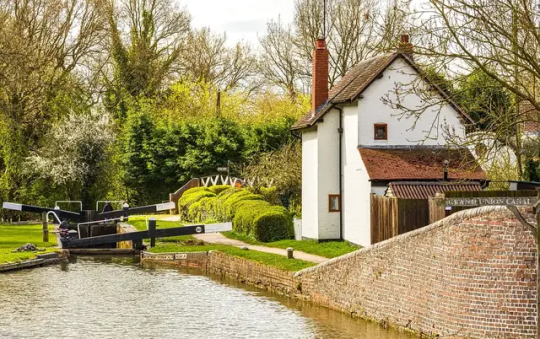
Literature has the power to transport us to different realms, allowing us to escape reality and immerse ourselves in the vivid imaginations of talented writers. For those who are passionate about literature, embarking on literary pilgrimages can be a transformative and enchanting experience. In this blog post, we will explore the concept of literary pilgrimages and delve into some captivating destinations that bring beloved authors and their creations to life.
Literary Pilgrimages

Literary Pilgrimages Defined
A literary pilgrimage is more than just a physical journey; it is a quest to connect with the places that inspired and shaped the works of our favorite authors. These destinations provide readers with a unique opportunity to step into the landscapes and settings that once existed only in the realms of fiction.
Exploring Jane Austen's England
Jane Austen, renowned for her timeless novels exploring love and societal norms, called the charming English countryside her home. A literary pilgrimage to England offers enthusiasts the chance to stroll through the picturesque village of Chawton, where Austen spent the last years of her life and penned classics like "Pride and Prejudice" and "Sense and Sensibility." Visitors can tour her former residence, now the Jane Austen House Museum, to gain insight into the author's life and the inspiration behind her literary masterpieces.
Traversing the Haunting Settings of Edgar Allan Poe
For those drawn to the dark and mysterious, an Edgar Allan Poe literary pilgrimage is a must. Baltimore, Maryland, is a city steeped in Poe's macabre legacy. The Poe House and Museum allows visitors to explore the poet's former residence, where he wrote some of his most famous works, including "The Raven" and "The Tell-Tale Heart." The eerie ambiance of the museum provides an immersive experience, transporting visitors back to the 19th century when Poe's tales of suspense and horror were conceived.
Roaming the Streets of Dublin with James Joyce
Dublin, Ireland, is a literary haven for fans of James Joyce, one of the most influential modernist writers of the 20th century. A pilgrimage to Dublin unveils the city that served as the backdrop for Joyce's seminal work, "Ulysses." Enthusiasts can explore landmarks such as Martello Tower in Sandycove, where the novel begins, or visit Davy Byrnes Pub, featured in one of the book's famous episodes. The James Joyce Centre offers guided tours, providing a deeper understanding of the author's life and his impact on literature.
Rediscovering Shakespeare's Stratford-upon-Avon
No literary pilgrimage list is complete without a nod to the Bard himself, William Shakespeare. Stratford-upon-Avon, Shakespeare's birthplace, is a destination that transports visitors to Elizabethan England. The birthplace of the iconic playwright has been transformed into a museum showcasing rare artifacts and manuscripts. The Royal Shakespeare Theatre is another must-visit spot, offering the chance to witness the timeless works of Shakespeare performed in a setting that resonates with history.
Literary pilgrimages offer a profound connection between readers and the authors who have left an indelible mark on the world of literature. Whether exploring the English countryside with Jane Austen, venturing into the dark world of Edgar Allan Poe in Baltimore, delving into the streets of Dublin with James Joyce, or rediscovering Shakespeare's roots in Stratford-upon-Avon, these journeys enrich our understanding of literary classics and the creative minds behind them. As you embark on these literary pilgrimages, you not only trace the footsteps of your favorite authors but also create memories that will stay with you forever. So, pack your bags, open a book, and let the words guide you on a journey through the landscapes of literary brilliance.
Famous author's hometown tours

For literature enthusiasts and bookworms alike, there's something magical about stepping into the hometowns of our favorite authors. These places hold the keys to understanding the inspirations behind iconic novels, the landscapes that shaped literary worlds, and the communities that nurtured some of the greatest minds in literature. In this blog post, we'll embark on a literary journey through famous author's hometown tours, exploring the places that gave birth to timeless masterpieces.
Mark Twain's Hannibal, Missouri: A River Town's Literary Legacy
Mark Twain, celebrated for his wit and profound observations on the human condition, immortalized the small town of Hannibal in his novels, particularly "The Adventures of Tom Sawyer" and "The Adventures of Huckleberry Finn." A tour of Hannibal takes you through Twain's boyhood home, the cave that inspired the famous cave scene in "Tom Sawyer," and the Mark Twain Museum. Visitors can experience the Mississippi River views that captivated Twain and gain insight into the humor and social commentary that define his works.
Charles Dickens' London: A Dickensian Delight in the Victorian Capital
A visit to London becomes a literary pilgrimage when exploring the streets that Charles Dickens once walked. The Dickens Museum, housed in the author's former residence, provides an intimate glimpse into his life. Wander through the cobblestone alleys of Victorian London, as vividly depicted in works like "Oliver Twist" and "A Tale of Two Cities." From the quaint beauty of Doughty Street to the historic atmosphere of the Old Curiosity Shop, Dickens' London offers a Dickensian experience that transports visitors back to the 19th century.
Hemingway's Key West: Sun, Sea, and the Writing Life
Ernest Hemingway, the Nobel Prize-winning author known for his succinct prose and adventurous spirit, found solace in Key West, Florida. A tour of Hemingway's Key West residence provides a glimpse into the author's island life and writing routine. The lush gardens and iconic six-toed cats that roam the property add to the charm. Visitors can also explore local haunts like Sloppy Joe's Bar, a favorite watering hole of Hemingway, where the echoes of his bohemian lifestyle still linger.
Agatha Christie's Torquay: Poirot's Playground by the Sea
Known as the Queen of Crime, Agatha Christie penned countless mysteries that continue to captivate readers worldwide. Torquay, her hometown on the English Riviera, is a treasure trove for fans. The Agatha Christie Mile takes visitors through key locations, including the Grand Hotel, where she spent her honeymoon, and the Princess Pier, associated with her novel "The ABC Murders." The Agatha Christie Festival, held annually, immerses attendees in the world of detective fiction and Christie's enduring legacy.
J.K. Rowling's Edinburgh: From Coffee Shops to Castle Views
The magical world of Harry Potter was born in the cafes and alleys of Edinburgh, Scotland. J.K. Rowling, a struggling writer at the time, found inspiration in the city's rich history and folklore. A stroll down the cobblestone streets of the Old Town, a visit to The Elephant House cafe where Rowling wrote early chapters of the series, and a hike up Arthur's Seat for panoramic views all offer a taste of the enchantment that permeates Rowling's literary creations.
Famous author's hometown tours offer more than a glimpse into the past; they provide an immersive experience, allowing readers to connect with the environments that shaped literary giants. Whether you're strolling through the charming streets of Hannibal with Mark Twain, navigating the alleys of Victorian London with Charles Dickens, soaking up the sun in Hemingway's Key West, solving mysteries in Agatha Christie's Torquay, or exploring the magical landscapes of J.K. Rowling's Edinburgh, each tour is a unique journey into the heart of literary genius. So, put on your walking shoes, grab your favorite book, and set out on a literary adventure through the hometowns of the authors who continue to enchant and inspire us.
Literary landmarks worldwide

The world is dotted with places that have inspired and housed the greatest minds in literature, giving readers a chance to walk in the footsteps of their favorite authors. Literary landmarks stand as testaments to the enduring power of words and the impact of storytelling on culture and society. In this blog post, we embark on a global journey to explore some of the most iconic literary landmarks that have left an indelible mark on the world of literature.
The Shakespearean Marvel of Stratford-upon-Avon:
Our literary journey begins in the charming town of Stratford-upon-Avon, birthplace of the world's most celebrated playwright, William Shakespeare. The birthplace of the Bard himself has been transformed into a museum, offering visitors a glimpse into Shakespeare's life and times. The Royal Shakespeare Theatre stands as a modern homage to his works, showcasing performances that bring his timeless plays to life. From the peaceful gardens of Anne Hathaway's Cottage to the historic Holy Trinity Church where Shakespeare rests, Stratford-upon-Avon is a pilgrimage for any lover of literature.
The Louvre of Books: The Library of Congress, Washington D.C.:
Nestled in the heart of the United States capital, the Library of Congress is not only the largest library in the world but also a literary haven. Housing over 170 million items, including rare manuscripts and iconic literary works, the library is a treasure trove for book enthusiasts. The stunning architecture of the Jefferson Building and the sheer magnitude of the collection make this landmark a pilgrimage for those seeking to immerse themselves in the written word
Parisian Prowess: Shakespeare and Company Bookstore:
A stone's throw away from Notre-Dame Cathedral in Paris, Shakespeare and Company Bookstore stands as a symbol of literary camaraderie. Established in 1919, the bookstore became a haven for writers such as Ernest Hemingway, James Joyce, and F. Scott Fitzgerald. Today, it continues to be a sanctuary for book lovers, offering a quaint reading nook and hosting events that celebrate the art of storytelling. Walking through the doors of this iconic bookstore is like stepping into a literary time capsule.
The Enchanting Beauty of Prague's Golden Lane:
Prague's Golden Lane, nestled within the historic Prague Castle complex, is a charming cobblestone street that has witnessed the creative endeavors of many writers. Once home to Franz Kafka, this narrow alleyway exudes a magical atmosphere that has inspired numerous works of literature. Visitors can explore Kafka's tiny blue house and imagine the writer at work, gazing out over the picturesque rooftops of Prague. The Golden Lane captures the essence of a bygone era, inviting readers to connect with the city's rich literary history.
The Haunting Beauty of the Brontë Parsonage:
Nestled in the Yorkshire Moors, the Brontë Parsonage Museum stands as a tribute to the literary genius of the Brontë sisters—Charlotte, Emily, and Anne. The moody landscapes surrounding the parsonage influenced the dark and passionate worlds depicted in novels such as "Wuthering Heights" and "Jane Eyre." Visitors can explore the rooms where the Brontës penned their masterpieces, gaining insight into the lives of these literary siblings. The desolate beauty of the moors remains eternally linked to the haunting narratives spun by the Brontës.
Literary landmarks worldwide offer a bridge between the present and the rich tapestry of literary history. From the birthplace of Shakespeare in Stratford-upon-Avon to the bustling Shakespeare and Company Bookstore in Paris, these landmarks provide a tangible connection to the worlds created by our favorite authors. Whether wandering through the grandeur of the Library of Congress in Washington D.C., getting lost in the enchanting beauty of Prague's Golden Lane, or immersing oneself in the haunting landscapes of the Brontë Parsonage, each literary landmark invites readers to step into the stories that have shaped our collective imagination. So, pack your bags and embark on a literary adventure across the globe, where the magic of literature comes to life in the very places that inspired its creation.
Book lover's travel guide

For those enchanted by the magic of literature, travel becomes more than just a physical journey—it transforms into a literary pilgrimage. The world is brimming with destinations that beckon book lovers, offering a chance to explore the settings of beloved novels, discover historic libraries, and immerse oneself in the rich tapestry of literary history. In this blog post, we present a comprehensive book lover's travel guide, mapping out destinations that cater to every bibliophile's heart.
Shakespearean Sojourn in Stratford-upon-Avon
Our literary odyssey begins in the birthplace of the Bard himself, Stratford-upon-Avon. This quaint English town, with its charming Tudor architecture, beckons lovers of Shakespearean verse. Start your journey at the birthplace of William Shakespeare, now transformed into a museum that captures the essence of the playwright's life. The Royal Shakespeare Theatre, overlooking the serene Avon River, stages captivating performances that breathe life into timeless classics. Stratford-upon-Avon is a haven where book lovers can revel in the ambiance that once inspired the words of the world's greatest playwright.
Bookstore Bliss in Portland's Powell's City of Books
Nestled in the heart of Portland, Oregon, Powell's City of Books is a bibliophile's dream come true. Boasting a vast collection of new and used books spanning multiple floors, Powell's is not just a bookstore; it's a literary labyrinth waiting to be explored. The store's color-coded rooms, cozy reading corners, and the intoxicating aroma of books make it a haven for book lovers. Spend hours wandering through the stacks, discovering hidden gems, and losing yourself in the written word at one of the world's largest independent bookstores.
Prague's Literary Enchantment on Golden Lane
Prague's Golden Lane, nestled within the historic Prague Castle complex, is a cobblestone street that whispers tales of literary enchantment. Once home to Franz Kafka, this picturesque alleyway radiates a magical atmosphere that has inspired countless works of literature. Explore Kafka's tiny blue house, now a museum, and immerse yourself in the ambiance that fueled the writer's creativity. As you stroll through the narrow lanes and absorb the haunting beauty of Prague, you'll feel a profound connection to the city's rich literary legacy.
Edinburgh's Bookish Charms along the Royal Mile
Edinburgh, Scotland, is a city steeped in literary history, and the Royal Mile stands as its bookish heart. This historic thoroughfare is adorned with charming bookshops, including the famous John Knox House and Armchair Books. Unearth rare editions, literary souvenirs, and a vast array of genres as you meander through these literary havens. Don't forget to visit the Writers' Museum, nestled in Lady Stair's Close, to delve into the lives of Scottish literary luminaries like Sir Walter Scott and Robert Burns.
Bibliophilic Bliss at The Morgan Library & Museum, New York City
In the bustling metropolis of New York City, The Morgan Library & Museum stands as a testament to bibliophilic bliss. Housed in a majestic building, this cultural gem boasts a collection of rare manuscripts, first editions, and literary artifacts. Explore the library's serene reading rooms, adorned with ornate ceilings and wood-paneled walls, and discover literary treasures that span centuries. The museum also features rotating exhibitions that showcase the intersection of literature and visual arts, providing a unique and immersive experience for book enthusiasts.
The world is a vast tapestry of literary wonders waiting to be explored by book lovers. Whether you're wandering through the Tudor streets of Stratford-upon-Avon, getting lost in the book-filled corridors of Powell's City of Books, experiencing the enchantment of Prague's Golden Lane, exploring Edinburgh's Royal Mile, or indulging in the bibliophilic bliss of The Morgan Library & Museum in New York City, each destination offers a unique chapter in the book lover's travel guide. So, pack your favorite novels, embark on a literary adventure, and let the pages of the world's most enchanting destinations come to life before your eyes.
Famous literary destinations

For avid readers and literature enthusiasts, the allure of famous literary destinations is irresistible. These places hold the echoes of classic tales, the footprints of legendary authors, and the ambiance that inspired some of the world's most celebrated works of literature. In this blog post, we invite you to embark on a literary odyssey as we explore famous literary destinations around the globe, each offering a unique and enriching experience for those with a passion for the written word.
Oxford, England: The Timeless Elegance of Literary Greats
Nestled in the heart of England, the city of Oxford stands as a haven for lovers of literature. The University of Oxford, with its historic colleges and charming cobblestone streets, has been a muse for many renowned authors. Take a stroll through the Bodleian Library, a beacon of academic excellence, where scenes from the Harry Potter films were shot. Visit the Eagle and Child pub, the legendary meeting place of the Inklings, a literary group that included C.S. Lewis and J.R.R. Tolkien. Oxford's literary ambiance is a testament to the enduring influence of its resident wordsmiths.
Key West, Florida: Hemingway's Island Retreat
Known for its laid-back atmosphere and vibrant culture, Key West, Florida, served as the beloved retreat of the iconic American author, Ernest Hemingway. The Hemingway Home and Museum offers visitors a glimpse into the author's island life, surrounded by lush gardens and the company of six-toed cats. Wander through the rooms where Hemingway wrote some of his most famous works, and imagine the creative spirit that permeates the air.
Read the full article
0 notes
Text
The Ultimate Guide to Island Hopping in the Pacific
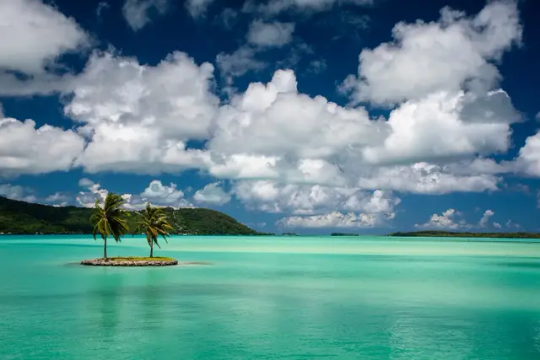

The Pacific Islands, with their azure waters, lush landscapes, and vibrant cultures, offer a dreamy backdrop for an unforgettable island-hopping adventure. Each island in this vast expanse of the Pacific Ocean has its unique charm, providing travelers with a diverse range of experiences. In this guide, we'll embark on a virtual journey, uncovering the magic of island hopping in the Pacific and highlighting some of the must-visit destinations.
Island Hopping in the Pacific
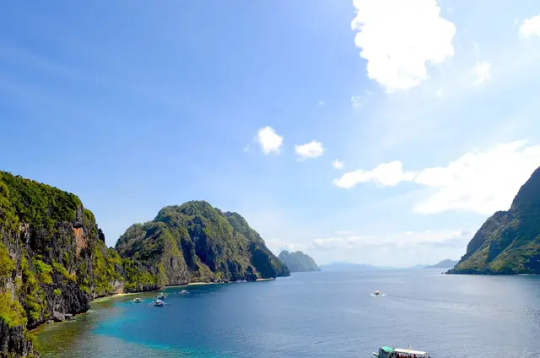
1. The Allure of Island Hopping
Diverse Cultures and Landscapes:
Island hopping in the Pacific is a tapestry of diverse cultures, each island boasting its unique traditions, languages, and histories. From the volcanic landscapes of Hawaii to the coral atolls of Micronesia, every stop offers a new and captivating experience.
Adventure and Relaxation:
Whether you seek adventurous activities like snorkeling, hiking, and exploring ancient ruins or crave laid-back moments on pristine beaches, island hopping in the Pacific caters to a spectrum of travel preferences.
2. Essential Stops for Island Hopping in the Pacific
Hawaii - The Aloha State:
Begin your Pacific island-hopping adventure in Hawaii, known for its enchanting blend of volcanic landscapes, lush rainforests, and world-famous beaches. Explore the vibrant culture of Oahu, the volcanic wonders of the Big Island, and the tranquility of Maui.
Fiji - Coral Reefs and Warm Hospitality:
Hop over to Fiji for a taste of the South Pacific's warm hospitality and stunning coral reefs. Dive into the crystal-clear waters, visit traditional Fijian villages, and indulge in the laid-back island vibe.
Palau - Underwater Paradise:
Palau, a Micronesian gem, is a haven for underwater enthusiasts. Dive into the world-renowned Jellyfish Lake, explore World War II wrecks, and marvel at the vibrant marine life that populates the pristine coral reefs.
French Polynesia - Overwater Bungalows and Pristine Lagoons:
French Polynesia, with its iconic overwater bungalows, beckons travelers to indulge in luxury amidst turquoise lagoons. Explore Bora Bora's romantic allure, the dramatic landscapes of Moorea, and the rich Polynesian culture of Tahiti.
New Zealand - A Tapestry of Landscapes:
While not often considered part of the traditional Pacific island-hopping route, New Zealand's North and South Islands offer an enticing mix of landscapes, from geothermal wonders in Rotorua to the fjords of Milford Sound.
3. Practical Tips for Island Hopping Success
Plan Ahead:
Given the vastness of the Pacific, planning is crucial. Decide on your preferred route, research visa requirements, and consider seasonal variations in weather and tourism.
Transportation:
Island hopping often involves a combination of flights, ferries, and boats. Check transportation options and schedules to optimize your travel time.
Packing Essentials:
Pack light, considering both tropical and cooler climates. Don't forget essentials like sunscreen, insect repellent, and comfortable footwear for exploring.
Local Etiquette:
Respect local customs and traditions. Each island has its own cultural nuances, and understanding and appreciating them enriches your travel experience.
4. Unique Experiences on Pacific Islands
Snorkeling with Manta Rays in Hawaii:
Hawaii's Kona coast offers a unique opportunity to snorkel alongside majestic manta rays, creating unforgettable memories of gliding through the ocean with these gentle giants.
Exploring the Rock Islands of Palau:
Embark on a kayaking adventure through the stunning Rock Islands of Palau, a UNESCO World Heritage Site, where limestone formations rise dramatically from the crystal-clear waters.
Cultural Immersion in Fiji:
Participate in a traditional kava ceremony in Fiji, sharing a bowl of the local brew with villagers, and gaining insight into the warm and welcoming Fijian culture.
Hiking the Tongariro Alpine Crossing in New Zealand:
For adventure seekers, the Tongariro Alpine Crossing in New Zealand offers a challenging yet rewarding trek through volcanic landscapes, steaming vents, and emerald lakes.
5. Sustainable Island Hopping
Responsible Tourism Practices:
Adopt responsible tourism practices to minimize your environmental impact. Support eco-friendly accommodations, respect marine life during water activities, and adhere to local conservation efforts.
Cultural Sensitivity:
Show cultural sensitivity by learning about and respecting local customs. Engage with communities in a meaningful way, supporting local artisans and businesses.
Conservation Contributions:
Consider contributing to local conservation initiatives. Many Pacific islands face environmental challenges, and your support can make a positive impact on preserving these natural wonders for future generations.
Island hopping in the Pacific is a journey into a realm of unmatched beauty, diverse cultures, and extraordinary adventures. From the volcanic majesty of Hawaii to the coral wonderlands of Palau, each island offers a unique slice of paradise. With careful planning, an open spirit, and a commitment to responsible tourism, your Pacific island-hopping escapade is bound to be an enriching and unforgettable experience. So, pack your bags and set sail for the Pacific – a world where every island has a story to tell and a treasure to share.
Pacific island hopping itineraries
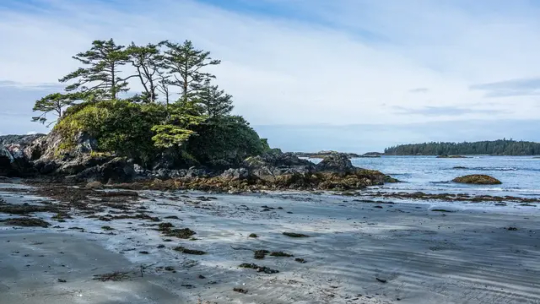
Embarking on a Pacific island-hopping adventure is a passport to paradise, a journey through turquoise waters, lush landscapes, and vibrant cultures. To help you navigate the vastness of the Pacific and make the most of your island-hopping escapade, we've curated a series of enchanting itineraries, each weaving together a tapestry of unique experiences across this vast oceanic expanse.
1. "Polynesian Paradise": Exploring French Polynesia and Beyond
Days 1-4: Tahiti – The Gateway to Paradise:
Begin your journey in Tahiti, the largest island in French Polynesia. Explore Papeete's vibrant markets, indulge in Polynesian cuisine, and unwind on the black sand beaches. Don't miss a visit to the Museum of Tahiti and Her Islands for a cultural immersion.
Days 5-8: Bora Bora – Overwater Bliss:
Hop over to Bora Bora for an iconic stay in an overwater bungalow. Snorkel in crystal-clear lagoons, embark on a shark and ray snorkeling safari, and witness a breathtaking sunset from the iconic Mount Otemanu.
Days 9-12: Moorea – Adventures in Paradise:
Next, head to Moorea, just a short ferry ride from Tahiti. Engage in water activities like paddleboarding and jet-skiing, explore pineapple plantations, and embark on a 4x4 safari to discover Moorea's rugged interior.
Days 13-16: Fiji – Cultural Delights:
Fly to Fiji, where you'll be greeted by warm smiles and the melodious sounds of Fijian song. Visit traditional villages, partake in a kava ceremony, and explore the vibrant coral reefs. Don't miss the chance to witness a fire-walking ceremony, a Fijian cultural tradition.
2. "Micronesian Odyssey": Exploring Palau, Yap, and Beyond
Days 1-4: Palau – Underwater Wonderland:
Start your Micronesian adventure in Palau, renowned for its pristine coral reefs and vibrant marine life. Dive or snorkel in the famous Jellyfish Lake, explore World War II wrecks, and trek through lush jungles.
Days 5-8: Yap – Traditional Charms:
Head to Yap, a lesser-known gem, where tradition and nature coexist harmoniously. Witness traditional stone money ceremonies, go manta ray diving, and explore Yap's ancient stone paths.
Days 9-12: Chuuk (Truk) Lagoon – Wrecks and Reefs:
Continue your Micronesian journey to Chuuk Lagoon, a mecca for wreck diving enthusiasts. Explore the sunken World War II relics and discover the fascinating history that lies beneath the crystal-clear waters.
Days 13-16: Palau – Return to Paradise:
Conclude your Micronesian odyssey by returning to Palau. Take this opportunity to revisit your favorite dive sites, relax on pristine beaches, and savor the unique blend of Micronesian and Melanesian cultures.
3. "Aloha Spirit": Hawaii's Diverse Delights
Days 1-4: Oahu – Urban Energy and Natural Beauty:
Begin your Hawaiian journey in Oahu, home to the bustling city of Honolulu and the iconic Waikiki Beach. Explore Pearl Harbor, hike to Diamond Head, and immerse yourself in the vibrant cultural scene of Honolulu.
Days 5-8: Maui – Haleakalā Sunrise and Hana Adventures:
Fly to Maui and witness the sunrise from the summit of Haleakalā. Explore the lush landscapes of Hana, visit the famous Road to Hana, and snorkel in the crystal-clear waters of Molokini Crater.
Days 9-12: Big Island – Volcanic Wonders:
Head to the Big Island, where you'll witness the fiery spectacle of Kilauea Volcano in Hawaii Volcanoes National Park. Explore the diverse ecosystems, from lush rainforests to black sand beaches, and stargaze atop Mauna Kea.
Days 13-16: Kauai – Garden Isle's Serenity:
Conclude your Hawaiian adventure in Kauai, the "Garden Isle." Discover the breathtaking landscapes of the Na Pali Coast, embark on a helicopter tour over Waimea Canyon, and relax on the secluded beaches of Hanalei Bay.
4. "Melanesian Marvels": Vanuatu, Solomon Islands, and Beyond
Days 1-4: Vanuatu – Volcanic Adventures:
Start your Melanesian exploration in Vanuatu, a nation of volcanic islands. Witness the fiery spectacle of Mount Yasur, snorkel in the underwater caves of Riri Blue Hole, and experience the vibrant local culture.
Days 5-8: Solomon Islands – Historical Riches and Coral Reefs:
Fly to the Solomon Islands, where history and nature intertwine. Explore the World War II relics in Honiara, dive in the famous Marovo Lagoon, and witness traditional panpipe performances.
Days 9-12: Papua New Guinea – Cultural Immersion:
Continue your Melanesian journey to Papua New Guinea, known for its rich tribal cultures. Visit the Goroka Show, explore the Sepik River's traditional villages, and dive among World War II wrecks.
Days 13-16: Fiji – Tropical Finale:
Conclude your Melanesian marvels in Fiji, where you can unwind on pristine beaches, snorkel in vibrant coral gardens, and relish the diverse flavors of Fijian cuisine.
Pacific island hopping is a journey of a lifetime, and these curated itineraries offer a glimpse into the enchanting possibilities that await. Whether you're drawn to the tropical allure of French Polynesia, the underwater wonders of Micronesia, the diverse landscapes of Hawaii, or the cultural richness of Melanesia, the Pacific Ocean is a vast playground of exploration. So, set sail, embrace the spirit of adventure, and let the Pacific's seafaring dreams become your reality.
Island-hopping travel packages

Embarking on an island-hopping adventure is like entering a realm of enchantment, where each island reveals its unique charm and promises a tapestry of experiences. For travelers seeking a seamless and unforgettable journey through sun-kissed paradises, island-hopping travel packages offer the perfect solution. In this guide, we'll explore the allure of island-hopping travel packages, providing insights into what makes them so enticing and a few dreamy destinations to consider.
Why Choose Island-Hopping Travel Packages?
- Seamless Itineraries
Island-hopping travel packages are crafted with meticulous detail, offering travelers seamless itineraries that eliminate the hassle of planning each leg of the journey. From flights and accommodations to transportation between islands, these packages ensure a smooth and stress-free experience.
- Local Expertise
Many island-hopping packages are curated by travel experts with in-depth knowledge of the destinations. This means you can trust that each stop on your itinerary is thoughtfully chosen to provide an authentic and enriching experience, from hidden gems to iconic landmarks.
- Cost-Effective
Opting for an island-hopping package can often be more cost-effective than planning each component individually. These packages may include bundled deals on flights, accommodations, and activities, helping you make the most of your budget without sacrificing the quality of your experience.
- Time-Efficient
For those with limited time, island-hopping packages are a time-efficient way to explore multiple destinations in a single journey. The itineraries are designed to maximize your time on each island, ensuring you get a taste of the local culture, natural wonders, and activities without feeling rushed.
Dreamy Destinations with Island-Hopping Packages
- Greek Islands Adventure
Embark on a journey through the enchanting Greek Islands with a carefully curated island-hopping package. Start in the historical splendor of Athens before venturing into the Cyclades, where the white-washed buildings of Santorini and the vibrant nightlife of Mykonos await. Cruise through the azure waters, exploring hidden coves and ancient ruins along the way.
- Caribbean Bliss
Indulge in the laid-back vibes of the Caribbean with an island-hopping package that takes you through the turquoise waters of the region. Start in the Bahamas, move on to the lush landscapes of Jamaica, and end your journey in the vibrant markets of Barbados. Snorkel in coral gardens, savor local delicacies, and unwind on pristine beaches.
- Philippine Archipelago Expedition
Explore the stunning archipelago of the Philippines with an island-hopping adventure that showcases the diverse beauty of this Southeast Asian gem. From the white-sand beaches of Palawan to the vibrant coral reefs of Bohol, immerse yourself in the rich culture, warm hospitality, and natural wonders of the Philippines.
- Croatian Coastal Escape
Discover the Adriatic's hidden treasures with an island-hopping package along the Croatian coast. Begin in the historic city of Dubrovnik, traverse the picturesque landscapes of Hvar, and explore the natural wonders of Korčula. Sail through crystal-clear waters, visit medieval towns, and savor the delectable seafood cuisine of the Dalmatian coast.
Tips for Choosing the Perfect Island-Hopping Travel Package:
- Define Your Priorities
Consider what aspects of island-hopping are most important to you. Whether it's cultural immersion, adventure activities, or relaxation on pristine beaches, choose a package that aligns with your travel preferences.
- Check Inclusions and Exclusions
Thoroughly review the inclusions and exclusions of each package. Ensure that the essentials like flights, accommodations, and inter-island transportation are covered. Additionally, check if any activities, meals, or guided tours are included.
- Consider the Pace
Evaluate the pace of the itinerary. Some packages may offer a leisurely exploration with more downtime, while others might be packed with activities. Choose a pace that suits your travel style and desired level of adventure.
- Read Reviews and Seek Recommendations
Before finalizing your decision, read reviews from travelers who have experienced the same package. Additionally, seek recommendations from friends or online communities to ensure the package meets your expectations.
- Customization Options
Check if the island-hopping package allows for customization. This flexibility can be valuable if you have specific preferences or wish to extend your stay on a particular island.
Island-hopping travel packages are the key to unlocking the magic of diverse destinations seamlessly. Whether you're dreaming of exploring the historical charm of the Greek Islands, basking in Caribbean sunshine, immersing yourself in the Philippines' archipelagic beauty, or navigating the Croatian coastline, these packages offer a ticket to unforgettable adventures.
As you consider your next travel escapade, let the allure of island-hopping packages guide you toward an exploration of multiple paradises in one seamless journey. Embrace the spirit of adventure, pack your bags, and set sail for a world where each island tells its own unique story and promises a piece of paradise.
Exploring remote islands in the Pacific

Embarking on a journey to explore remote islands in the Pacific is like entering a world untouched by the hurried pace of modern life. These isolated paradises, scattered across the vastness of the Pacific Ocean, promise intrepid travelers a unique blend of pristine landscapes, rich cultures, and unparalleled tranquility. In this guide, we'll delve into the allure of exploring remote islands in the Pacific, uncovering hidden gems and inviting you to embark on an unforgettable odyssey.
The Allure of Remote Islands
- Untouched Natural Beauty
Remote islands in the Pacific boast untouched natural beauty that captivates the soul. From lush rainforests to coral-fringed atolls, these landscapes are a testament to the raw power of nature, offering a chance to witness ecosystems that remain unspoiled by human interference.
- Cultural Richness
Beyond their natural allure, remote Pacific islands are often home to vibrant and distinct cultures. Indigenous communities living on these islands have preserved traditions, languages, and customs that provide a glimpse into the rich tapestry of Pacific history.
- Peace and Solitude
One of the primary draws of exploring remote islands is the unparalleled peace and solitude they offer. Far from the bustling crowds of popular tourist destinations, these islands provide an escape into a serene realm where the only sounds are the lapping of waves and the whisper of the wind through swaying palm trees.
Read the full article
0 notes
Text
Timeless Echoes: Exploring the Historical Landmarks of Europe


Europe, a continent steeped in rich history and cultural heritage, boasts an array of historical landmarks that narrate tales of bygone eras. From medieval castles perched on hillsides to ancient ruins echoing the whispers of civilizations, each landmark stands as a testament to Europe's enduring legacy. In this exploration, we delve into the heart of Europe's history, uncovering the stories behind some of its most captivating historical landmarks.
Historical Landmarks of Europe

1. The Colosseum, Rome, Italy: A Grand Amphitheater of Gladiatorial Spectacles
A symbol of ancient Rome's architectural prowess, the Colosseum, also known as the Flavian Amphitheatre, stands as an iconic testament to the grandeur of the Roman Empire. Constructed in AD 70-80, this colossal amphitheater once hosted gladiatorial contests, animal hunts, and mock sea battles. Its monumental arches and towering structure continue to captivate visitors, offering a glimpse into the ancient world's spectacle and entertainment.
2. Acropolis of Athens, Greece: A Citadel of Ancient Greek Civilization
Perched atop a rocky outcrop, the Acropolis of Athens is a beacon of ancient Greek civilization. Dominated by the majestic Parthenon, a temple dedicated to the goddess Athena, this UNESCO World Heritage site is a testament to the architectural brilliance and cultural achievements of ancient Athens. The Acropolis offers panoramic views of the city below, inviting visitors to immerse themselves in the legacy of democracy, philosophy, and the arts.
3. Stonehenge, Wiltshire, England: Mystical Megaliths of Prehistoric England
In the rolling hills of Wiltshire, England, stands Stonehenge, a mysterious prehistoric monument that has fascinated scholars and visitors alike for centuries. Comprising massive standing stones arranged in a circular pattern, Stonehenge is believed to have been constructed between 3000 BC and 2000 BC. The purpose of this ancient marvel remains shrouded in mystery, adding an air of intrigue to its enigmatic presence on the English landscape.
4. The Louvre, Paris, France: A Palace Turned Museum of Art and Culture
Originally built as a royal palace in the 12th century, the Louvre in Paris has evolved into the world's largest art museum. With a storied history that includes serving as a residence for French monarchs, the Louvre now houses an extensive collection of art spanning from ancient civilizations to the 19th century. The iconic glass pyramid entrance invites visitors into a treasure trove of artistic masterpieces, including the renowned Mona Lisa.
5. The Alhambra, Granada, Spain: A Moorish Jewel of Islamic Architecture
Nestled amidst the Sierra Nevada mountains, the Alhambra is a breathtaking palace and fortress complex that showcases the splendor of Islamic architecture. Constructed during the mid-13th century by the Nasrid Dynasty, the Alhambra features intricately designed courtyards, ornate archways, and the mesmerizing Nasrid Palaces. This UNESCO World Heritage site stands as a testament to the flourishing intellectual and artistic achievements of Moorish Spain.
6. The Vatican City, Vatican City State: Spiritual and Cultural Epicenter
Enclaved within the heart of Rome, the Vatican City stands as the world's smallest independent state and the spiritual center of the Roman Catholic Church. Home to St. Peter's Basilica, the Sistine Chapel, and the Vatican Museums, this tiny city-state is a treasure trove of religious and artistic marvels. Michelangelo's masterpiece, the frescoes of the Sistine Chapel, and the awe-inspiring dome of St. Peter's Basilica draw millions of visitors each year.
7. Prague Castle, Prague, Czech Republic: A Castle Complex of Architectural Marvels
Perched on the hills overlooking the Vltava River, Prague Castle is a sprawling complex that encompasses centuries of Czech history. With structures ranging from the Gothic-style St. Vitus Cathedral to the picturesque Golden Lane, the castle offers a journey through various architectural periods. As the largest ancient castle in the world, Prague Castle is not only a historical gem but also a symbol of the resilience of the Czech people.
8. Neuschwanstein Castle, Bavaria, Germany: A Fairytale Fortress Amidst Alpine Beauty
Nestled amidst the Bavarian Alps, Neuschwanstein Castle is a fairytale fortress that seems to have leapt from the pages of a storybook. Commissioned by King Ludwig II of Bavaria in the 19th century, the castle features medieval-inspired architecture and offers breathtaking views of the surrounding alpine landscapes. Neuschwanstein's romantic allure has inspired countless tales and serves as a testament to Ludwig's vision of a fantastical retreat.
9. The Tower of London, London, England: A Fortress of Royalty and Intrigue
A symbol of power, resilience, and sometimes, treachery, the Tower of London has played a central role in English history for nearly a millennium. Originally built by William the Conqueror in the 11th century, the Tower has served as a royal palace, prison, and treasury. Visitors can explore the White Tower, the Crown Jewels, and the infamous Traitor's Gate, immersing themselves in the complex tapestry of England's royal history.
10. The Charles Bridge, Prague, Czech Republic: A Historic Span Across the Vltava River
Stretching gracefully across the Vltava River, the Charles Bridge is an iconic symbol of Prague's architectural charm. Commissioned by King Charles IV in the 14th century, this historic bridge is adorned with 30 Baroque-style statues and offers panoramic views of Prague Castle and the city's skyline. Strolling across the Charles Bridge is a step back in time, with each cobblestone echoing the footsteps of centuries past.
Europe's historical landmarks are more than just architectural marvels; they are living chronicles of human civilization, resilience, and creativity. From the grandeur of the Colosseum to the mystique of Stonehenge, each landmark tells a unique story, inviting visitors to immerse themselves in the rich tapestry of Europe's past. As you traverse these timeless echoes, you not only witness history but become a part of the enduring legacy that defines this extraordinary continent.
Famous historical sites in Europe
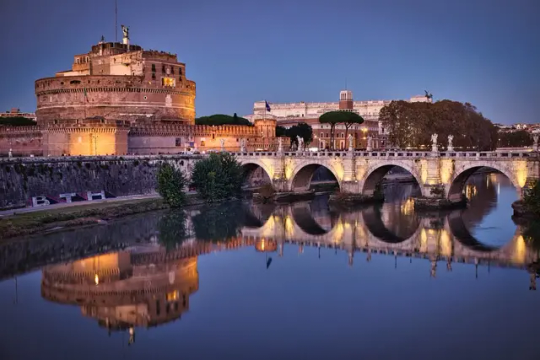
Europe, a continent steeped in history, is home to an array of iconic landmarks that serve as timeless witnesses to the ebb and flow of centuries. From ancient ruins to medieval castles, each historical site tells a compelling story of the civilizations that shaped Europe's cultural tapestry. In this exploration, we unveil the allure of famous historical sites that stand as testaments to the continent's rich and diverse heritage.
1. The Acropolis of Athens, Greece: Cradle of Ancient Civilization
Perched atop a rocky outcrop, the Acropolis of Athens is a monumental complex that encapsulates the zenith of ancient Greek civilization. Dominated by the Parthenon, a temple dedicated to the goddess Athena, the Acropolis showcases the architectural brilliance and cultural achievements of ancient Athens. As you wander through this UNESCO World Heritage site, you're transported back to an era where philosophy, democracy, and the arts flourished.
2. The Roman Colosseum, Rome, Italy: Amphitheater of Gladiatorial Grandeur
An epitome of Roman engineering prowess, the Colosseum in Rome stands as a symbol of grandeur and spectacle. Constructed between AD 70 and 80, this colossal amphitheater once hosted gladiatorial contests, animal hunts, and public spectacles. Its iconic arches and imposing structure continue to captivate visitors, offering a vivid glimpse into the ancient Roman appetite for entertainment.
3. Stonehenge, Wiltshire, England: Mystical Megaliths of Prehistory
Amidst the rolling hills of Wiltshire, England, Stonehenge emerges as a mystical and enigmatic prehistoric monument. Comprising massive standing stones arranged in a circular pattern, Stonehenge's purpose remains a captivating mystery. Dating back to 3000 BC, this UNESCO World Heritage site invites contemplation of ancient rituals, celestial alignments, and the enduring allure of these awe-inspiring megaliths.
4. The Louvre, Paris, France: Citadel of Art and Culture
Originally a royal palace, the Louvre in Paris has transformed into the world's largest art museum. Housing an unparalleled collection spanning from antiquity to the 19th century, the Louvre is a treasure trove of artistic masterpieces. From the iconic Mona Lisa to the Venus de Milo, the museum's galleries offer a mesmerizing journey through the evolution of human creativity and expression.
5. The Alhambra, Granada, Spain: Jewel of Islamic Architecture
Nestled amidst the Sierra Nevada mountains, the Alhambra is a testament to the breathtaking beauty of Islamic architecture. Constructed during the mid-13th century by the Nasrid Dynasty, this palace and fortress complex in Granada, Spain, features intricate courtyards, ornate archways, and the enchanting Nasrid Palaces. The Alhambra stands as a beacon of Moorish Spain's intellectual and artistic zenith.
6. The Vatican City, Vatican City State: Spiritual and Artistic Epitome
Enclaved within Rome, the Vatican City is the smallest independent state globally and the spiritual nucleus of the Roman Catholic Church. Home to St. Peter's Basilica, the Sistine Chapel, and the Vatican Museums, this tiny city-state is a repository of religious and artistic wonders. Michelangelo's masterpieces, the frescoes of the Sistine Chapel, and the grandeur of St. Peter's Basilica collectively offer a transcendent experience.
7. Prague Castle, Prague, Czech Republic: A Castle Complex of Historic Significance
Dominating the Prague skyline, Prague Castle is a sprawling complex that encapsulates centuries of Czech history. From the Gothic-style St. Vitus Cathedral to the charming Golden Lane, the castle is a microcosm of various architectural periods. As the largest ancient castle globally, Prague Castle stands as a symbol of Czech resilience and the enduring spirit of its people.
8. Neuschwanstein Castle, Bavaria, Germany: Fairytale Fortress in Alpine Splendor
Nestled in the Bavarian Alps, Neuschwanstein Castle is a fairytale fortress that seems plucked from the pages of a storybook. Commissioned by King Ludwig II of Bavaria in the 19th century, the castle boasts medieval-inspired architecture and offers stunning views of the alpine landscapes. Neuschwanstein's romantic allure has inspired countless tales, making it a symbol of Ludwig's vision of a fantastical retreat.
9. The Tower of London, London, England: Fortress of Royal Intrigue
The Tower of London, standing along the banks of the River Thames, is a fortress with a storied history that spans nearly a millennium. Built by William the Conqueror in the 11th century, the Tower has served as a royal palace, prison, and treasury. With the White Tower, the Crown Jewels, and the infamous Traitor's Gate, the Tower of London is a multifaceted icon of England's royal legacy.
10. The Charles Bridge, Prague, Czech Republic: Historic Span Across the Vltava River
Stretching gracefully over the Vltava River, the Charles Bridge is an iconic symbol of Prague's architectural charm. Commissioned by King Charles IV in the 14th century, this historic bridge is adorned with 30 Baroque-style statues and offers panoramic views of Prague Castle. Each cobblestone on the Charles Bridge echoes the footsteps of centuries, making it a timeless connection to Prague's storied past.
Famous historical sites in Europe are not mere relics; they are living testaments to the triumphs, tragedies, and enduring legacies of civilizations. As you traverse these iconic landmarks, you become a part of the narrative woven into Europe's cultural fabric. From the Acropolis to Neuschwanstein Castle, each site offers a glimpse into the diverse tapestry of history that defines this extraordinary continent.
UNESCO World Heritage landmarks in Europe

Europe, a continent steeped in history and cultural diversity, hosts a plethora of UNESCO World Heritage landmarks that stand as testaments to human achievement, creativity, and the richness of the region's heritage. In this exploration, we embark on a journey to discover and appreciate the UNESCO World Heritage landmarks that grace the European landscape, each site a treasure trove of history, art, and natural wonders.
1. The Acropolis of Athens, Greece
Perched majestically atop a rocky outcrop, the Acropolis of Athens is a UNESCO World Heritage site that encapsulates the zenith of ancient Greek civilization. Dominated by the Parthenon, a temple dedicated to the goddess Athena, the Acropolis showcases the architectural brilliance and cultural achievements of ancient Athens. As you wander through this historic site, you are transported back to an era where philosophy, democracy, and the arts flourished.
2. The Historic Centre of Rome, Italy
Rome, often referred to as the "Eternal City," boasts a UNESCO World Heritage site encompassing its historic center. From the iconic Colosseum, where gladiators once battled, to the Roman Forum, a hub of ancient political and social life, the historic center of Rome is an open-air museum of human history. Each cobblestone narrates tales of the Roman Empire, Renaissance art, and the enduring spirit of this timeless city.
3. Stonehenge, Wiltshire, England
In the rolling hills of Wiltshire, England, Stonehenge stands as a UNESCO World Heritage site shrouded in mystery. Comprising massive standing stones arranged in a circular pattern, Stonehenge's purpose remains a captivating enigma. Dating back to 3000 BC, this prehistoric monument invites contemplation of ancient rituals, celestial alignments, and the enduring allure of these awe-inspiring megaliths.
4. The Historic Centre of Vienna, Austria
Vienna, the imperial capital of the Habsburg Empire, boasts a UNESCO World Heritage site in its historic center. From the opulent Schönbrunn Palace to the magnificent St. Stephen's Cathedral, Vienna's historic core is a harmonious blend of architectural styles spanning centuries. The city's grandeur reflects the cultural and political significance it held throughout European history.
5. The Tower of London, London, England
Standing stoically along the banks of the River Thames, the Tower of London is a UNESCO World Heritage site with a storied history that spans nearly a millennium. Built by William the Conqueror in the 11th century, the Tower has served as a royal palace, prison, and treasury. With the White Tower, the Crown Jewels, and the infamous Traitor's Gate, the Tower of London is a multifaceted icon of England's royal legacy.
6. Mont-Saint-Michel and its Bay, France
Rising dramatically from the tidal flats of Normandy, Mont-Saint-Michel is a medieval abbey perched atop a rocky island. Designated as a UNESCO World Heritage site, this architectural marvel has captured the imagination of visitors for centuries. From the narrow streets winding through the abbey to the panoramic views of the surrounding bay, Mont-Saint-Michel is a testament to the ingenuity of medieval builders.
7. The Vatican City, Vatican City State
Enclaved within Rome, the Vatican City is the smallest independent state globally and the spiritual nucleus of the Roman Catholic Church. Home to St. Peter's Basilica, the Sistine Chapel, and the Vatican Museums, this tiny city-state is a repository of religious and artistic wonders. Michelangelo's masterpieces, the frescoes of the Sistine Chapel, and the grandeur of St. Peter's Basilica collectively offer a transcendent experience.
8. The Palace and Park of Versailles, France
Versailles, the epitome of opulence and grandeur, is a UNESCO World Heritage site that reflects the splendor of the French monarchy. The Palace of Versailles, with its Hall of Mirrors and lavish gardens, is an iconic symbol of absolute monarchy. As you stroll through the Hall of Mirrors or wander through the meticulously landscaped gardens, you are transported to an era of regal extravagance.
9. The Alhambra, Granada, Spain
Nestled amidst the Sierra Nevada mountains, the Alhambra is a UNESCO World Heritage site and a testament to the breathtaking beauty of Islamic architecture. Constructed during the mid-13th century by the Nasrid Dynasty, this palace and fortress complex in Granada, Spain, features intricate courtyards, ornate archways, and the enchanting Nasrid Palaces. The Alhambra stands as a beacon of Moorish Spain's intellectual and artistic zenith.
10. The Historic Centre of Prague, Czech Republic
Prague, often called the "City of a Hundred Spires," boasts a UNESCO World Heritage site in its historic center. From the Gothic-style St. Vitus Cathedral to the charming Golden Lane, the center is a microcosm of various architectural periods. As the largest ancient castle globally, Prague Castle stands as a symbol of Czech resilience and the enduring spirit of its people.
UNESCO World Heritage landmarks in Europe are not just monuments; they are living embodiments of the continent's rich and diverse cultural heritage. From the ancient marvels of Athens to the medieval charm of Mont-Saint-Michel and the grandeur of Versailles, each site invites us to appreciate the collective achievements of humanity. As we explore these UNESCO treasures, we connect with the threads of history that have shaped the European landscape and celebrate the enduring beauty of these cultural gems.
Architectural history of Europe

Europe, a continent rich in cultural diversity, stands as a living canvas adorned with architectural masterpieces that narrate tales of different epochs. The architectural history of Europe is a journey through time, weaving together the intricate threads of innovation, cultural exchange, and artistic expression. In this exploration, we unravel the layers of Europe's architectural heritage, each building a testament to the spirit of its era.
1. Ancient Greece and Rome: Pillars of Classical Influence
The foundations of European architectural history rest upon the pillars of Ancient Greece and Rome.
Read the full article
0 notes
Text
Unveiling the Past: Embarking on Historical Battlefield Tours


Embarking on a journey through time, historical battlefield tours offer a unique and immersive experience that goes beyond the pages of a history book. As you step onto hallowed grounds where pivotal moments in history unfolded, you become a witness to the stories that shaped nations and defined generations. In this blog post, we will delve into the fascinating world of historical battlefield tours, exploring the significance of these sites and the enriching experiences they provide.
Historical Battlefield Tours

Exploring Hallowed Grounds
Historical battlefield tours take you to the very heart of the past, allowing you to walk in the footsteps of those who fought for freedom, justice, and ideals. Whether it's the iconic battlefields of Gettysburg, the solemn grounds of Normandy, or the historic sites of ancient civilizations, each location tells a tale that is both poignant and powerful.
These tours provide a tangible connection to history, giving visitors a deeper understanding of the challenges faced by soldiers and civilians alike. Walking through the fields, trenches, and forts, one can't help but feel the weight of the sacrifices made on these battlegrounds.
Educational Significance
One of the remarkable aspects of historical battlefield tours is their educational value. Far from being a mere excursion, these tours serve as outdoor classrooms where history comes alive. Knowledgeable guides provide insights into the strategic maneuvers, the bravery of soldiers, and the consequences of these battles on the course of history.
From the weapons used to the tactics employed, visitors gain a comprehensive understanding of the events that transpired. Many tours incorporate multimedia presentations, artifacts, and interactive exhibits, enhancing the learning experience and making history accessible to all.
Preserving Heritage
Historical battlefield tours play a crucial role in preserving our cultural heritage. By maintaining and protecting these sites, we ensure that future generations can learn from the past and appreciate the sacrifices made by those who came before them. Governments, conservation organizations, and local communities work hand in hand to safeguard these historical treasures for the benefit of all.
Communal Reflection
Visiting a historical battlefield is not only an individual journey but also a communal experience. Sharing the site with fellow enthusiasts, engaging in discussions, and participating in group activities foster a sense of shared history. These tours become opportunities for people to come together, reflect on the past, and contemplate the lessons that can be drawn from the struggles and triumphs of bygone eras.
Practical Considerations
When planning a historical battlefield tour, consider factors such as the season, available amenities, and the level of physical activity involved. Many tours cater to a variety of preferences, offering walking tours, guided bus excursions, or even self-guided options. Additionally, check for visitor centers, museums, and resources that can enhance your understanding of the historical context.
Historical battlefield tours provide a gateway to the past, allowing us to explore the complexities of history in a tangible and memorable way. Whether you are a history enthusiast, a student, or someone seeking a unique travel experience, these tours offer a profound connection to the events that have shaped our world. As you stand on these hallowed grounds, you'll realize that history is not just a story to be told; it's an experience to be lived. So, lace up your walking shoes, pack your curiosity, and embark on a journey through time with historical battlefield tours – where the echoes of the past still resonate today.
Battlefield history and tours

Embarking on a journey through the annals of time, battlefield history and tours provide an unparalleled opportunity to unravel the stories woven into the very fabric of our past. From ancient conflicts to modern warfare, these hallowed grounds serve as witnesses to the triumphs, tragedies, and transformations that have shaped civilizations. In this blog post, we'll delve into the captivating world of battlefield history and tours, exploring their significance and the immersive experiences they offer.
Exploring the Layers of Battlefield History
Battlefield history is a tapestry of human courage, strategy, and sacrifice. It spans centuries and continents, recounting the tales of epic clashes that have altered the course of nations. From iconic battles like the Battle of Gettysburg and the D-Day landings to lesser-known skirmishes, each site has a unique story to tell.
These battlegrounds are living classrooms, offering insights into the political, social, and cultural dynamics that fueled conflicts. Understanding the context surrounding these events is essential to appreciating the complexities of war and its profound impact on societies.
Immersive Experiences Through Battlefield Tours
The allure of battlefield tours lies in their ability to transport participants from passive observers to active participants in history. Whether guided by knowledgeable experts or explored through self-guided itineraries, these tours create an immersive experience that transcends traditional learning methods.
Walking the same paths as soldiers, standing in the shadow of historic landmarks, and witnessing the scars left by battle – these experiences forge a deep connection between the present and the past. Modern technology, such as augmented reality and interactive exhibits, further enhances the tour experience, bringing history to life in ways unimaginable just a few years ago.
Educational Significance
Battlefield tours are not just recreational activities; they are powerful educational tools. By engaging with primary sources, artifacts, and on-site presentations, participants gain a nuanced understanding of the events that unfolded. Knowledgeable guides provide context, weaving together the intricate threads of history and making it accessible to visitors of all ages.
These tours offer a visceral understanding of military tactics, the impact of terrain on battles, and the human stories behind the conflicts. Schools, universities, and history enthusiasts alike recognize the value of these tours as unique opportunities for experiential learning.
Preservation of Historical Sites
The conservation of battlefield sites is a crucial aspect of preserving our shared heritage. Organizations, governments, and local communities work tirelessly to maintain these sites, ensuring that future generations can continue to learn from them. Preservation efforts go beyond physical structures; they include the protection of ecosystems and the commemoration of those who fought and perished on these grounds.
Sustainable Tourism
As interest in battlefield tours grows, there is a heightened awareness of the need for sustainable tourism practices. Balancing the preservation of historical sites with the influx of visitors requires careful planning and responsible tourism initiatives. Collaborations between tour operators, local communities, and conservationists aim to create experiences that are not only enriching for visitors but also sustainable for the long-term protection of these sites.
Battlefield history and tours offer a profound journey into the past, allowing us to touch the untold stories of valor and sacrifice. As we stand on these sacred grounds, we become witnesses to the resilience of the human spirit and the transformative power of historical events. Whether you are a history buff, a student, or a curious traveler, these tours beckon you to explore, learn, and reflect on the chapters of history that echo through time. So, embrace the opportunity to step into the footprints of the past and uncover the rich tapestry of battlefield history and tours – where the echoes of battles still resonate, inviting us to understand, remember, and honor the legacy of those who came before us.
WWI and WWII battlefield sites

The scars of World War I and World War II have left an indelible mark on the landscapes where history unfolded. Visiting battlefield sites from these two monumental conflicts is a powerful and poignant experience, offering a profound connection to the past. In this exploration, we delve into the stories etched into the grounds of WWI and WWII, discovering the significance of these sites and the lessons they continue to impart.
World War I Battlefield Sites:
1. The Somme, France - Honoring Sacrifice on Hallowed Ground
The Somme, a region in northern France, witnessed one of the bloodiest battles of World War I. The rolling fields and preserved trenches serve as a poignant reminder of the unimaginable sacrifices made by soldiers. Memorials such as Thiepval and the Beaumont-Hamel Newfoundland Memorial pay tribute to the thousands who lost their lives. The preserved landscape immerses visitors in the haunting reality of trench warfare.
2. Verdun, France - Where Fortresses Bear Witness to Carnage
Verdun, another French battlefield site, stands as a symbol of enduring resilience and the human cost of war. The forts, trenches, and ossuaries scattered across the landscape tell the story of the relentless battles that unfolded here. The Douaumont Ossuary, with its solemn tower and crypt, houses the remains of soldiers and serves as a powerful testament to the enduring impact of war on a generation.
3. Ypres, Belgium - Flanders Fields and the Last Post Ceremony
Ypres, in the heart of Flanders, Belgium, is synonymous with the haunting poem "In Flanders Fields." The Menin Gate, inscribed with the names of missing soldiers, and the Last Post Ceremony at the Menin Gate Memorial pay homage to the fallen. Ypres, surrounded by serene countryside, stands as a poignant reminder of the devastation wrought by World War I.
World War II Battlefield Sites:
4. Normandy, France - D-Day Beaches and the Path to Liberation
Normandy's beaches, including Omaha, Utah, and Juno, witnessed the historic D-Day landings on June 6, 1944. The remnants of Mulberry harbors, Pointe du Hoc's rugged cliffs, and the American Cemetery at Omaha Beach provide a visceral connection to the monumental effort to liberate Europe. Normandy is a living memorial to the courage and sacrifice of the Allied forces.
5. Auschwitz-Birkenau, Poland - Bearing Witness to Holocaust Horrors
While not a traditional battlefield, Auschwitz-Birkenau in Poland serves as a haunting reminder of the atrocities committed during World War II. The preserved concentration and extermination camps stand as a solemn memorial to the millions who perished. Visiting Auschwitz-Birkenau is a somber yet essential experience, underscoring the importance of remembrance and the vow to never forget.
6. Dunkirk, France - Evacuation and Resilience
Dunkirk, immortalized for the daring evacuation of Allied soldiers in 1940, bears witness to both the chaos of war and the resilience of those facing adversity. The beaches and the Dunkirk War Museum narrate the tale of Operation Dynamo, where a makeshift flotilla of boats rescued hundreds of thousands of soldiers from the encroaching German forces.
Reflections on Visiting Battlefield Sites:
7. The Ardennes, Belgium - Battle of the Bulge and Winter Warfare
The Ardennes, known for the Battle of the Bulge, offers insights into the harsh winter warfare that characterized this pivotal conflict. Bastogne, with its Nuts! Museum and Mardasson Memorial, pays homage to the Allied forces who resisted the German offensive. The dense forests and picturesque landscapes stand in stark contrast to the intensity of the battles fought here.
8. Hiroshima, Japan - A Solemn Reminder of Nuclear Devastation
While not a conventional battlefield, Hiroshima serves as a poignant reminder of the destructive power of war. The Hiroshima Peace Memorial, commonly known as the Atomic Bomb Dome, stands as a symbol of hope and a call for peace. Visiting Hiroshima offers a chance for reflection on the consequences of conflict and the imperative of fostering a world without nuclear weapons.
Exploring WWI and WWII battlefield sites is a profound and humbling journey. These landscapes, marked by sacrifice, resilience, and the quest for freedom, offer a tangible connection to the past. From the haunting trenches of the Somme to the solemnity of Auschwitz-Birkenau and the beaches of Normandy, each site tells a unique story. Visiting these places is not just about understanding history; it's about honoring the lives lost, learning from the past, and working towards a future where the echoes of war are replaced by the pursuit of peace.
Historical war reenactment events

Immersing oneself in history goes beyond the pages of a book or the walls of a museum. For those seeking a more visceral experience, historical war reenactment events offer a unique and captivating journey back in time. These events bring history to life, allowing participants and spectators alike to step into the shoes of soldiers, witness pivotal moments, and gain a profound understanding of the past. In this exploration, we delve into the world of historical war reenactments, where authenticity meets adrenaline.
Understanding Historical War Reenactments:
1. The Art of Living History
Historical war reenactments are a form of living history, where dedicated enthusiasts meticulously recreate significant battles or periods from the past. From the uniforms to the weapons, participants strive for authenticity, aiming to transport themselves and spectators to a bygone era. The goal is not just to recreate events but to offer a tangible and immersive experience of historical life.
2. Authenticity in Every Detail
Participants in historical war reenactments are passionate about authenticity. Every detail, from the stitching on uniforms to the insignia on helmets, is carefully researched and recreated. Weapons and equipment are often exact replicas, and even the tactics used during battles are faithfully reproduced. This commitment to accuracy creates an environment where spectators can genuinely feel transported to the historical moment being depicted.
Types of Historical War Reenactment Events:
3. Civil War Reenactments - Reliving America's Turbulent Past
In the United States, Civil War reenactments are particularly popular. Enthusiasts don Union or Confederate uniforms, reenacting iconic battles such as Gettysburg or Antietam. These events provide a poignant glimpse into the struggles and sacrifices of the soldiers who fought in one of the most pivotal conflicts in American history.
4. World War II Reenactments - Recreating the Global Conflict
World War II reenactments attract participants and spectators worldwide. From the D-Day landings to the Battle of the Bulge, these events capture the scale and intensity of the global conflict. The roar of tanks, the chatter of machine guns, and the sight of vintage aircraft overhead create a sensory-rich experience that transports attendees to the frontlines of history.
5. Medieval and Renaissance Reenactments - A Journey to the Past
Stepping further back in time, medieval and Renaissance reenactments allow participants to relive the pageantry and battles of centuries past. Knights in shining armor joust, archers demonstrate their skill, and encampments showcase the daily life of different social classes. These events provide a colorful and educational experience for spectators of all ages.
The Role of Participants:
6. Passionate Enthusiasts and Historians
Participants in historical war reenactments come from diverse backgrounds. Some are history enthusiasts with a deep passion for a specific period, while others are professional historians or military veterans. The common thread is a shared dedication to preserving and promoting an authentic understanding of history.
7. The Brotherhood of Reenactors
Joining a reenactment group often fosters a sense of camaraderie and shared purpose among participants. Whether they are portraying soldiers, medics, or civilians, reenactors collaborate to create a cohesive and immersive experience. The friendships formed in these groups often extend beyond the battlefield, creating lasting bonds among those who share a love for history.
The Impact on Spectators:
8. Education and Historical Awareness
For spectators, historical war reenactments offer a dynamic and engaging way to learn about the past. Unlike traditional history lessons, reenactments provide a visual and visceral experience that can make historical events more accessible and relatable. Attendees gain a deeper understanding of the challenges faced by those who lived through tumultuous times.
9. Emotional Connection to History
The emotional impact of witnessing a reenactment is undeniable. Whether it's the solemnity of a Civil War encampment or the thunderous roar of tanks in a World War II battle, spectators often find themselves emotionally connected to the events unfolding before them. This emotional resonance is a powerful tool for fostering empathy and understanding.
Challenges and Controversies:
10. Balancing Authenticity and Sensitivity
Historical war reenactments occasionally face challenges related to sensitivity and cultural awareness. Events that involve sensitive topics, such as certain battles or periods, require a delicate balance between historical accuracy and respect for the emotions of both participants and spectators. Reenactors and organizers must navigate these challenges with care and consideration.
11. Addressing Misconceptions
Critics sometimes argue that historical war reenactments glorify or romanticize war. In response, many reenactors emphasize their commitment to education and historical accuracy, aiming to dispel misconceptions about their motives. They stress the importance of preserving the memory of those who lived through historical conflicts and the lessons that can be learned from the past.
Historical war reenactments serve as a captivating bridge between the past and the present.
Read the full article
0 notes
Text
Creating Lasting Memories: Exploring Family-Friendly Vacation Spots


Family vacations are an opportunity to forge unforgettable memories and strengthen bonds. Choosing the right destination is paramount to ensure an experience that caters to all ages, interests, and energy levels. In this guide, we unveil a curated list of family-friendly vacation spots that promise fun, relaxation, and the perfect blend of excitement for every member of the family.
Family-Friendly Vacation Spots

1. Orlando, Florida: The Magic Awaits
Orlando, often referred to as the "Theme Park Capital of the World," is a perennial favorite for families. Home to Walt Disney World Resort, Universal Studios Florida, and SeaWorld Orlando, the city offers a plethora of attractions catering to all age groups. From enchanting character encounters to thrilling rides and live shows, Orlando is a magical destination where every family member can find their happy place.
2. San Diego, California: Sunshine and Seaside Adventures
San Diego's family-friendly appeal lies in its diverse range of activities and temperate climate. The world-renowned San Diego Zoo and Safari Park provide captivating wildlife experiences, while the USS Midway Museum offers a glimpse into naval history. With beautiful beaches, such as La Jolla and Coronado, families can also enjoy water activities, picnics, and the stunning California sunsets.
3. Yellowstone National Park, Wyoming: Nature's Playground
For families seeking an immersive outdoor adventure, Yellowstone National Park is an ideal destination. The park's geothermal wonders, including Old Faithful and the Grand Prismatic Spring, captivate young and old alike. Hiking trails, wildlife spotting, and the awe-inspiring landscapes of Yellowstone make it a natural playground where families can connect with the beauty of the great outdoors.
4. Myrtle Beach, South Carolina: Coastal Charm and Entertainment
Myrtle Beach offers a perfect blend of coastal charm and family-friendly entertainment. Miles of pristine beaches, the iconic Myrtle Beach Boardwalk, and a variety of amusement parks make it an ideal destination for families. From miniature golf courses to water parks and live entertainment theaters, Myrtle Beach ensures there's never a dull moment for families seeking both relaxation and excitement.
5. London, United Kingdom: A Cultural Extravaganza
For families with a penchant for history, culture, and iconic landmarks, London provides an enriching experience. The city's world-class museums, including the British Museum and the Natural History Museum, cater to curious minds. Take a stroll in Hyde Park, visit Buckingham Palace, and enjoy family-friendly theater productions in the West End for a well-rounded exploration of this vibrant city.
6. Banff National Park, Canada: Majestic Mountains and Lakes
Nestled in the Canadian Rockies, Banff National Park offers a stunning backdrop for a family adventure. Majestic mountains, turquoise lakes, and abundant wildlife create a picturesque setting. Families can explore the charming town of Banff, take a dip in the Banff Upper Hot Springs, and embark on scenic drives along the Icefields Parkway for an immersive mountain experience.
7. Tokyo, Japan: Whimsical Wonders and Technology Marvels
Tokyo seamlessly blends tradition and modernity, making it an exciting destination for families. Theme parks like Tokyo Disneyland and Tokyo DisneySea cater to younger audiences, while attractions like the digital art museum teamLab Borderless and the bustling districts of Akihabara and Harajuku captivate older family members. The city's safe and efficient public transportation system adds to the convenience of exploring Tokyo with the family.
8. Cape Cod, Massachusetts: Quaint Seaside Retreat
Cape Cod's idyllic charm and family-friendly atmosphere make it a classic vacation spot. With its picturesque lighthouses, sandy beaches, and charming villages, Cape Cod offers a laid-back retreat. Families can explore the Cape Cod National Seashore, go whale watching, and indulge in fresh seafood for a quintessential New England experience.
In conclusion, family-friendly vacation spots are diverse, catering to a range of interests and preferences. Whether seeking thrills in theme parks, connecting with nature in national parks, or exploring cultural gems in vibrant cities, these destinations ensure that every member of the family has a memorable and enjoyable experience. As you plan your next family getaway, consider these spots that promise a perfect blend of fun, relaxation, and shared adventures.
Kid-friendly travel destinations

Family vacations are an opportunity to create cherished memories, and choosing the right destination can make all the difference, especially when traveling with children. In this guide, we explore some enchanting and kid-friendly travel destinations that promise not only fun and excitement for the little ones but also a delightful experience for the entire family.
1. Disneyland Resort, California: The Happiest Place on Earth
A perennial favorite for families, Disneyland Resort in California is the epitome of magic and wonder. From classic attractions like Sleeping Beauty Castle to the futuristic allure of Star Wars: Galaxy's Edge, Disneyland offers a treasure trove of delights for kids of all ages. Meet beloved characters, enjoy thrilling rides, and immerse yourselves in the enchanting atmosphere of the original theme park that has been capturing hearts for decades.
2. Legoland, Florida: Building Memories Brick by Brick
For young builders and LEGO enthusiasts, Legoland in Florida is a dream come true. This kid-centric theme park is designed with families in mind, featuring interactive rides, intricate LEGO sculptures, and even a water park for refreshing fun. From DUPLO Village for the littlest ones to roller coasters for older children, Legoland ensures a day filled with creativity and excitement.
3. Yellowstone National Park, Wyoming: Nature's Classroom
Yellowstone National Park isn't just a destination for outdoor enthusiasts; it's also a captivating classroom for curious young minds. Kids can witness geysers erupting, marvel at colorful hot springs, and observe wildlife in their natural habitat. Ranger-led programs, interactive exhibits, and the park's unique geothermal features make Yellowstone an educational and awe-inspiring destination for families seeking a deeper connection with nature.
4. Atlantis Paradise Island, Bahamas: Aquatic Adventures Await
If your family craves a tropical escape with a splash of adventure, Atlantis Paradise Island in the Bahamas is the perfect choice. This resort offers a multitude of water-based activities, including a sprawling water park, marine exhibits, and even the opportunity to swim with dolphins. With themed kids' clubs and a variety of family-friendly accommodations, Atlantis ensures a balance of relaxation and excitement.
5. Tokyo Disneyland, Japan: A Magical Blend of East and West
Tokyo Disneyland combines the enchantment of Disney with the cultural richness of Japan, creating a unique and captivating experience for families. The park offers familiar Disney magic alongside exclusive attractions inspired by Japanese folklore and animation. From whimsical parades to character meet-and-greets, Tokyo Disneyland promises a magical journey for both kids and parents.
6. National Air and Space Museum, Washington, D.C.: Where Dreams Take Flight
For young aspiring astronauts and aviation enthusiasts, the National Air and Space Museum in Washington, D.C., is a captivating destination. Home to historic aircraft, space capsules, and interactive exhibits, this museum ignites curiosity about the wonders of the universe. Kids can explore the cockpit of a space shuttle, touch moon rocks, and marvel at the achievements of human flight.
7. San Diego Zoo, California: An Animal Kingdom Adventure
A visit to the San Diego Zoo is like embarking on a global safari without leaving California. This world-renowned zoo provides a habitat for over 3,700 animals, offering an immersive experience for young animal lovers. From giant pandas to playful penguins, the diverse array of species and interactive exhibits make the San Diego Zoo a captivating destination for families seeking a wildlife adventure.
8. Vancouver, Canada: Urban Delights Surrounded by Nature
Vancouver, nestled between mountains and the Pacific Ocean, is an ideal destination for families seeking a balance of urban excitement and natural beauty. Explore Stanley Park with its iconic seawall, visit the Vancouver Aquarium, and take a scenic stroll through the historic Granville Island. With family-friendly attractions, outdoor activities, and a welcoming atmosphere, Vancouver is a destination that caters to the diverse interests of both kids and adults.
In conclusion, kid-friendly travel destinations are not only about entertaining the little ones but also creating an immersive experience for the whole family. Whether it's the enchanting world of Disney, the wonders of nature, or the excitement of interactive museums, these destinations ensure that every family member, regardless of age, can embark on a journey filled with joy, discovery, and unforgettable moments. As you plan your next family adventure, consider these destinations that promise to make your trip a magical and memorable experience for everyone.
Family vacation planning tips

Family vacations are a source of joy and lifelong memories, but the planning process can sometimes feel like a daunting task. To ensure a smooth and enjoyable journey for the entire family, it's crucial to approach the planning phase with thoughtfulness and organization. In this comprehensive guide, we share essential family vacation planning tips to help you create a memorable and stress-free getaway.
1. Start with Clear Objectives
Begin your family vacation planning journey by establishing clear objectives. Discuss with your family members to understand everyone's expectations, interests, and preferences. Whether it's a relaxing beach retreat, an adventure in the great outdoors, or an exploration of cultural landmarks, having a shared vision will guide your decisions throughout the planning process.
2. Set a Realistic Budget
Determining a budget is a fundamental step in family vacation planning. Consider all potential expenses, including transportation, accommodation, meals, activities, and miscellaneous costs. Be realistic about your financial constraints and prioritize spending on experiences that matter most to your family. Setting a budget early on helps avoid financial stress during and after the trip.
3. Choose the Right Destination
Selecting a destination that caters to the diverse interests and ages of your family members is crucial. Consider factors such as climate, activities available, and the overall atmosphere of the location. Whether you opt for a theme park, a beach resort, a national park, or a cultural city, ensure the destination aligns with your family's preferences and offers a variety of experiences for everyone.
4. Plan Ahead, But Stay Flexible
Once you've chosen a destination, plan your itinerary with a balance of structured activities and free time. Pre-book key elements like accommodation and major attractions, but leave room for spontaneity. Unexpected discoveries and leisurely moments often contribute to the most cherished memories. A flexible schedule allows your family to adapt to unforeseen circumstances or simply take a break when needed.
5. Involve Everyone in the Planning Process
Make vacation planning a collaborative effort by involving all family members in decision-making. Allow each person to contribute ideas, whether it's selecting activities, choosing restaurants, or deciding on day trips. This inclusive approach ensures that everyone feels invested in the vacation and enhances the overall enjoyment for each family member.
6. Consider Accommodation Wisely
Choose accommodation that caters to your family's needs and preferences. Family-friendly hotels or vacation rentals with multiple bedrooms, kitchen facilities, and recreational areas are often ideal. Additionally, consider the location's proximity to key attractions and the availability of amenities such as swimming pools or play areas for children.
7. Pack Thoughtfully
Packing efficiently can significantly contribute to the ease of your family vacation. Create a checklist that includes essentials such as clothing, toiletries, medications, and any specific items required for planned activities. Consider the climate of your destination and pack accordingly. If traveling with young children, be sure to bring comfort items and entertainment for the journey.
8. Plan for Downtime
While it's tempting to fill your itinerary with a multitude of activities, it's equally important to plan for downtime. Family vacations should offer moments of relaxation and rejuvenation. Whether it's an afternoon by the pool, a leisurely stroll through a park, or a quiet evening in, allowing time for rest ensures that everyone can recharge and fully enjoy the adventure.
9. Be Mindful of Ages and Abilities
Consider the ages and physical abilities of all family members when planning activities. Ensure that planned excursions and attractions are suitable for everyone, and be realistic about the energy levels of young children or elderly family members. Choosing inclusive activities ensures that the entire family can participate and enjoy the vacation to the fullest.
10. Embrace Technology, but Set Boundaries
While technology can be a valuable tool for navigation, communication, and entertainment during the journey, it's essential to set boundaries. Establish designated tech-free times, especially during meals or shared activities, to encourage meaningful interactions and create lasting memories without constant digital distractions.
11. Capture the Moments
Finally, don't forget to capture the special moments of your family vacation. Whether through photos, videos, or a travel journal, documenting the experiences adds to the nostalgia and allows you to relive the joyous moments long after the trip concludes.
In conclusion, family vacation planning is a multifaceted endeavor that requires careful consideration and thoughtful decision-making. By incorporating these essential tips into your planning process, you can ensure a harmonious and enjoyable journey for every family member. From setting clear objectives to embracing flexibility and capturing the moments, these guidelines will help you create a memorable and stress-free family adventure.
All-inclusive family resorts
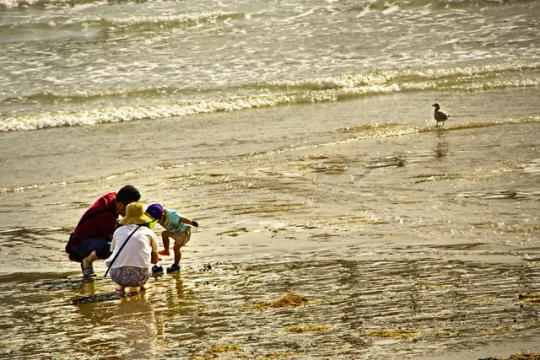
Family vacations are a time for relaxation, bonding, and creating lasting memories. When it comes to ensuring a stress-free and enjoyable experience for every family member, all-inclusive family resorts emerge as a top choice. In this exploration, we delve into the world of all-inclusive family resorts, uncovering the benefits, features, and some standout destinations that promise a holistic and hassle-free escape.
Understanding All-Inclusive Family Resorts: A Gateway to Ease and Enjoyment
All-inclusive family resorts are designed to provide a comprehensive vacation experience, where almost everything is covered in a single upfront price. From accommodations and meals to entertainment and various activities, these resorts aim to create an environment where families can relax and indulge without constantly worrying about additional costs.
The Benefits of All-Inclusive Family Resorts
Budget Certainty:
One of the primary advantages of opting for an all-inclusive family resort is the predictability of expenses. With most of the costs covered upfront, families can create a budget with confidence, eliminating the need to constantly monitor spending during the vacation.
Variety of Dining Options:
All-inclusive resorts often boast a diverse range of dining options, from buffet-style meals to specialty restaurants offering a variety of cuisines. This caters to different tastes within the family, ensuring that even the pickiest eaters find something to enjoy.
Kid-Friendly Amenities:
Family-friendly amenities are a hallmark of all-inclusive resorts. Many establishments offer supervised kids' clubs, pools with water slides, and organized activities for different age groups. This allows parents to enjoy some relaxation while ensuring their children are entertained and well-cared-for.
Entertainment and Activities:
All-inclusive resorts go beyond basic amenities by providing a plethora of entertainment and activities for all ages. From live shows and themed nights to water sports and fitness classes, there's always something to do, ensuring that every family member can find activities tailored to their interests.
Ease of Planning:
The simplicity of planning is a significant draw for families considering all-inclusive resorts. With many details prearranged, such as airport transfers, room accommodations, and scheduled activities, families can focus more on enjoying the vacation and less on coordinating logistics.
Popular All-Inclusive Family Resort Destinations
Beaches Turks & Caicos Resort Villages & Spa:
Nestled in the pristine Turks and Caicos Islands, Beaches Resorts offers an all-inclusive experience tailored for families. With its expansive water park, supervised kids' camps, and a variety of dining options, this resort ensures a memorable Caribbean escape for every family member.
Club Med Punta Cana, Dominican Republic:
Club Med is synonymous with all-inclusive excellence, and the Punta Cana location is no exception. Surrounded by white-sand beaches, this resort offers a plethora of activities, including water sports, circus workshops, and nightly entertainment. The Kids' Clubs cater to different age groups, ensuring that every child has age-appropriate and engaging experiences.
Franklyn D. Resort & Spa, Jamaica:
Recognized for its exceptional service, the Franklyn D. Resort & Spa in Jamaica provides a personalized all-inclusive experience.
Read the full article
0 notes
Text
Exploring the Enchanting World: Rainforest Expeditions Unveiled


Embarking on a rainforest expedition is like stepping into a living, breathing symphony of nature, where every rustle of leaves and chorus of birds tells a story of biodiversity and ecological wonders. In this blog post, we'll delve into the captivating realm of rainforest expeditions, exploring the enchanting landscapes, diverse ecosystems, and the unique flora and fauna that make these journeys unforgettable.
Enchanting Rainforest Expeditions
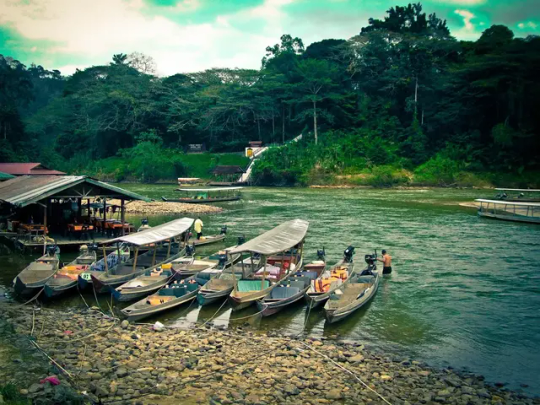
1. The Call of the Canopy
Rainforests are renowned for their towering canopies, creating a world within a world. As you embark on an expedition, the first enchanting encounter is with the canopy itself. Whether traversing treetop walkways or zip-lining through the lush greenery, the canopy offers a mesmerizing perspective, revealing a kaleidoscope of life that thrives above the forest floor. Look out for elusive birds, primates, and vibrant orchids that call the canopy home.
2. Biodiversity Extravaganza
One of the most enchanting aspects of rainforest expeditions is the incredible biodiversity that unfolds at every turn. Rainforests are hotspots of life, hosting a myriad of species from insects to mammals, and from amphibians to reptiles. Explore the forest trails with expert guides who unveil the hidden gems of biodiversity – from brilliantly colored poison dart frogs to camouflaged leaf-tailed geckos. Every step becomes a chance encounter with the wonders of evolution.
3. Symphony of Sounds
Close your eyes, and let the rainforest serenade you with its symphony of sounds. The buzzing of insects, the rhythmic drumming of raindrops, and the calls of exotic birds create an immersive auditory experience. During night expeditions, the rainforest truly comes alive with the haunting calls of nocturnal creatures. Immerse yourself in the enchanting cacophony, a testament to the vitality and interconnectedness of this ecosystem.
4. Ethereal Waterways
Rainforests are often crisscrossed by meandering rivers and crystal-clear streams, adding a touch of magic to your expedition. Take a gentle boat ride along these ethereal waterways, surrounded by lush vegetation and the occasional sighting of aquatic wildlife. Some rainforests offer the unique experience of kayaking through mangrove forests or paddling to hidden lagoons, providing a tranquil escape into the heart of nature.
5. Wildlife Encounters
No rainforest expedition is complete without the thrill of wildlife encounters. From the elusive jaguars of the Amazon to the playful orangutans of Borneo, rainforests are home to some of the planet's most iconic and endangered species. Expert guides lead you through well-traveled paths and secret hideaways, increasing your chances of encountering fascinating creatures in their natural habitats.
6. Medicinal Marvels
Rainforests are not just havens for wildlife; they are also treasure troves of medicinal plants and traditional remedies. Many indigenous communities have relied on the rainforest's pharmacy for generations. Guided expeditions often include insights into the traditional uses of plants, unveiling the secrets behind natural remedies that have the potential to transform modern medicine.
7. Cultural Immersion
Rainforest expeditions offer more than just natural wonders; they provide opportunities for cultural immersion with indigenous communities that have lived in harmony with these ecosystems for centuries. Engage in cultural exchanges, learning about traditional practices, rituals, and the symbiotic relationship between these communities and the rainforest. It's a chance to appreciate the wisdom passed down through generations.
8. Treetop Accommodations
For an enchanting twist to your rainforest expedition, consider staying in treetop accommodations. Suspended high above the forest floor, these eco-friendly lodges provide a unique and immersive experience. Fall asleep to the soothing sounds of the rainforest and wake up to the sunrise painting the canopy in hues of gold – an experience that blends luxury with the untamed beauty of nature.
9. Conservation in Action
Many rainforest expeditions align with conservation initiatives, allowing travelers to actively contribute to the protection of these vital ecosystems. Participate in tree-planting programs, wildlife monitoring projects, or engage with local conservationists to understand the challenges and successes of preserving rainforests for future generations.
10. Responsible Tourism Practices
To ensure the enchantment of rainforests endures, it's essential to embrace responsible tourism practices. Choose eco-friendly operators, follow Leave No Trace principles, and support initiatives that prioritize conservation and sustainable development. By treading lightly, you contribute to the longevity of these magical landscapes.
Rainforest expeditions are invitations to explore the enchanting realms of our planet, where biodiversity, culture, and conservation converge in a harmonious dance. As you embark on these journeys, let the allure of the rainforest captivate your senses, leaving you with indelible memories and a deep appreciation for the delicate balance that sustains these extraordinary ecosystems.
Rainforest biodiversity facts
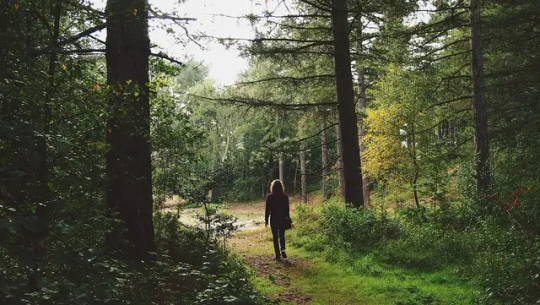
Rainforests, often referred to as the lungs of the Earth, harbor an astonishing diversity of life within their lush canopies and verdant floors. In this blog post, we'll embark on a journey to unravel the captivating world of rainforest biodiversity, exploring facts that showcase the incredible variety of species and the vital role these ecosystems play in maintaining the planet's ecological balance.
1. Biodiversity Hotspots
Rainforests are biodiversity hotspots, hosting an extraordinary concentration of plant and animal species. Despite covering only about 6% of the Earth's land surface, rainforests are home to more than half of the world's plant and animal species. This makes them essential reservoirs of genetic diversity crucial for the survival of various ecosystems.
2. Overwhelming Floral Diversity
The plant life in rainforests is nothing short of astounding. A single hectare of rainforest can contain hundreds of different tree species, each adapted to specific niches within the ecosystem. The intricate interplay of diverse plant life contributes to the formation of complex, multi-layered canopies that support myriad species of insects, birds, and mammals.
3. Endless Array of Insects
Rainforests are insect havens, with estimates suggesting that up to 90% of the world's insect species reside within these ecosystems. From dazzling butterflies to camouflaged stick insects, the sheer variety of insect life is a testament to the intricate web of relationships that sustains the rainforest's biodiversity.
4. Avian Wonderland
The avian diversity in rainforests is a birdwatcher's paradise. Tropical rainforests are home to an estimated 2,000 bird species, representing a staggering 20% of the world's total. From vibrant parrots and toucans to elusive birds of paradise, the avian residents contribute to the symphony of sounds that echoes through the dense vegetation.
5. Arboreal Marvels
Rainforests are synonymous with tree-dwelling species, and the term 'arboreal' takes on a whole new meaning in these ecosystems. From primates like spider monkeys and orangutans to a variety of tree frogs and snakes, the ability to navigate the vertical landscape is a key adaptation for survival in the rainforest.
6. Mammalian Diversity
While big cats like jaguars and elusive species like the ocelot may capture the spotlight, rainforests are also home to an array of smaller mammals, including various species of monkeys, anteaters, and rodents. The diversity of mammals highlights the interconnected roles these creatures play in maintaining the ecological balance of the rainforest.
7. Amphibians and Reptiles
Rainforests are teeming with amphibians and reptiles, many of which display vibrant colors and unique adaptations. The poison dart frogs, with their striking hues, are a well-known example of the dazzling diversity within this group. Meanwhile, reptiles like chameleons and anacondas showcase the incredible adaptations that have evolved over millennia.
8. Below the Surface Aquatic Diversity
Rivers and streams meandering through rainforests harbor a rich aquatic diversity. From colorful fish to elusive amphibians like the glass frog, the waterways contribute significantly to the overall biodiversity of these ecosystems. Aquatic life in rainforests is not limited to the surface, as underwater caves and submerged logs provide unique habitats for various species.
9. Mutualistic Relationships
One of the fascinating aspects of rainforest biodiversity is the prevalence of mutualistic relationships. Orchids, for example, may rely on specific species of bees for pollination, while ants play a crucial role in protecting certain plants from herbivores. These intricate connections highlight the interdependence of species within the rainforest ecosystem.
10. Threats to Rainforest Biodiversity
Despite their ecological importance, rainforests face numerous threats, including deforestation, habitat fragmentation, and climate change. Human activities such as logging and agriculture contribute to the loss of biodiversity and disrupt the delicate balance that sustains these ecosystems. Conservation efforts and sustainable practices are essential to mitigate these threats and protect the incredible biodiversity of rainforests.
The rich tapestry of life woven within rainforests is a testament to the wonders of biodiversity. From the smallest insects to the majestic big cats, each species plays a crucial role in maintaining the health and resilience of these ecosystems. As we marvel at the sheer diversity of life within rainforests, it becomes imperative to recognize our responsibility in preserving these vital habitats for future generations and for the well-being of the planet as a whole.
Guided rainforest tours

Embarking on a journey through a rainforest is like stepping into a realm of unparalleled biodiversity and natural splendor. While the allure of these ecosystems is undeniable, guided rainforest tours offer an enriching experience, providing insights, safety, and a deeper connection to the wonders that inhabit these lush landscapes. In this blog post, we'll explore the benefits and highlights of guided rainforest tours, unraveling the secrets of the forest with the assistance of knowledgeable guides.
1. Expert Guidance
Guided rainforest tours are led by experienced and knowledgeable guides who are well-versed in the intricacies of the ecosystems they navigate. These experts possess an intimate understanding of the flora and fauna, enabling them to share valuable insights, identify unique species, and explain the complex ecological relationships that sustain the rainforest. Their expertise adds a layer of depth to the journey, turning a simple stroll into an educational adventure.
2. Enhanced Wildlife Encounters
Spotting wildlife in a dense rainforest can be challenging, especially for untrained eyes. Guided tours, however, increase the likelihood of memorable wildlife encounters. Guides are adept at recognizing subtle movements, camouflaged creatures, and the calls of elusive birds. Whether it's a troop of howler monkeys or a vibrant poison dart frog, the expertise of guides transforms the rainforest into a living, breathing spectacle.
3. Safety and Navigation
Rainforests can be intricate and challenging to navigate, with dense vegetation, uneven terrain, and hidden hazards. Guided tours prioritize safety, ensuring that participants navigate the terrain with confidence. Guides are familiar with the trails, river crossings, and potential risks, allowing visitors to immerse themselves in the experience without worrying about getting lost or encountering unexpected challenges.
4. Interpretation of Ecology
A guided rainforest tour is not just a walk through nature; it's an opportunity to understand the intricate web of ecological interactions that define these ecosystems. Guides interpret the ecology of the rainforest, explaining the roles of different species, the importance of biodiversity, and the delicate balance that sustains life. This interpretive aspect enhances the tour, fostering a deeper appreciation for the interconnectedness of all living things.
5. Customized Experiences
Guided rainforest tours often offer a degree of customization to cater to the interests and preferences of participants. Whether you're keen on birdwatching, studying plant life, or focusing on specific aspects of the rainforest ecology, guides can tailor the experience to align with your interests. This personalized touch ensures that each participant enjoys a unique and fulfilling exploration of the rainforest.
6. Educational Opportunities
Guided rainforest tours serve as outdoor classrooms, providing a wealth of educational opportunities. Guides share information on the medicinal properties of plants, the adaptations of various species, and the cultural significance of the rainforest to indigenous communities. These educational elements add depth to the experience, transforming the tour into a holistic journey of discovery.
7. Access to Hidden Gems
Rainforests conceal hidden gems that may elude unguided explorers. Guides, with their local knowledge, lead participants to secret waterfalls, secluded viewpoints, and off-the-beaten-path locations that showcase the lesser-known wonders of the rainforest. These hidden gems contribute to a sense of exclusivity, allowing participants to witness the beauty that is often overlooked.
8. Environmental Conservation Awareness
Guided rainforest tours often incorporate elements of environmental conservation awareness. Guides share information about the threats facing rainforests, the importance of sustainable practices, and the role individuals can play in preserving these vital ecosystems. This educational component fosters a sense of environmental responsibility and encourages participants to become advocates for rainforest conservation.
9. Night Tours
Many guided rainforest tours extend into the evening, offering night tours that unveil the mysteries of the nocturnal world. Guided by the expertise of night-savvy guides, participants have the chance to witness bioluminescent organisms, nocturnal mammals, and the enchanting symphony of night sounds. Night tours add a magical dimension to the rainforest experience.
10. Community Engagement
Guided rainforest tours often involve interactions with local communities residing near these natural wonders. Guides facilitate cultural exchanges, allowing participants to learn about traditional practices, folklore, and the symbiotic relationship between indigenous communities and the rainforest. This engagement fosters cultural awareness and promotes responsible tourism practices.
Guided rainforest tours are gateways to a world of discovery, education, and appreciation for the intricate wonders of nature. With expert guides leading the way, participants can delve into the heart of the rainforest, gaining a profound understanding of its ecological significance and cultural richness. These tours not only offer a unique adventure but also contribute to the conservation of these vital ecosystems, ensuring they remain treasures for generations to come.
How to experience a rainforest expedition

Embarking on a rainforest expedition is a transformative journey into one of Earth's most biodiverse and enchanting ecosystems. While the prospect of navigating dense jungles and witnessing exotic wildlife is exhilarating, a successful rainforest expedition requires careful planning and a deep appreciation for the natural world. In this blog post, we'll guide you through the essential steps on how to experience a rainforest expedition that is not only adventurous but also enriching.
1. Research Your Destination
Before embarking on a rainforest expedition, it's crucial to research and choose your destination wisely. Rainforests are scattered across the globe, from the Amazon in South America to the Daintree in Australia and the Congo in Africa. Each rainforest has its unique flora, fauna, and climate. Consider factors such as accessibility, conservation efforts, and the specific biodiversity you wish to encounter.
2. Select the Right Time to Visit
Rainforests often experience distinct wet and dry seasons. The timing of your expedition can significantly impact your experience. While the wet season brings lush greenery and vibrant life, it also means heavier rainfall and more challenging trekking conditions. The dry season may offer better visibility but could result in a less vibrant landscape. Consider your preferences and the activities you wish to undertake when deciding on the timing of your expedition.
3. Choose a Reputable Tour Operator
Opting for a guided rainforest tour with a reputable operator is a wise decision for a safe and enriching experience. Look for operators with experienced guides, a commitment to sustainable practices, and a strong emphasis on environmental conservation. Reviews and testimonials from previous participants can provide insights into the quality of their services.
4. Pack Appropriately
Packing for a rainforest expedition requires careful consideration of the climate, terrain, and potential challenges you may encounter. Essential items include lightweight, moisture-wicking clothing, sturdy hiking boots, a good quality rain jacket, a hat, and sunscreen. Don't forget insect repellent, a first aid kit, and any prescription medications you may need. A reliable camera or binoculars will enhance your ability to observe and capture the wonders of the rainforest.
5. Prepare Physically
Rainforest expeditions often involve trekking through challenging terrain, including uneven paths, muddy trails, and steep slopes. Prior to your journey, engage in physical activities that build strength and endurance.
Read the full article
0 notes
Text
Warm travel destinations in March: The top 5 most popular sun destinations for spring 2024

The first month of spring is the perfect time for a long-awaited vacation. But where? You can find the best suggestions in our tips for warm travel destinations in March 2024.
We recently said goodbye to summer and are already longing for the beach and sun. But our favorite season is so far away! If you are already planning your next vacation and looking for the perfect place to enjoy pleasant temperatures, here are the top 5 warm travel destinations for March that you should book now.
Table of contents
- Warm travel destinations March 2024: The most beautiful vacation spots with guaranteed sunshine
- Seychelles
- Thailand
- Ras al-Khaimah
- Curacao
- Mexico
Warm travel destinations March 2024: The most beautiful vacation spots with guaranteed sunshine

Photo: Pexels/Pixabay
In spring it is often still gray and cool and this is exactly the right time for a holiday to escape the cold and travel in the off-season. You can quietly enjoy the warm weather without seeing the crowds of tourists that usually occur in the winter and summer months. Isn't this the perfect combination? Read on to find out the best places to travel in March. All of our suggestions have one thing in common: it is warm in March!
Seychelles

Photo: Pixabay
The beautiful archipelago is worth a visit with its white sandy beaches. Due to the tropical climate, the Seychelles enjoy hot temperatures and lots of sunshine all year round. Spring is one of the most beautiful seasons in the Seychelles and therefore without a doubt one of the best destinations for a beach holiday in March. The average temperature at this time of year is a hot 28°C, with highs of 31°C in the midday heat.
While enjoying the best weather, you can consider a variety of activities. March is also the best time of year to watch turtles hatch and hatchlings crawling out of their nests into the sea.
Thailand
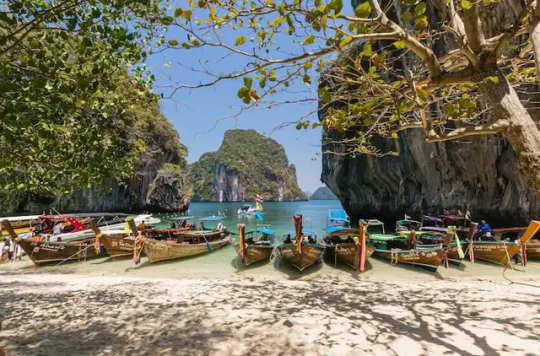
Photo: Erik Karits/ Pexels
March begins the hot season in Thailand and with an average temperature of 32°C, it is the perfect time for a relaxing beach holiday as tourist numbers are lower compared to the peak season months of December to February. Another reason to travel in spring is the falling prices of accommodation and domestic flights, making vacations even cheaper at this time of year.
Magnificent beaches, cultural festivals, outdoor activities, wildlife and nature, and the opportunity to experience the best of Thai cuisine and culture can be enjoyed in Phuket, Krabi, Koh Samui, and more.
Ras al-Khaimah

Photo: Marjan/ Pexels
A trip to the capital of the Emirate of Ras al Khaimah in the United Arab Emirates in March is worthwhile for several reasons. With daytime temperatures between 20°C and 30°C, it is neither too hot nor too cold for outdoor activities. One can enjoy the beautiful beaches of the Arabian Gulf without the scorching summer heat.
Ras al Khaimah offers numerous family-friendly activities and attractions and is ideal for a family holiday. Hiking and mountain biking in the Hajar Mountains, local festivals and historical and cultural sites and much more the city can offer you.
And since there are fewer tourists this time of year, you can find cheaper accommodation.
Curacao
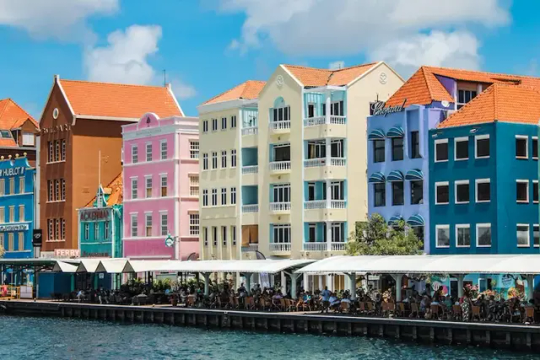
Photo: Taylen Lundequam/Pexels
March is the dry season in Curaçao, so you can expect sunny and warm weather with temperatures between 24°C and 32°C. The beautiful island in the southern Caribbean is known for its beautiful beaches and crystal clear waters.
If you like underwater adventures, then Curaçao is for you. Enjoy some of the best snorkeling and diving in the Caribbean to view the colorful coral reefs and a variety of marine life.
In March, various cultural events and festivals take place on the island, such as Carnival. Curaçao offers unique natural landscapes, historical sites and opportunities for hiking and bird watching.
Mexico
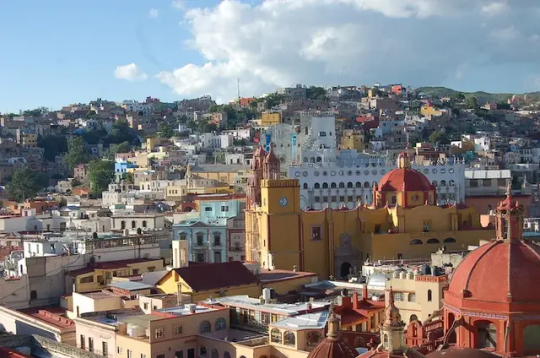
Photo: Israeljam22/ Pixabay
Spring and especially March is the best time not only to visit the beaches in the south, but also to enjoy carnivals, music festivals, beach parties and Mayan dance performances at the ruins of Chichen Itza. This is also the best time to spot the whales that migrate along Mexico's coast. Humpback, blue and gray whales appear at this time.
See the sights of central and northern Mexico, take a canal boat ride in Xochimilco, and experience grand adventures like ziplining over canyons.
The temperatures in Cancun, the popular seaside resort, reach up to 30 °C and are ideal for a relaxing stay on the beach.
So choose one of these top travel destinations and pack your bags for the best spring vacation!
Read the full article
0 notes
Text
Exploring the Green Horizon: Eco-Friendly Travel Destinations


As the world becomes increasingly aware of the environmental impact of travel, a new wave of eco-conscious wanderers is seeking destinations that not only captivate the senses but also prioritize sustainability. In this guide, we embark on a journey to discover eco-friendly travel destinations that allow you to explore the wonders of the world while minimizing your carbon footprint. From lush rainforests to pristine coastlines, these destinations are beacons of sustainable tourism, inviting travelers to tread lightly and leave a positive impact.
Eco-Friendly Travel Destinations

1. Costa Rica: A Haven of Biodiversity
Costa Rica, often heralded as a pioneer in eco-tourism, is a haven for nature lovers. With a commitment to conservation and sustainable practices, this Central American gem boasts lush rainforests, diverse ecosystems, and an abundance of wildlife. Explore the Monteverde Cloud Forest, where canopy walkways provide a unique perspective on the flora and fauna, or venture to Manuel Antonio National Park for a chance to witness capuchin monkeys and sloths in their natural habitat.
2. Iceland: Geothermal Wonders and Renewable Energy
Iceland's otherworldly landscapes offer a unique blend of natural wonders and a commitment to sustainable energy. Geothermal hot springs, cascading waterfalls, and the mesmerizing Northern Lights make Iceland a magnet for eco-conscious travelers. Additionally, the country harnesses its abundant geothermal resources for renewable energy, providing a model for sustainable practices. Dive into the rejuvenating waters of the Blue Lagoon or embark on a road trip to witness the breathtaking beauty of Iceland's untamed wilderness.
3. Bhutan: The Kingdom of Gross National Happiness
Bhutan, nestled in the eastern Himalayas, has gained recognition for its holistic approach to development, prioritizing Gross National Happiness over GDP. With a focus on preserving its unique culture and pristine environment, Bhutan limits the number of tourists through a "high-value, low-impact" policy. Trek through the scenic Paro Valley, visit ancient monasteries like Tiger's Nest, and immerse yourself in a nation that values sustainability as a cornerstone of its identity.
4. New Zealand: Pioneering Sustainable Tourism
New Zealand's commitment to preserving its natural beauty has positioned it as a pioneer in sustainable tourism. With a strong emphasis on conservation efforts, the country encourages responsible exploration of its diverse landscapes. Hike through Fiordland National Park's majestic fjords, encounter unique wildlife on the Otago Peninsula, and experience the Māori culture, deeply rooted in a connection to the land. New Zealand showcases how a balance between tourism and environmental preservation is not only possible but essential.
5. Norway: Fjords, Glaciers, and Clean Energy
Norway's dramatic fjords, expansive glaciers, and commitment to clean energy make it a prime destination for eco-conscious travelers. The country's extensive network of electric vehicle charging stations reflects its dedication to sustainable transportation. Cruise through the iconic Geirangerfjord, witness the Northern Lights in Tromsø, and explore the Arctic wilderness in Svalbard—all while supporting a nation dedicated to minimizing its ecological footprint.
6. Patagonia: Pristine Wilderness at the End of the Earth
Straddling the southernmost regions of Chile and Argentina, Patagonia is a vast wilderness of glaciers, mountains, and untouched landscapes. With a focus on conservation, eco-friendly lodges, and responsible trekking practices, Patagonia invites travelers to experience the raw beauty of nature while preserving its delicate ecosystems. Hike through Torres del Paine National Park, navigate the Beagle Channel, and witness the majesty of the Perito Moreno Glacier in this remote corner of the world.
7. Palau: Coral Reefs and Marine Conservation
Palau, an archipelago in the western Pacific Ocean, is a paradise for marine enthusiasts committed to sustainable tourism. Recognized as a UNESCO Biosphere Reserve, Palau places a strong emphasis on coral reef conservation and responsible diving practices. Snorkel in the crystalline waters of Jellyfish Lake, witness the vibrant underwater life of the Rock Islands, and support initiatives that aim to protect Palau's marine biodiversity.
8. Sweden: Sustainable Cities and Natural Retreats
Sweden seamlessly combines eco-friendly urban living with pristine natural retreats. Stockholm, known for its commitment to green spaces and renewable energy, exemplifies sustainable city living. Beyond the urban landscape, Sweden offers vast forests, archipelagos, and the Northern Lights in the Swedish Lapland. Immerse yourself in the culture of "lagom"—finding balance and moderation—while contributing to a nation that prioritizes ecological harmony.
9. Ecuador: Galápagos Islands and Responsible Tourism
Ecuador, home to the Galápagos Islands, is a beacon of responsible tourism in South America. Strict regulations and conservation efforts aim to protect the unique flora and fauna that inspired Charles Darwin's theory of evolution. Explore the volcanic landscapes, encounter giant tortoises, and snorkel among diverse marine species while contributing to sustainable practices that preserve the Galápagos for generations to come.
10. Kenya: Wildlife Conservation and Community Empowerment
Kenya's commitment to wildlife conservation and community empowerment makes it an exemplary destination for eco-friendly travel. The Maasai Mara National Reserve, known for its annual migration of wildebeest, offers an immersive safari experience that supports conservation initiatives and local communities. Engage in responsible wildlife viewing, witness the Great Rift Valley, and contribute to Kenya's efforts to protect its natural heritage.
Eco-friendly travel destinations not only offer breathtaking landscapes and cultural richness but also serve as models for responsible tourism. By choosing these destinations, travelers become stewards of the environment, supporting initiatives that preserve the Earth's natural wonders for future generations. Let your wanderlust be guided by a commitment to sustainability, and embark on a journey that leaves a positive impact on the planet.
Sustainable travel tips

In an era where environmental consciousness is paramount, sustainable travel has emerged as a crucial focus for conscientious globetrotters. Whether you're a seasoned traveler or planning your first eco-friendly adventure, incorporating sustainable practices into your journey is not only responsible but also enriching. Join us as we explore a myriad of sustainable travel tips that empower you to minimize your environmental impact while maximizing your cultural experiences.
1. Choose Eco-Friendly Accommodations: Sleeping Sustainably
One of the first steps towards sustainable travel is selecting accommodations that align with eco-friendly practices. Opt for hotels and resorts with green certifications, such as LEED or EarthCheck. Consider boutique eco-lodges, guesthouses, or homestays that prioritize sustainable initiatives. These establishments often implement energy-saving measures, waste reduction programs, and support local communities.
2. Embrace Slow Travel: Less Rush, More Connection
Slow travel is a concept that encourages a deeper, more immersive experience by spending more time in fewer destinations. By reducing your pace, you not only contribute to a more relaxed and meaningful journey but also decrease your carbon footprint. Choose fewer destinations for a single trip, allowing you to savor each moment, connect with locals, and appreciate the nuances of the culture and environment.
3. Pack Light and Smart: Sustainable Suitcase Essentials
Packing smartly not only makes your journey more convenient but also contributes to sustainability. Opt for a reusable water bottle, eco-friendly toiletries in refillable containers, and a durable, reusable shopping bag. Pack versatile, climate-appropriate clothing and prioritize items made from sustainable materials. By packing light, you reduce the fuel consumption of transportation and leave room for meaningful souvenirs.
4. Choose Sustainable Transportation: From A to B, Consciously
Transportation is a significant contributor to your travel footprint. Opt for eco-friendly modes of transportation such as trains, buses, or bicycles when exploring a destination. If air travel is unavoidable, consider non-stop flights to reduce fuel consumption and offset your carbon emissions through reputable carbon offset programs. Once at your destination, explore on foot, use public transportation, or rent electric vehicles.
5. Support Local Businesses: Economic Empowerment
Supporting local businesses is a cornerstone of sustainable travel. Choose locally-owned hotels, dine in family-owned restaurants, and purchase souvenirs from local artisans. This not only fosters a more authentic travel experience but also contributes directly to the economic well-being of the communities you visit. Engage with locals, learn about their culture, and be mindful of the impact your tourism dollars can have on their livelihoods.
6. Eat Locally and Sustainably: Tasting the Culture Responsibly
Sampling local cuisine is an integral part of travel, and doing so sustainably can be a rewarding experience. Choose restaurants that prioritize locally sourced, organic ingredients. Avoid dining at establishments that serve endangered species or contribute to deforestation. Embrace plant-based or vegetarian options to reduce your carbon footprint associated with meat production.
7. Respect Local Culture and Environment: Cultural and Environmental Etiquette
Respecting the local culture and environment is fundamental to sustainable travel. Research and adhere to the cultural norms of the destinations you visit. Support initiatives that promote environmental conservation and follow Leave No Trace principles when exploring natural landscapes. Be mindful of wildlife habitats, avoid single-use plastics, and participate in local conservation efforts such as beach clean-ups or tree planting.
8. Conserve Energy and Water: A Responsible Retreat
Conserve energy and water during your travels to minimize your environmental impact. Turn off lights and electronics when not in use, and opt for energy-efficient accommodations. Practice water conservation by taking shorter showers, reusing towels, and reporting any leaks. Small actions collectively make a significant difference in preserving resources and promoting sustainable tourism.
9. Offset Your Carbon Footprint: Investing in Environmental Stewardship
Offsetting your carbon footprint is a proactive step towards responsible travel. Many reputable organizations offer carbon offset programs that fund projects like renewable energy initiatives, reforestation, or methane capture. Calculate your carbon footprint for your travel activities and invest in offset programs that align with your values, contributing to a more sustainable planet.
10. Educate Yourself and Others: Becoming a Sustainability Advocate
Knowledge is a powerful tool for change. Educate yourself on sustainable travel practices and share this knowledge with fellow travelers. Encourage friends and family to adopt eco-friendly habits, and consider volunteering for environmental or community projects during your travels. By becoming a sustainability advocate, you contribute to a collective effort in preserving the beauty of our planet for generations to come.
Sustainable travel is not a sacrifice but a transformative journey that allows you to explore the world responsibly while leaving a positive impact. By incorporating these sustainable travel tips into your adventures, you become a conscious traveler, contributing to the well-being of the destinations you explore and fostering a global community committed to preserving our planet's beauty. Bon voyage on your sustainable sojourn!
Eco-conscious vacation spots

In an era where environmental awareness is at the forefront of global consciousness, the pursuit of eco-conscious vacation spots has become a top priority for discerning travelers. This guide invites you to explore destinations that not only captivate with their natural beauty but also demonstrate a commitment to sustainable practices. Discover the allure of these nature-centric havens, where every moment is an opportunity to tread lightly on the Earth.
1. Costa Rica: Pioneering Eco-Tourism
Nestled in the heart of Central America, Costa Rica has long been celebrated as a pioneer in eco-tourism. With its lush rainforests, diverse ecosystems, and abundant wildlife, the country beckons eco-conscious travelers. Explore the Monteverde Cloud Forest, where suspended bridges provide an immersive experience in the canopy, or witness sea turtles nesting on the pristine beaches of Tortuguero National Park. Costa Rica's commitment to conservation is evident in its national parks, protected areas, and sustainable tourism initiatives.
2. Vancouver Island, Canada: Pacific Paradise
For those seeking an eco-conscious retreat, Vancouver Island off the coast of British Columbia offers a pristine haven. Known for its diverse landscapes, from temperate rainforests to rugged coastlines, the island provides opportunities for sustainable adventures. Explore the old-growth forests of Cathedral Grove, witness orcas and humpback whales in the Salish Sea, and support local eco-friendly accommodations. Vancouver Island showcases Canada's commitment to environmental preservation and responsible tourism.
3. Iceland: A Symphony of Sustainability
Iceland, with its otherworldly landscapes and commitment to clean energy, stands as a shining example of sustainable tourism. The country harnesses geothermal power for heating and electricity, minimizing its carbon footprint. Explore the mesmerizing landscapes of the Golden Circle, unwind in the Blue Lagoon's geothermal waters, and embark on eco-friendly excursions to witness the Northern Lights or traverse glaciers. Iceland's dedication to preserving its untouched beauty makes it an ideal destination for eco-conscious travelers.
4. Bhutan: Gross National Happiness and Sustainability
Nestled in the Eastern Himalayas, Bhutan is not only renowned for its breathtaking landscapes but also for its unique approach to development—measured by Gross National Happiness rather than GDP. The kingdom's commitment to sustainability is evident in its "high-value, low-impact" tourism policy, ensuring that visitors experience the pristine environment responsibly. Trek to the Tiger's Nest monastery, immerse yourself in traditional festivals, and witness the vibrant culture of a nation deeply connected to its natural heritage.
5. New Zealand: A Tapestry of Green Tourism
New Zealand's commitment to preserving its natural beauty and fostering green tourism makes it an eco-conscious traveler's dream. From the fjords of Milford Sound to the geothermal wonders of Rotorua, New Zealand showcases a tapestry of landscapes. Engage in sustainable activities such as hiking the Abel Tasman Coast Track, exploring glowworm caves, and supporting local conservation projects. The country's "Tiaki Promise" encourages responsible travel, ensuring that visitors leave only footprints and take only memories.
6. Patagonia, Chile and Argentina: Wilderness Untouched
Straddling the southernmost regions of Chile and Argentina, Patagonia is a vast wilderness that captivates with its untouched landscapes. With a commitment to conservation, eco-friendly lodges, and responsible trekking practices, Patagonia invites travelers to experience the raw beauty of nature. Hike through Torres del Paine National Park, cruise through the Beagle Channel, and witness the Perito Moreno Glacier—a testament to the region's dedication to environmental preservation.
7. Palau: Coral Reefs and Marine Conservation
In the western Pacific Ocean, Palau emerges as a haven for marine enthusiasts committed to sustainable tourism. Recognized as a UNESCO Biosphere Reserve, Palau places a strong emphasis on coral reef conservation and responsible diving practices. Snorkel in the crystalline waters of Jellyfish Lake, explore the Rock Islands, and support initiatives that protect Palau's marine biodiversity. This Micronesian archipelago is a testament to the delicate balance between tourism and environmental preservation.
8. Norway: Fjords, Glaciers, and Green Living
Norway's dramatic fjords, expansive glaciers, and commitment to green living make it a prime destination for eco-conscious travelers. The country's extensive network of electric vehicle charging stations reflects its dedication to sustainable transportation. Cruise through the iconic Geirangerfjord, witness the Northern Lights in Tromsø, and explore the Arctic wilderness in Svalbard—all while supporting a nation dedicated to minimizing its ecological footprint.
9. Tasmania, Australia: Wilderness Conservation
Tasmania, an island state of Australia, is a sanctuary for wilderness conservation and eco-conscious exploration. Home to diverse ecosystems, including ancient rainforests and pristine coastlines, Tasmania invites travelers to engage in sustainable practices. Explore the Overland Track in Cradle Mountain-Lake St Clair National Park, encounter unique wildlife, and support local initiatives that focus on preserving the island's natural heritage. Tasmania's commitment to sustainable tourism ensures that its beauty endures for generations.
10. Kenya: Wildlife Conservation and Community Empowerment
Kenya's commitment to wildlife conservation and community empowerment makes it an exemplary destination for eco-conscious travel. The Maasai Mara National Reserve, known for its annual migration of wildebeest, offers an immersive safari experience that supports conservation initiatives and local communities. Engage in responsible wildlife viewing, witness the Great Rift Valley, and contribute to Kenya's efforts to protect its natural heritage.
These eco-conscious vacation spots not only showcase the beauty of the natural world but also exemplify a commitment to sustainable practices. Whether it's the lush rainforests of Costa Rica, the pristine fjords of Norway, or the vibrant coral reefs of Palau, each destination invites travelers to become stewards of the environment.
Read the full article
0 notes